Birds of Hawaii
Photos of Hawaiian birds are arranged here in the taxonomic order of Clements 2016 but are divided into three groups, endemic species and subspecies, indigenous and introduced birds, and vagrants. Many of the endemic birds of the Big Island were seen and photographed on day tours guided by the best photographer of Hawaiian birds, Jack Jeffrey. Some of the endemics on Kauai were similarly seen on day tours guided by David Kuhn. I recommend both of them enthusiastically. A few of the oldest pictures were taken on film and digitized ("1990s"); the rest were taken on three trips to Hawaii in 2005, 2009, and 2017.
This present version shows 16 endemic bird species or (in the case of Pueo: subspecies), 39 indigenous or introduced species, and one vagrant. I hope to improve the quality of the pictures and the variety of species photographed in future trips.
All pictures are copyrighted and should not be used without permission.
Endemic Birds of Hawaii
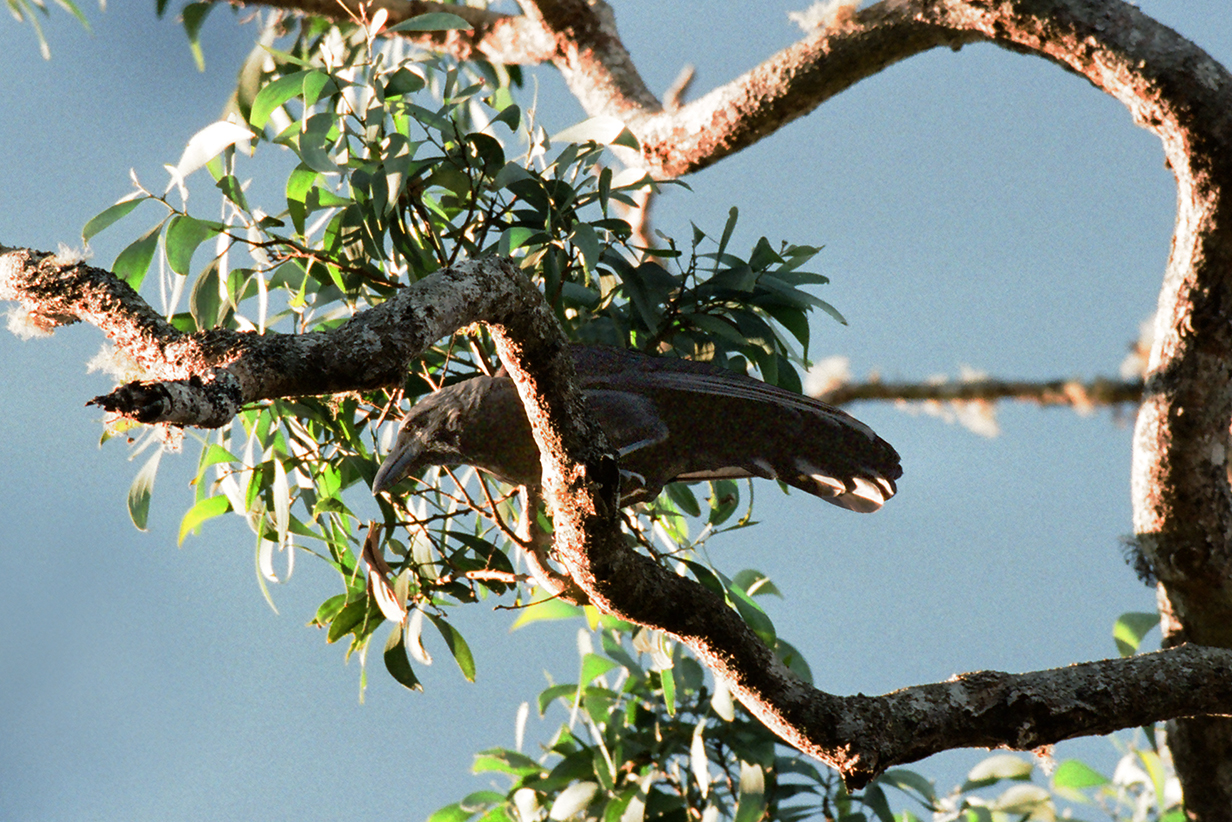
Hawaiian crow (This bird sighting means more to me than any other -- Hawaiian crows are now extinct in the wild. I saw 3 of the last 4 wild birds in the late 1990s. This not-very-good picture comes from the old days of film. Hawaiian crows were unusually intelligent even for corvids -- e. g., I remember remarkably varied vocalizations.)
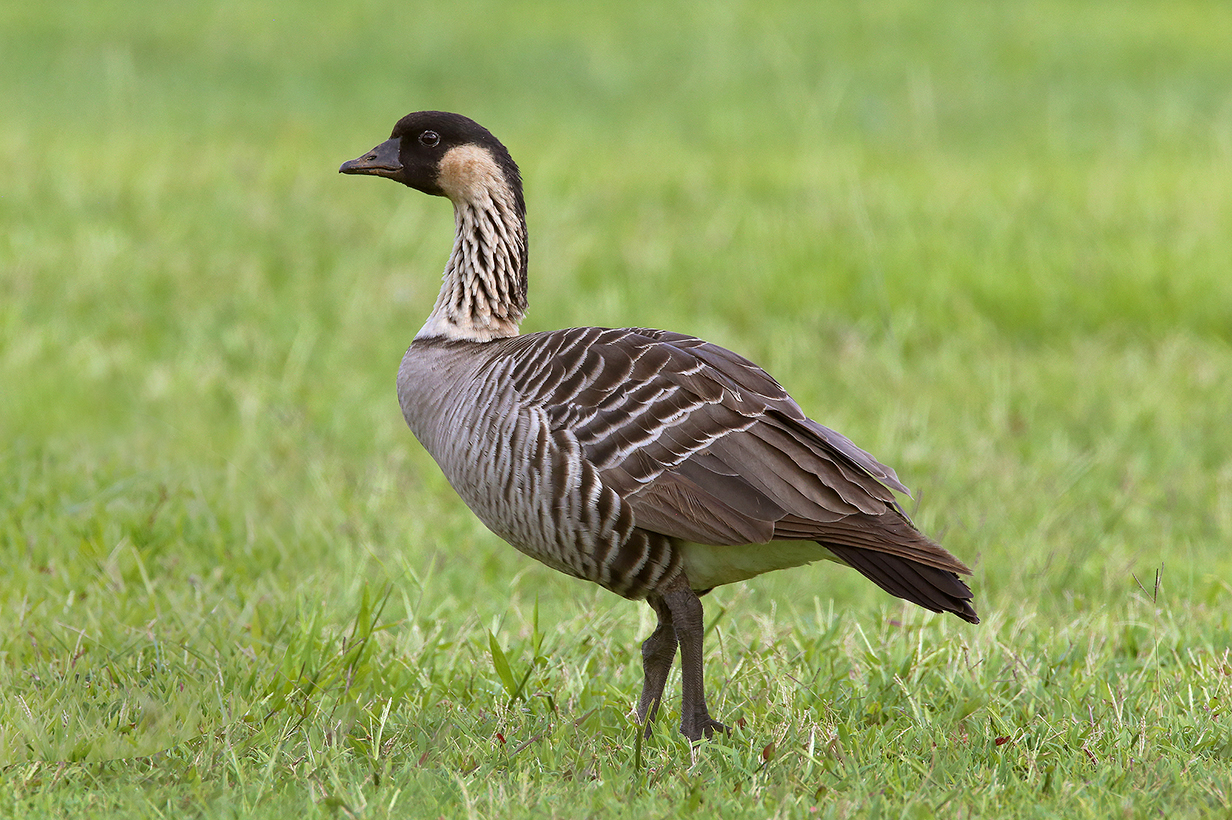
Hawaiian goose -- Nene (Near Kilauea Point National Wildlife Refuge, Kauai)
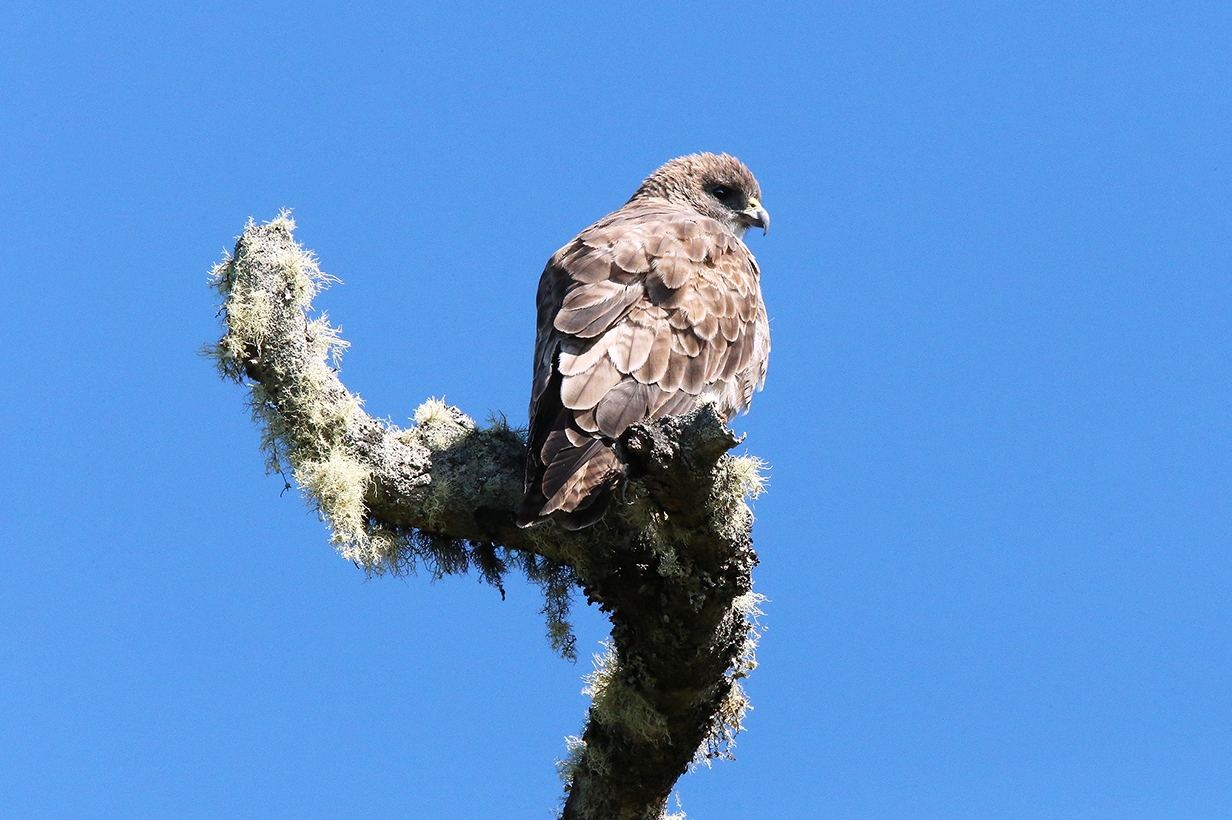
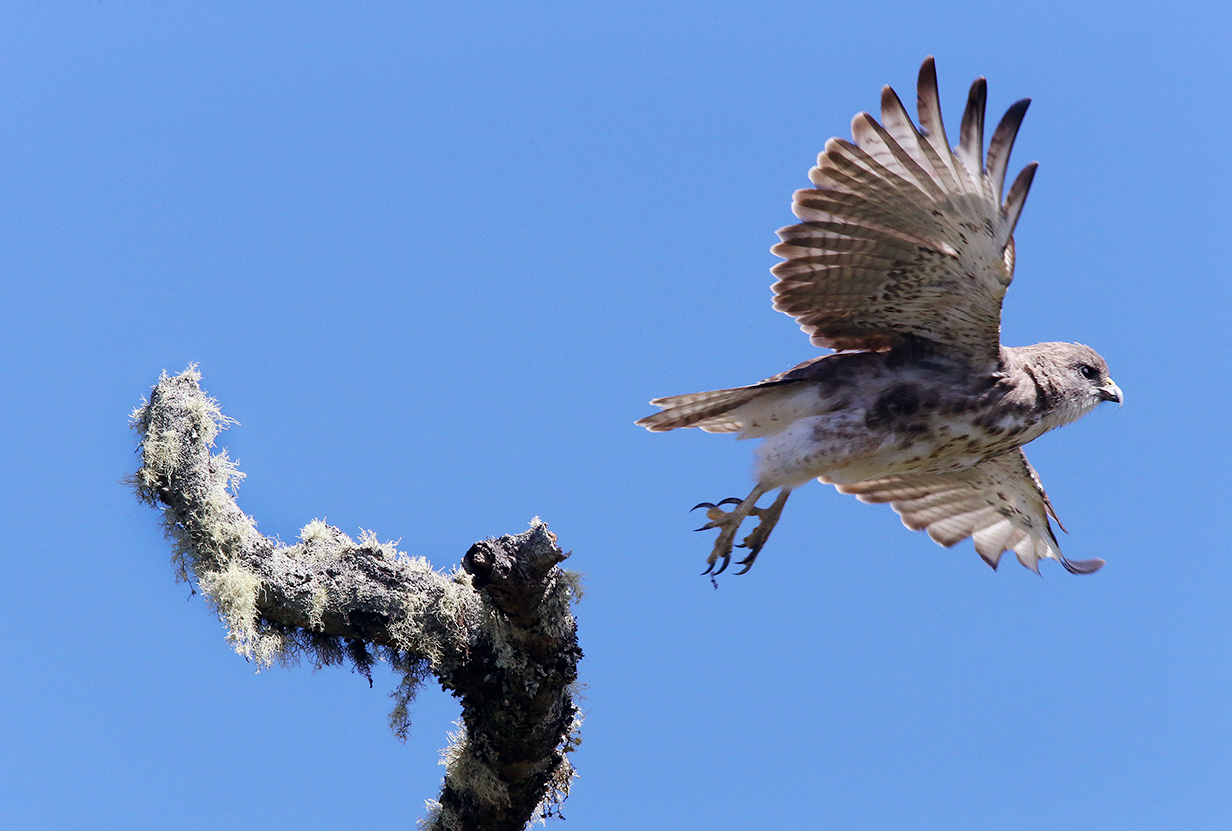
Io (light morph female, Hakalau NWR, June 2017)

Hawaiian coot (Fulica alai, split from American and Eurasian coot; Hanalei NWR, Kauai, June 2017)
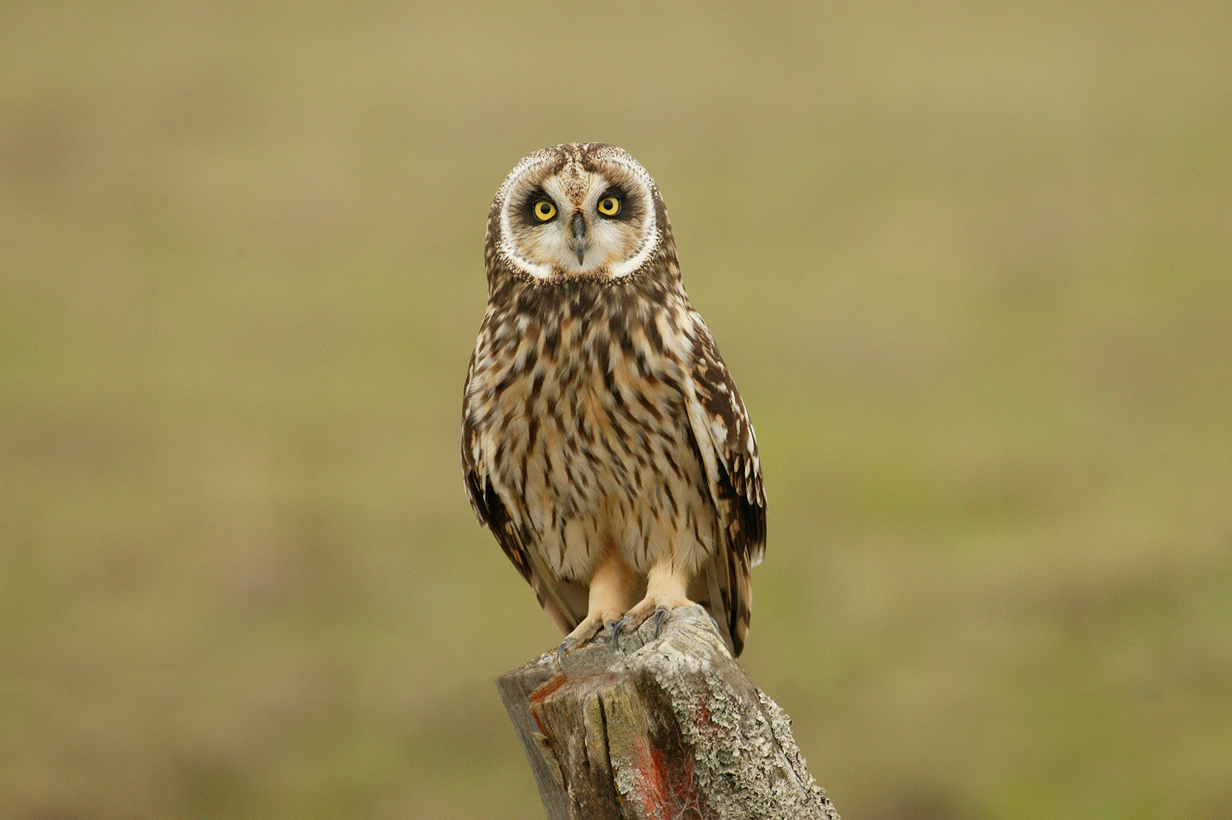

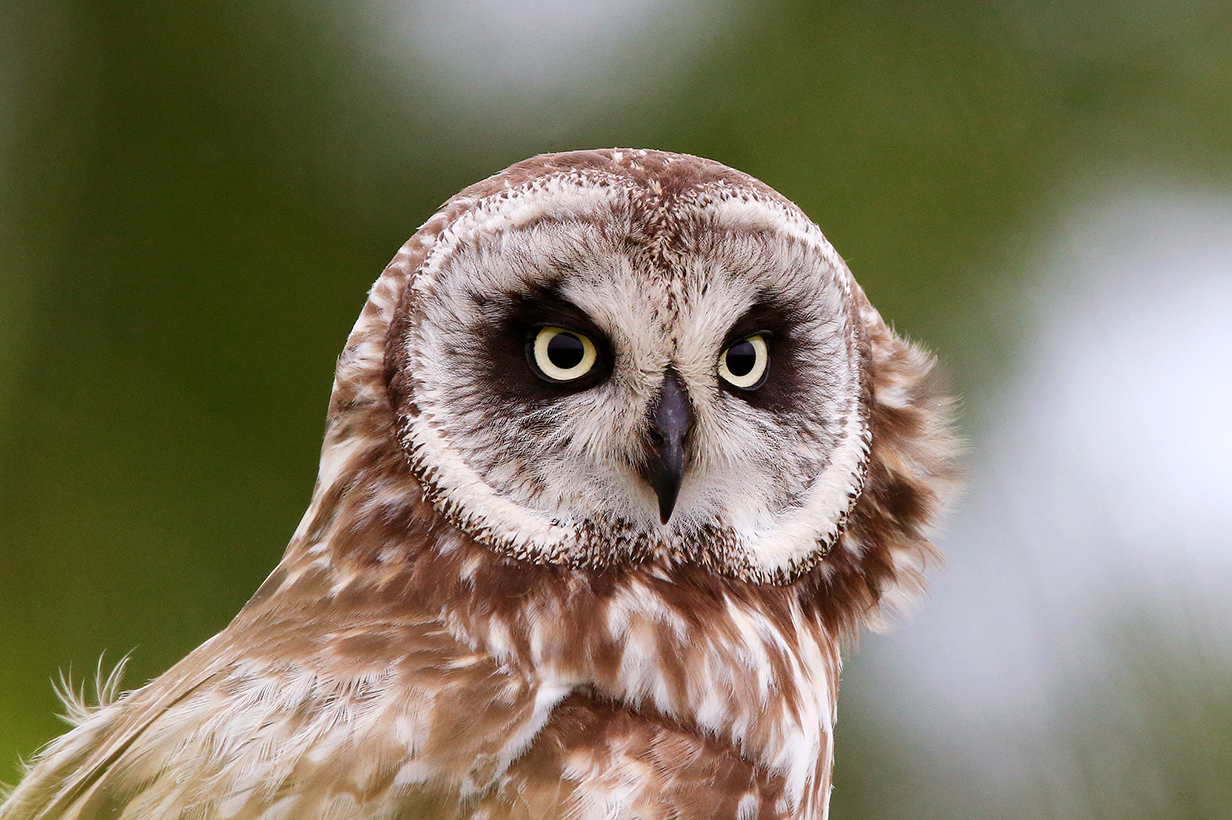
Pueo (Hawaiian endemic race of Short-eared owl: Saddle road, Big Island, June 2017)
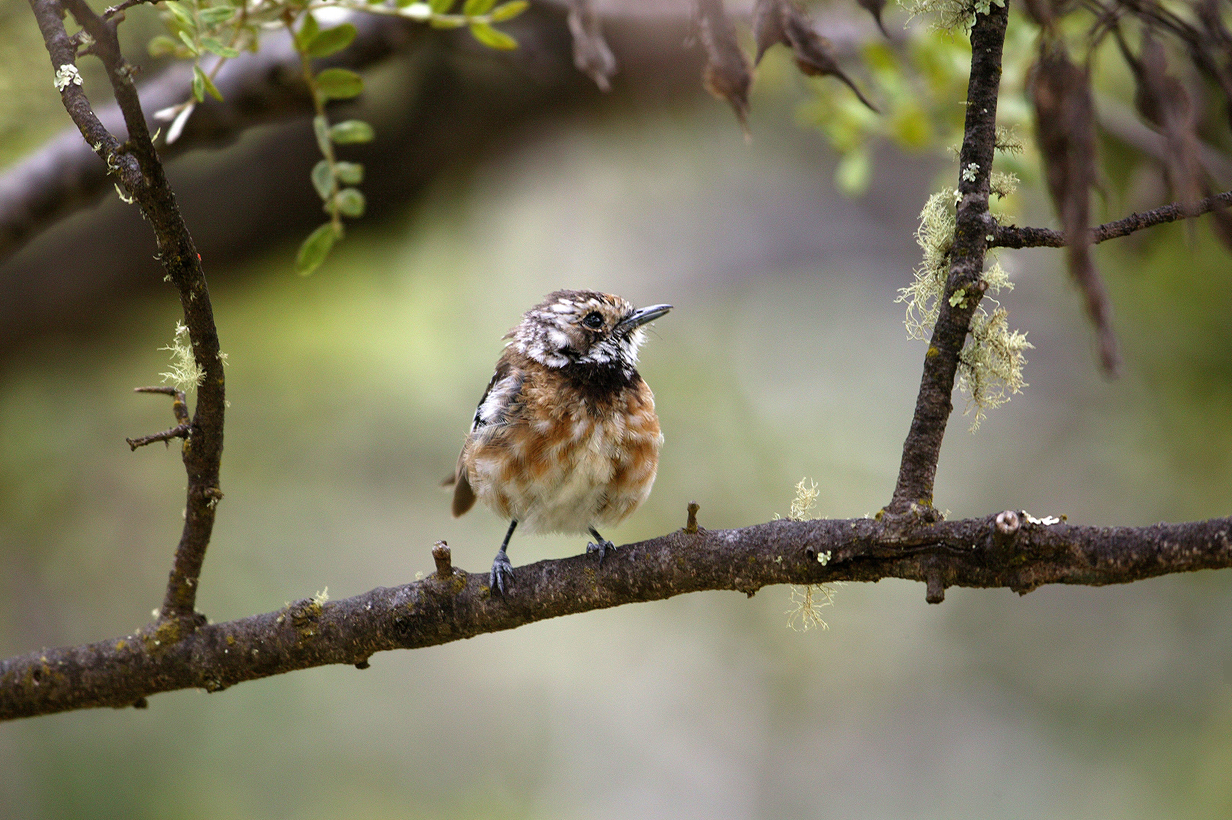
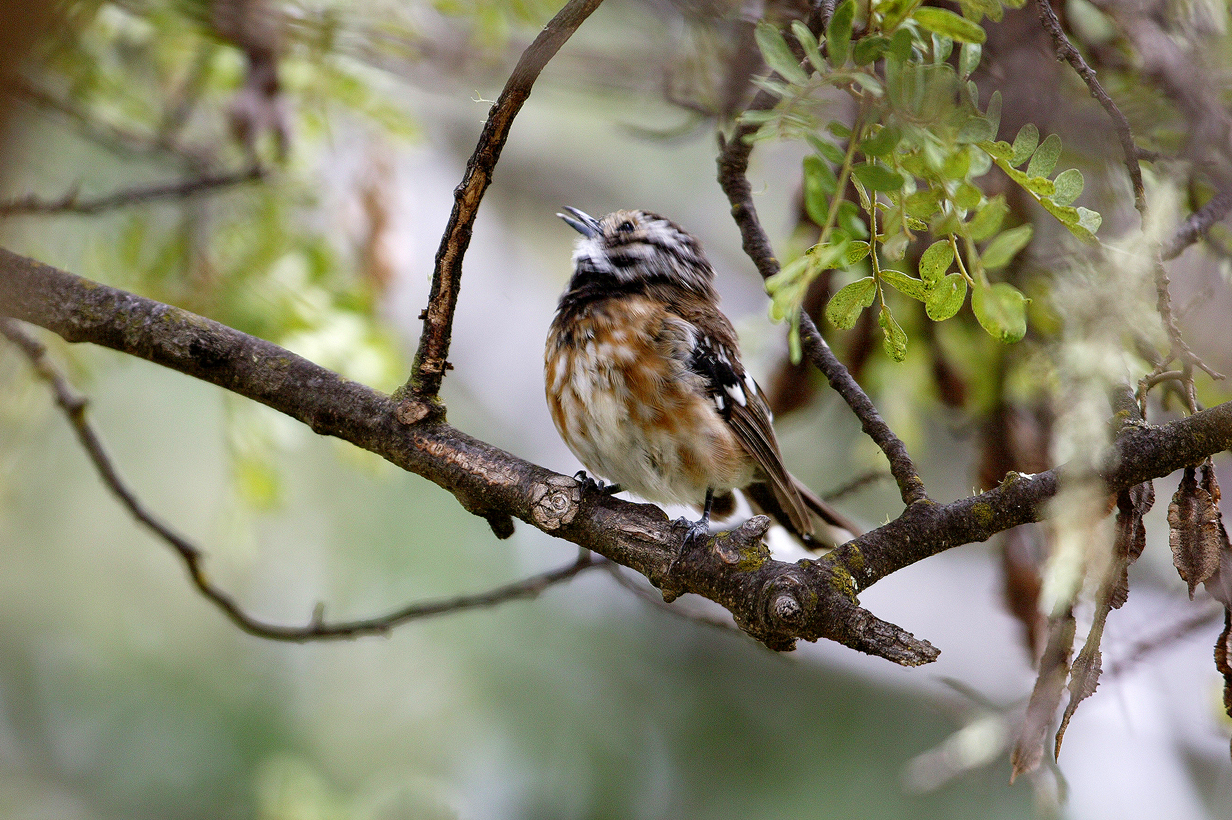 Hawaii elepaio (Hakalau NWR, January 2009)
Hawaii elepaio (Hakalau NWR, January 2009)
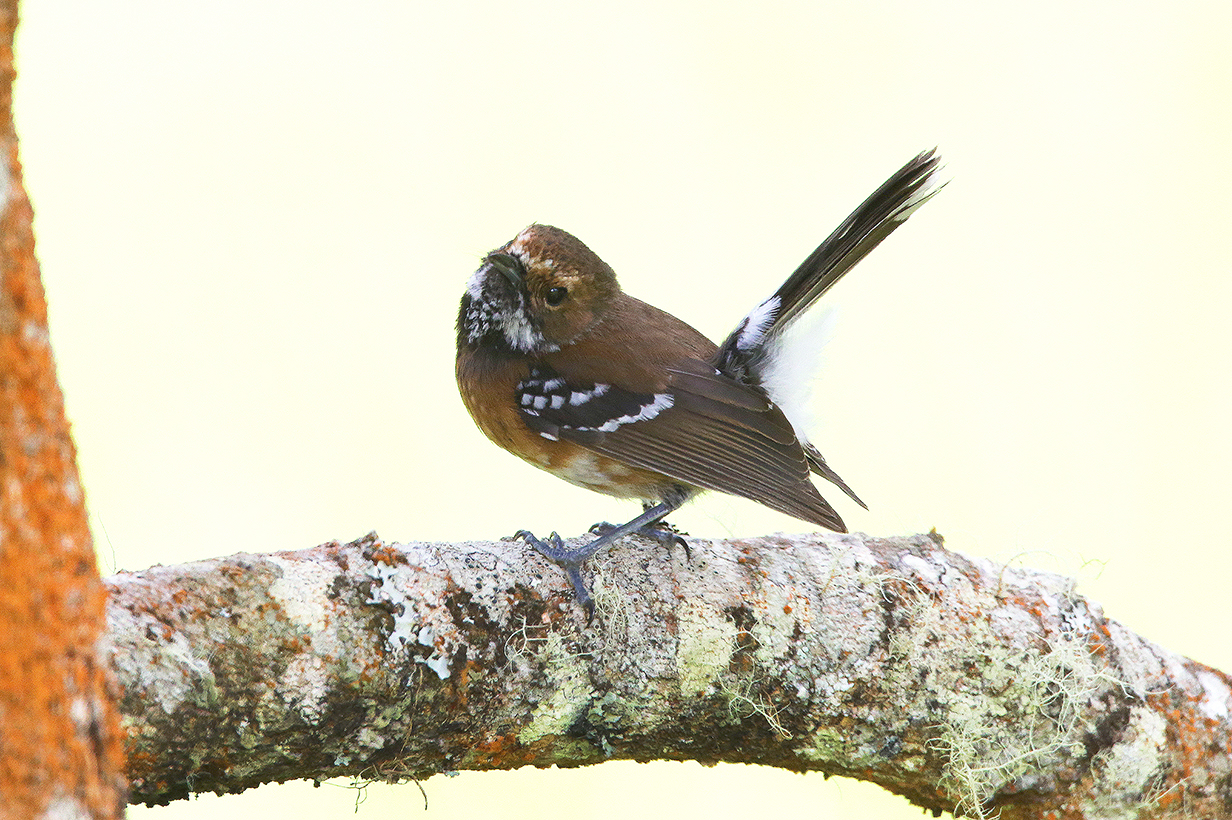
Hawaii elepaio (Hakalau NWR, June 2017)
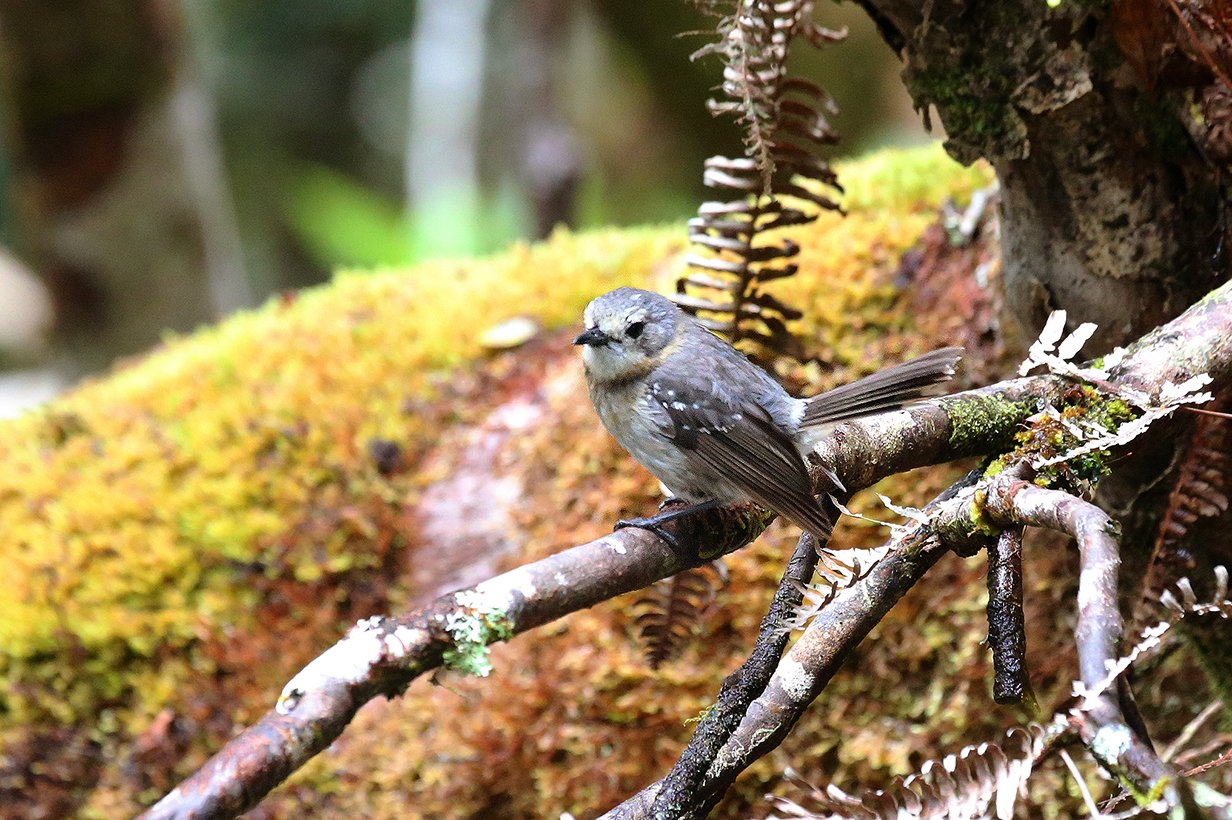
Kauai elepaio (adult, Pihea/Alakai Swamp Trail, June 2017)
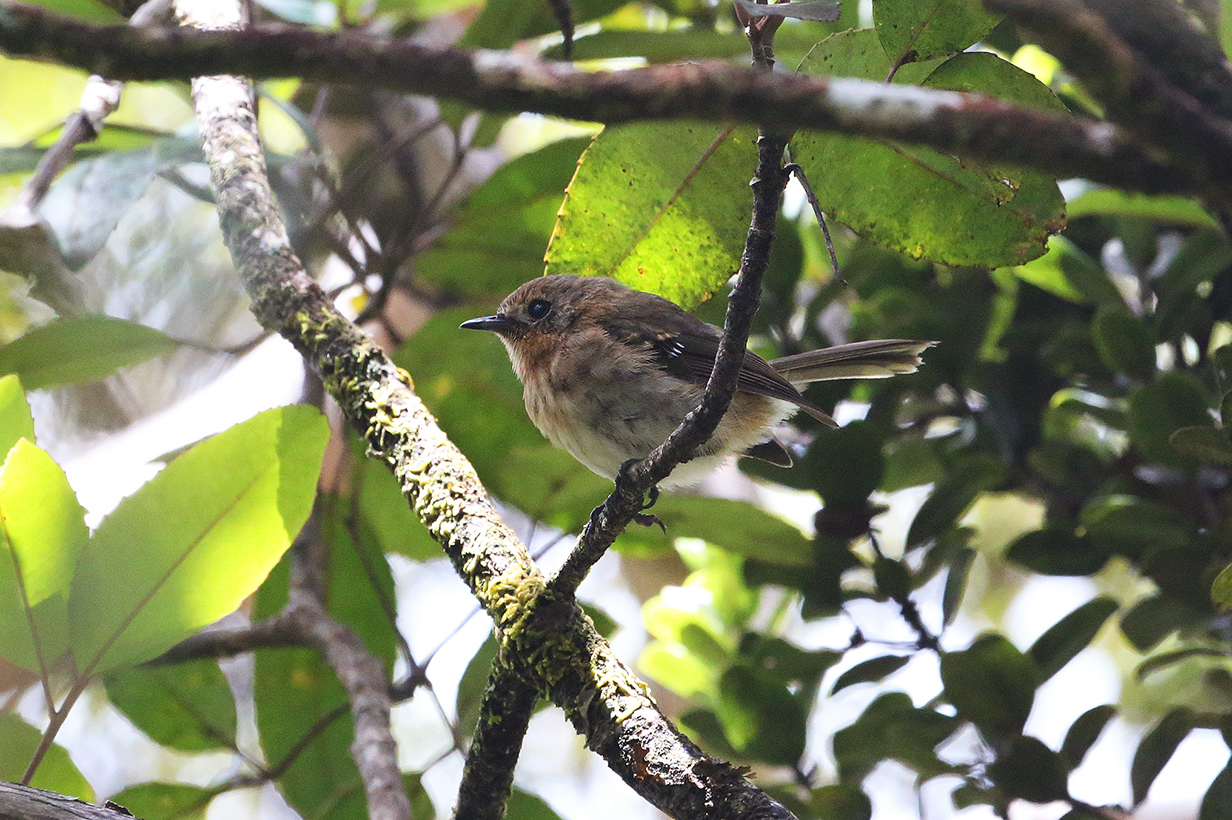
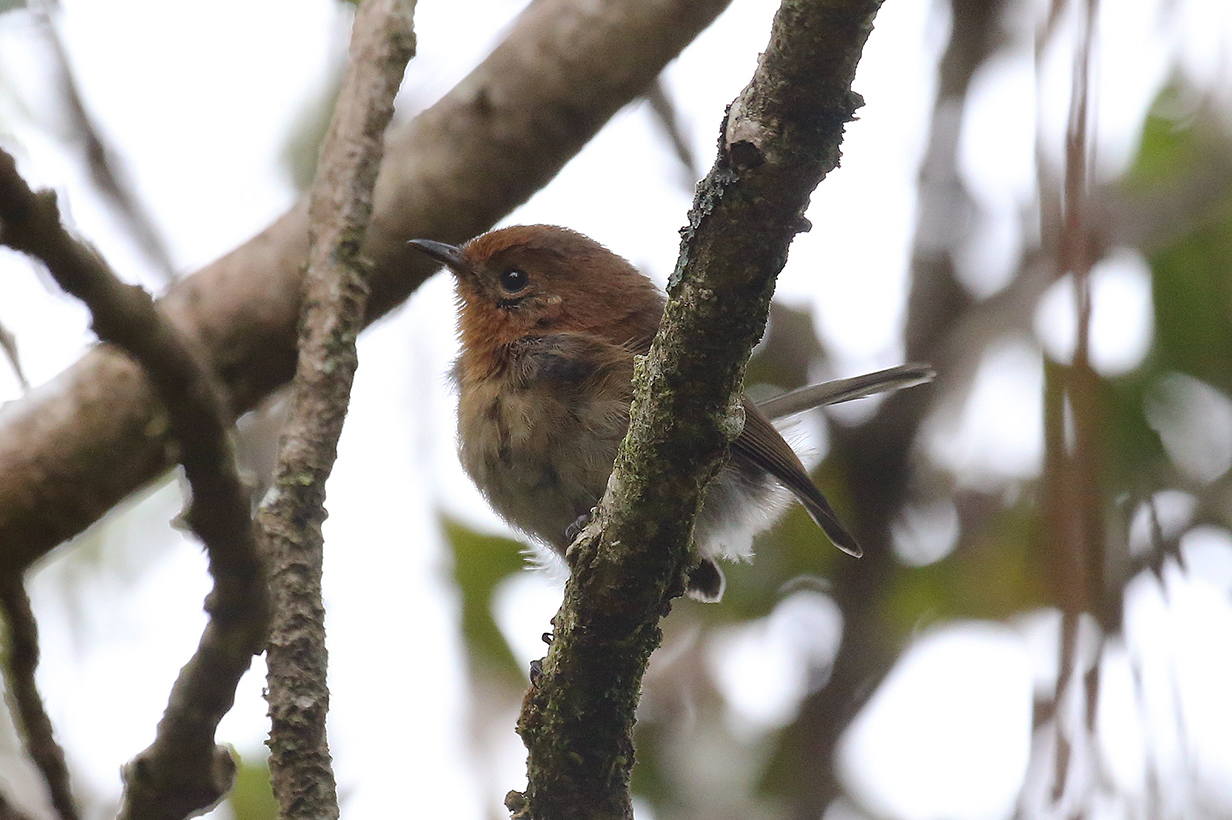
Kauai elepaio (subadult and juvenile: Pihea/Alakai Swamp Trail, June 2017)
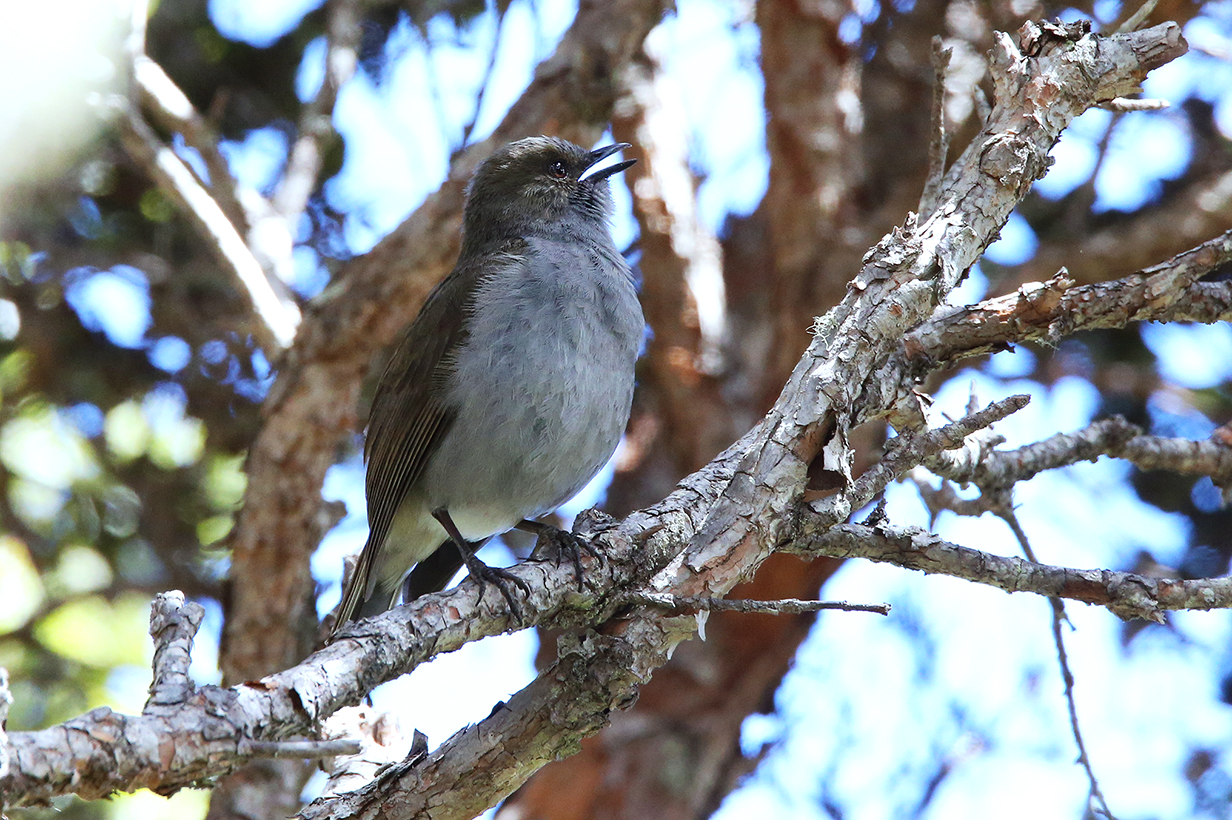
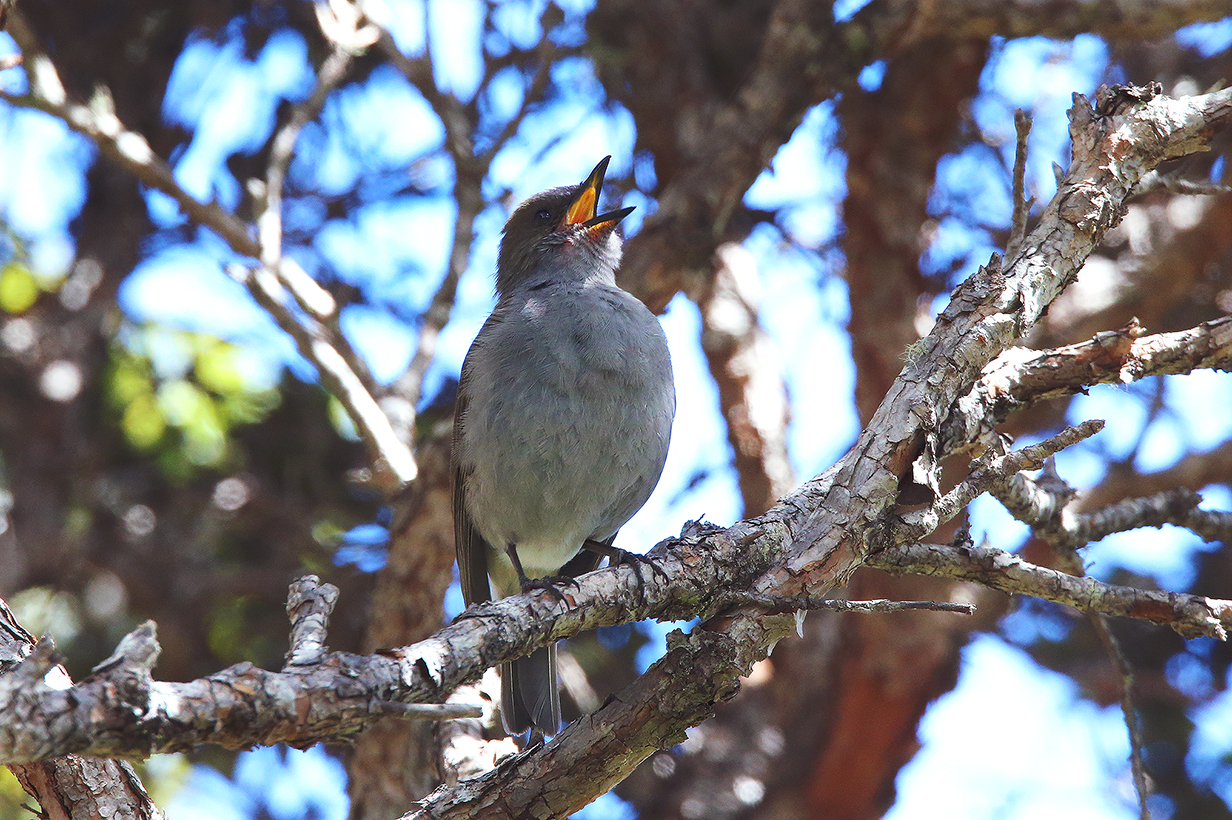
Omao (Hakalau NWR, June 2017)
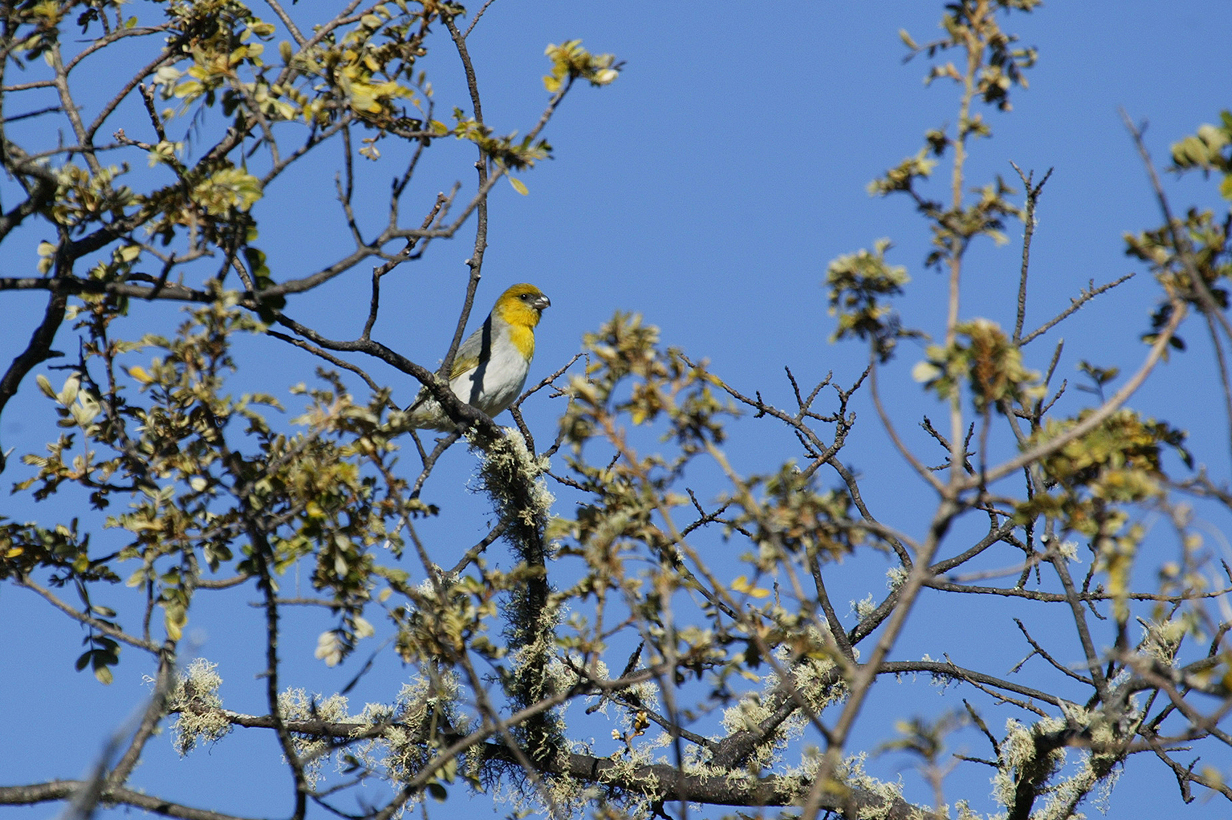
Palila (Pu'u La'au, January 2009)
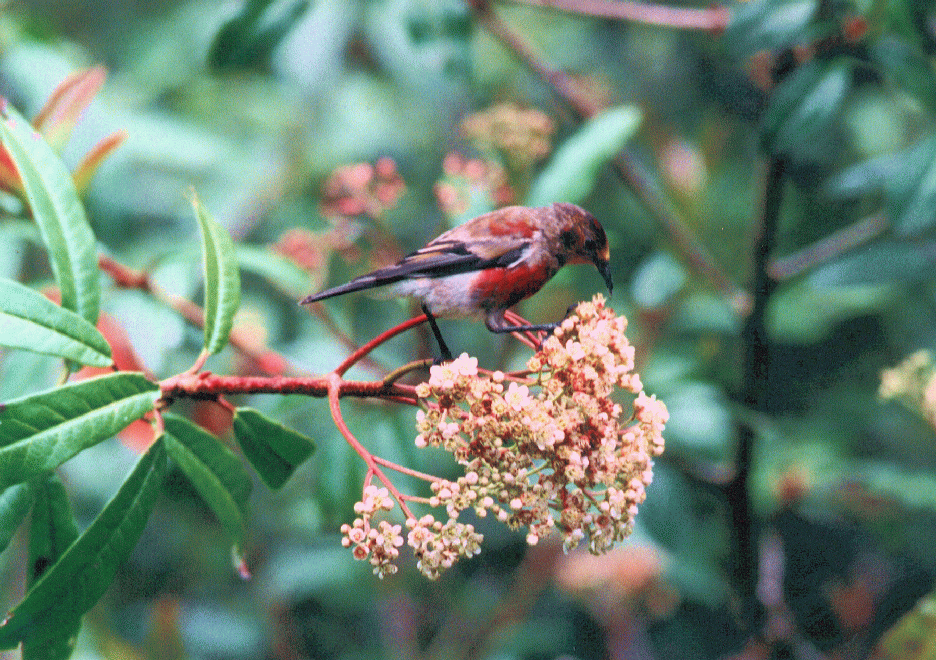
Juvenile apapane (Haleakala, Maui, late 1990s)
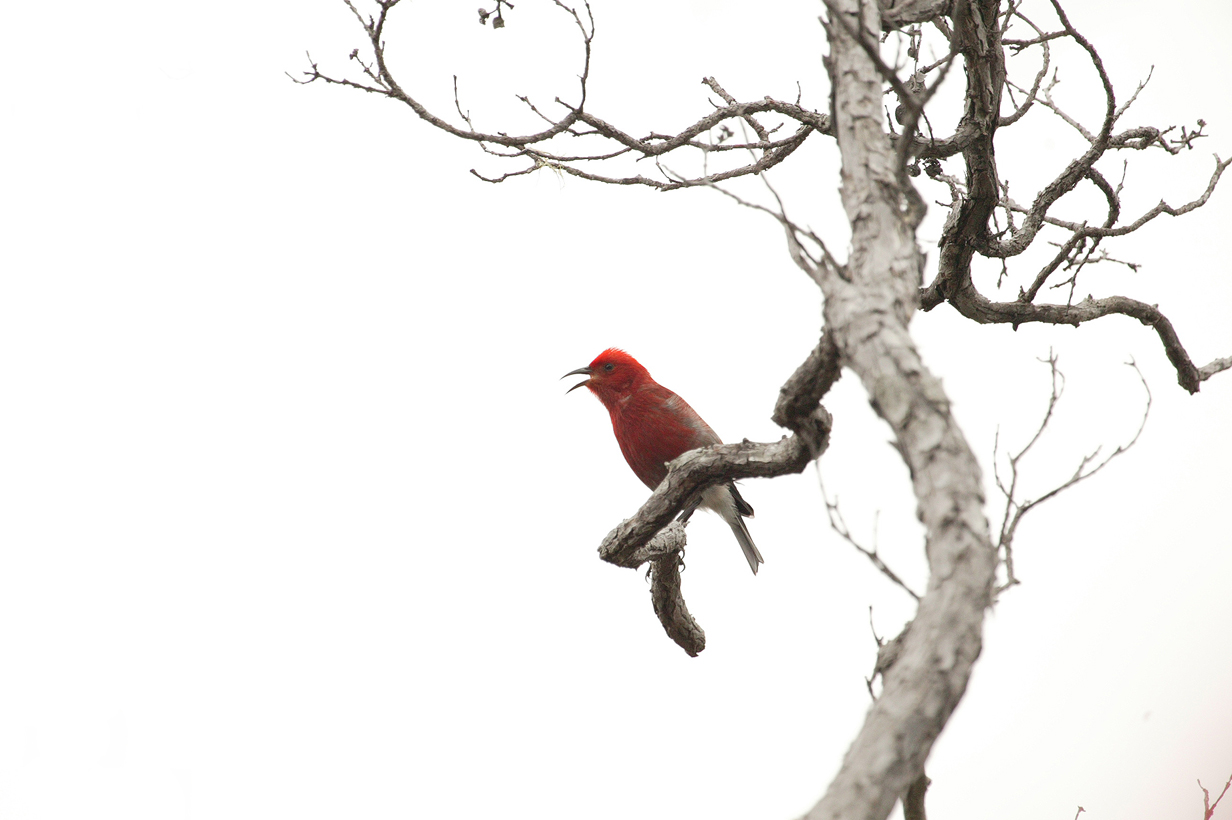
Apapane (Pu'u O'o trail, January 2009)
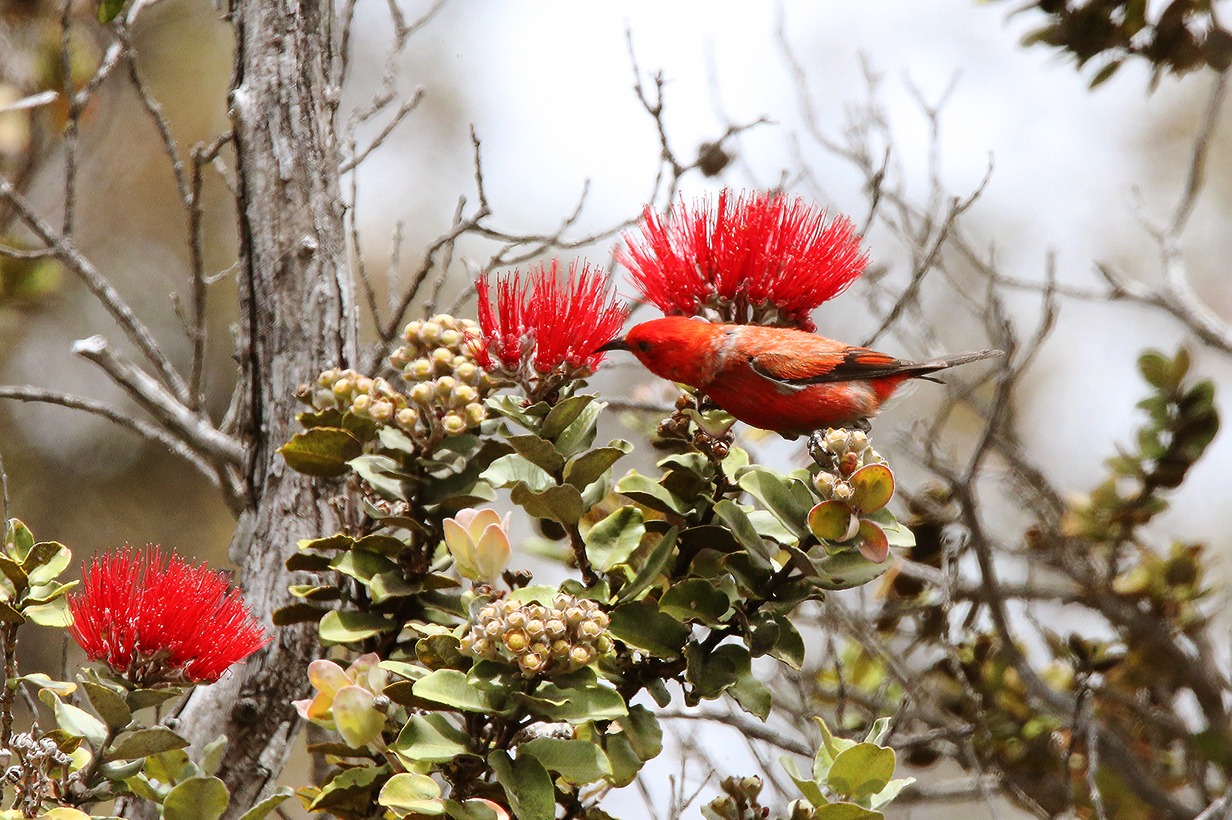
Apapane (Mauna Loa Volcano Observatory road, June 2017)
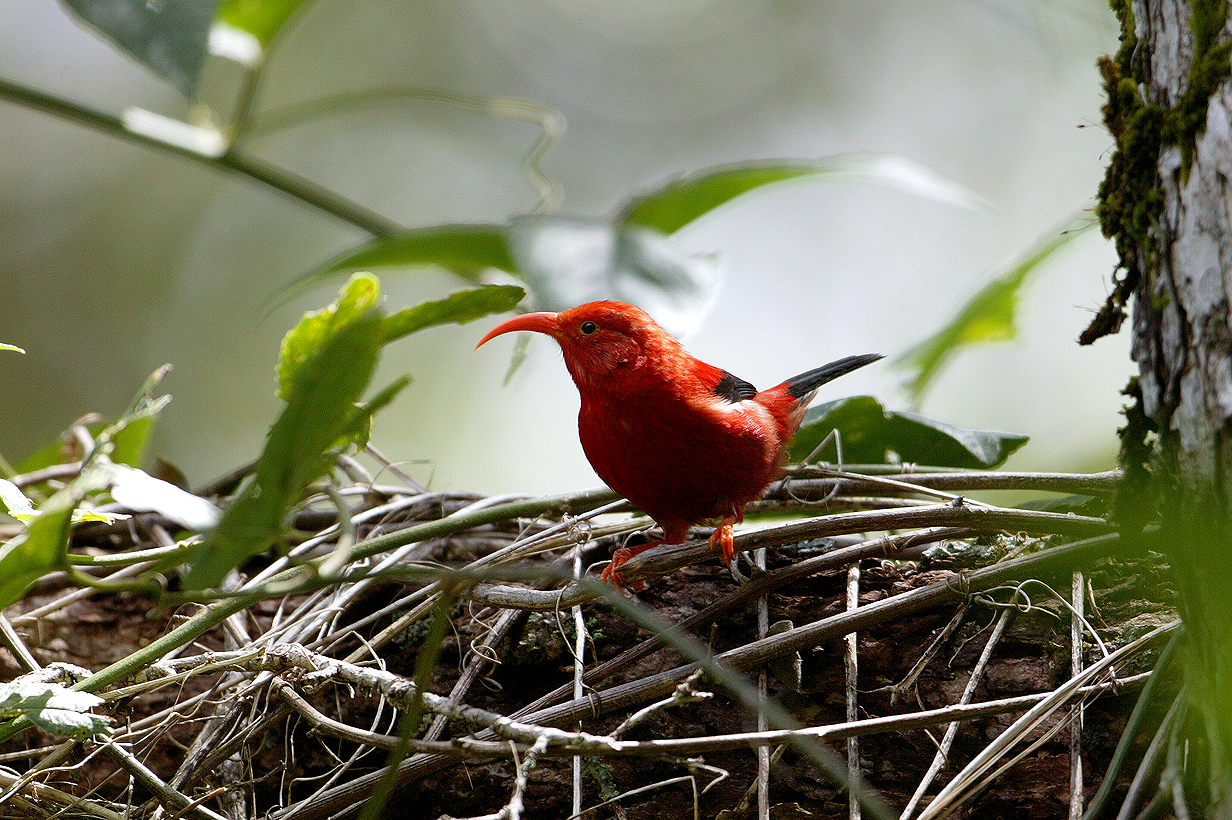 Iiwi (Hakalau NWR, January 2009)
Iiwi (Hakalau NWR, January 2009)
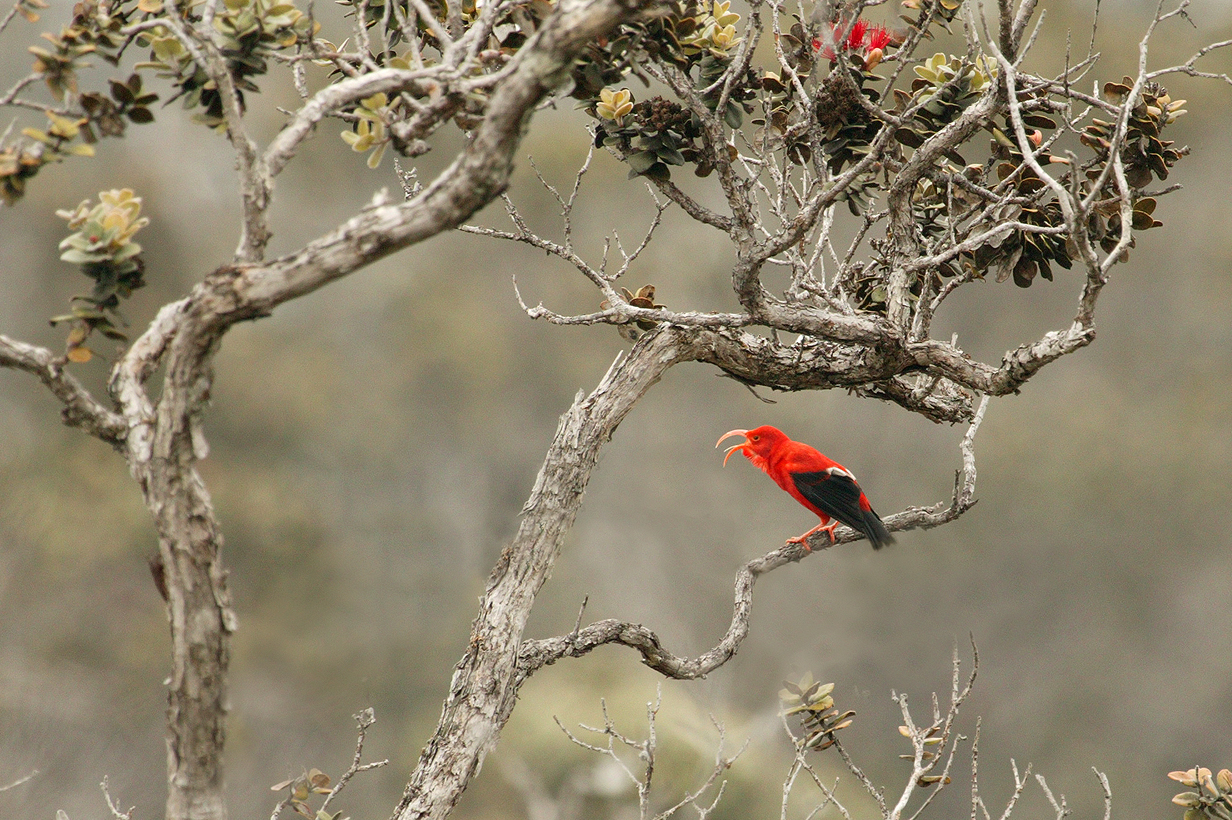 Iiwi (Pu'u O'o trail, January 2009)
Iiwi (Pu'u O'o trail, January 2009)
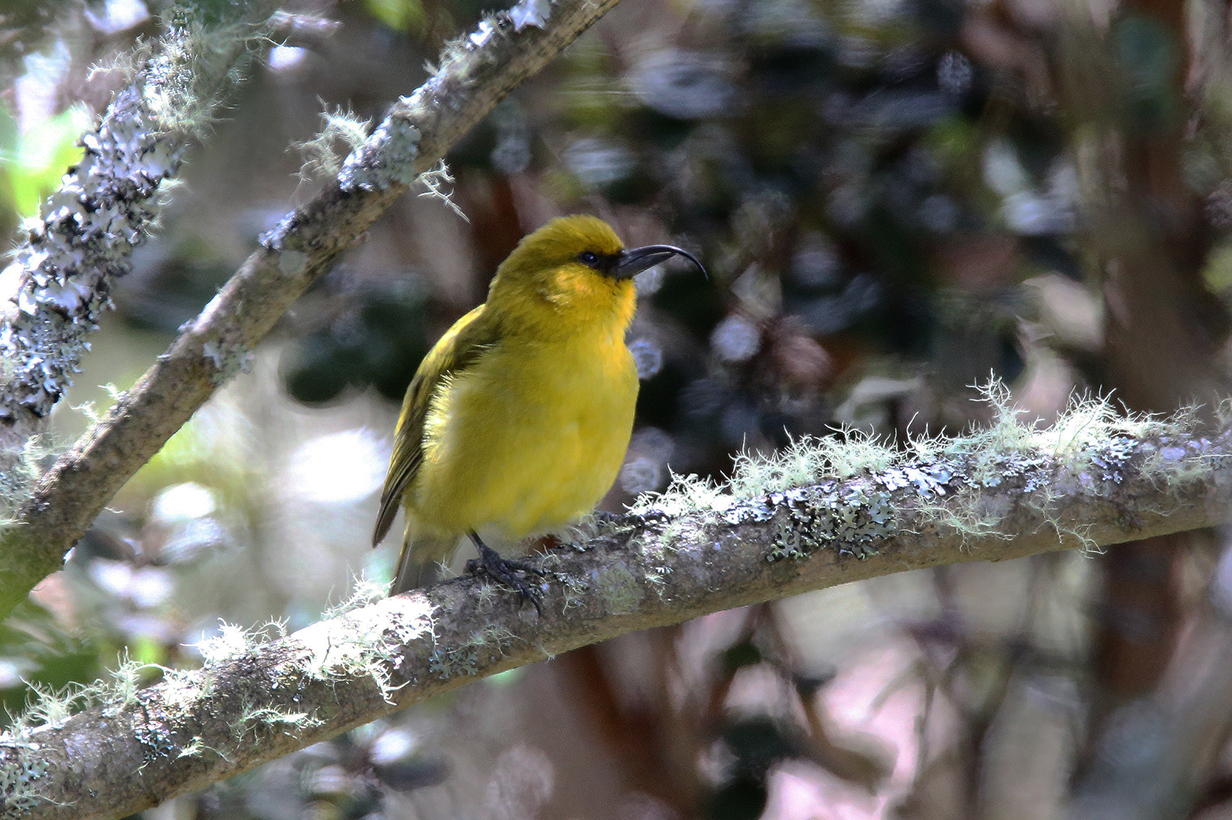

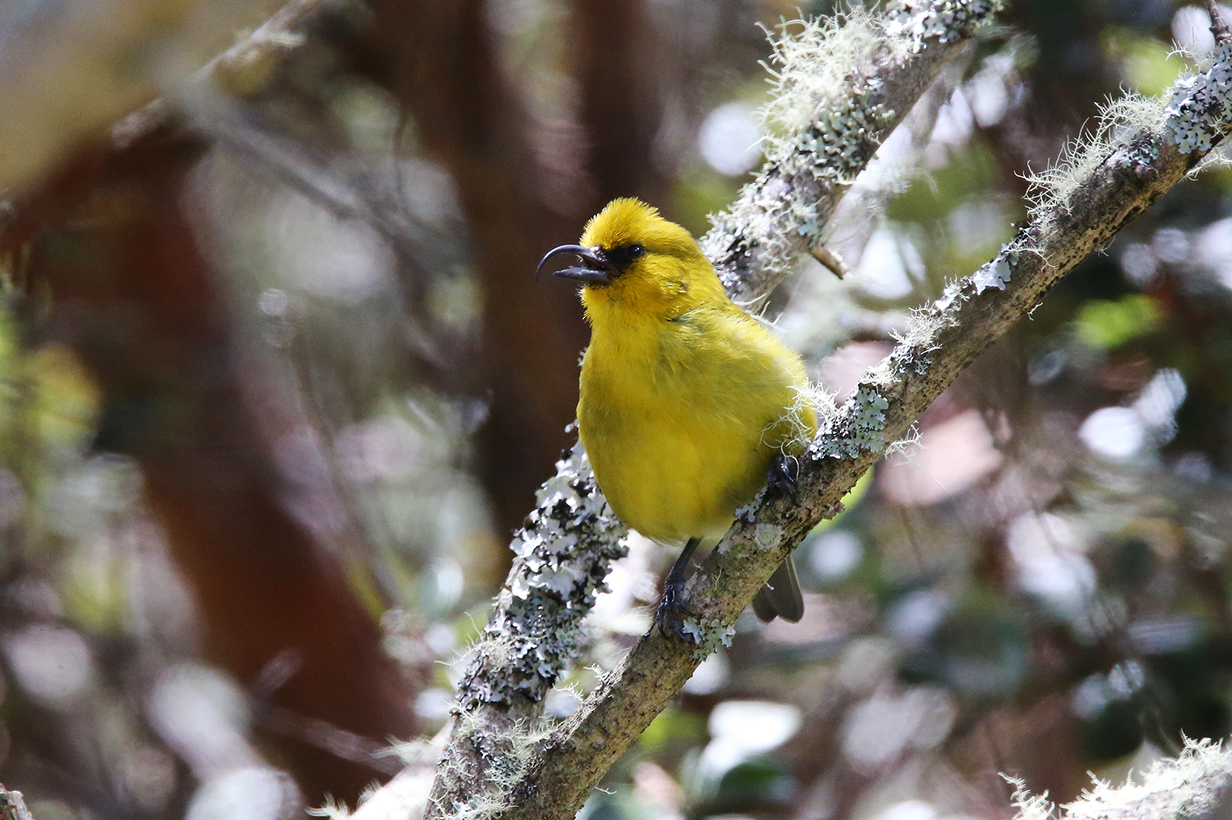

Akiapola'au (Hakalau NWR, June 2017)
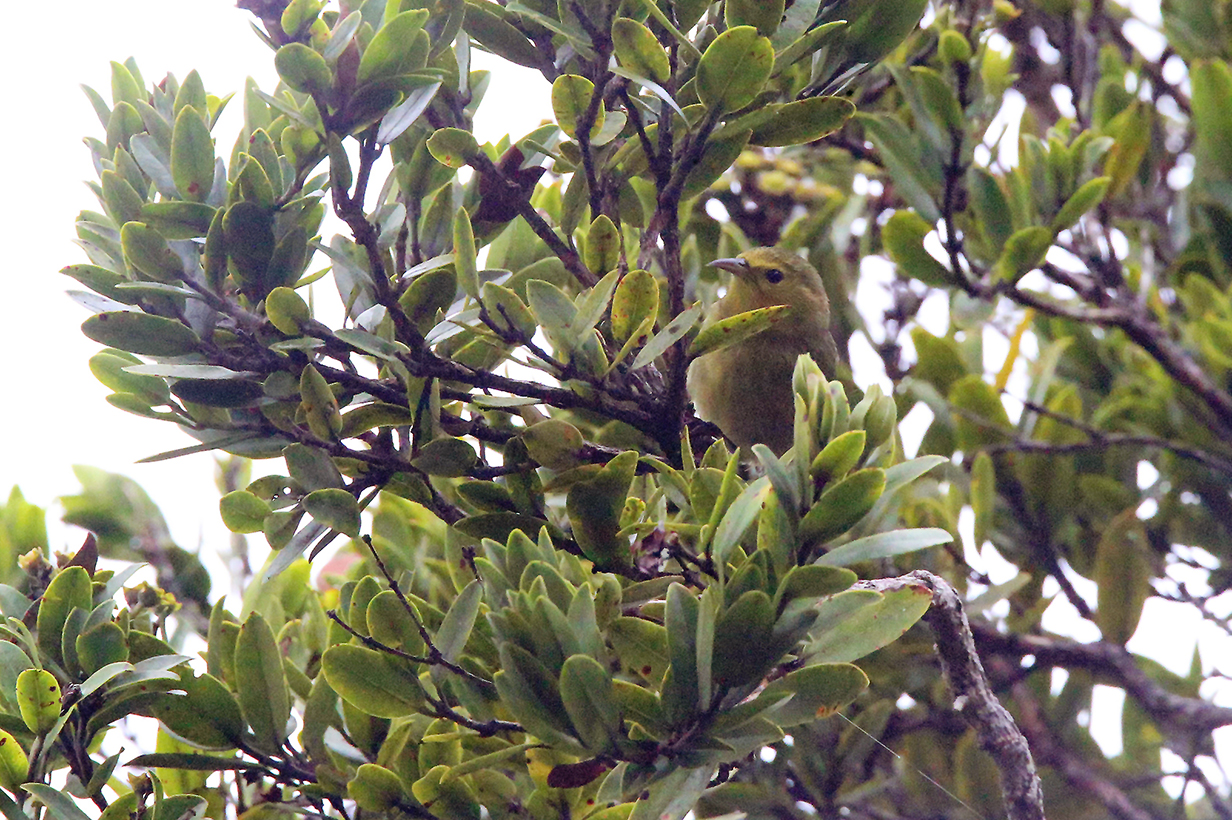

Anianiau in fog (near Pu'u O Kila lookout, June 2017)

Hawaii amakihi (Hakalau NWR, January 2009)
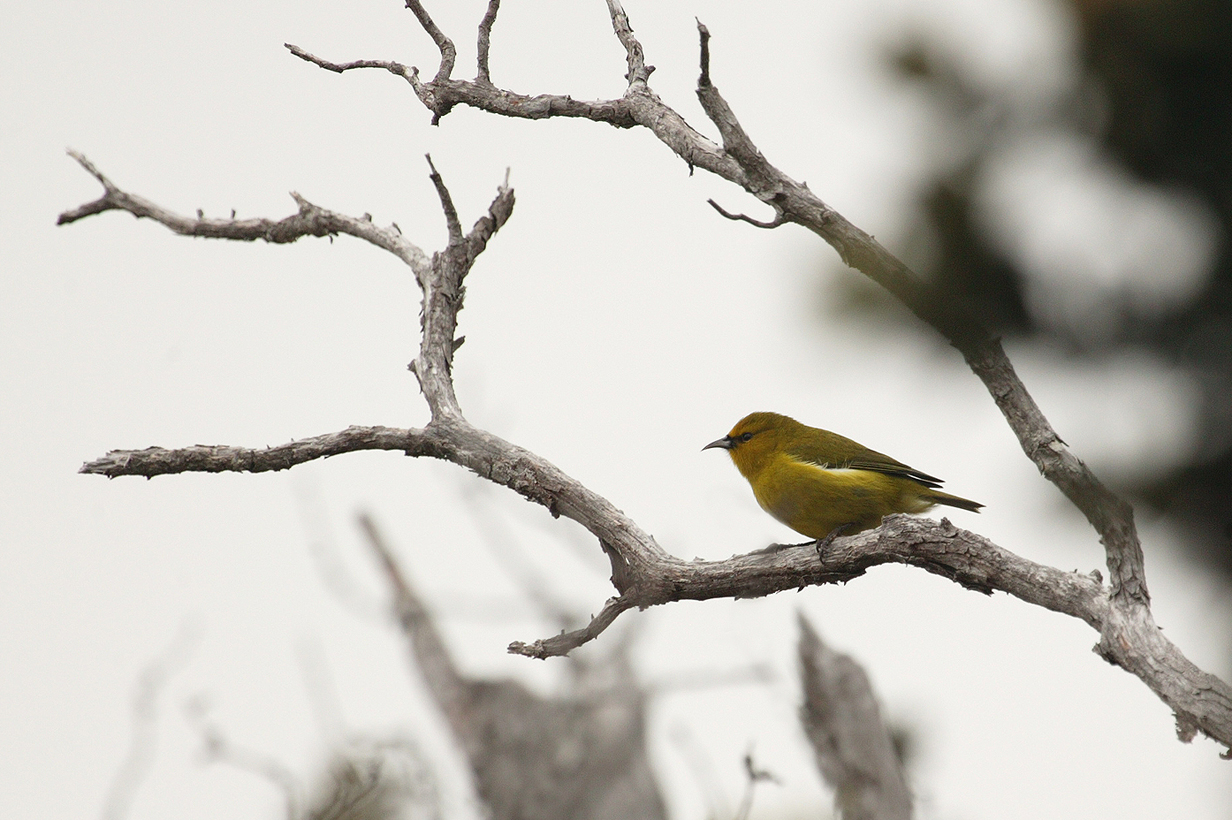
Hawaii amakihi (Pu'u O'o trail, January 2009)
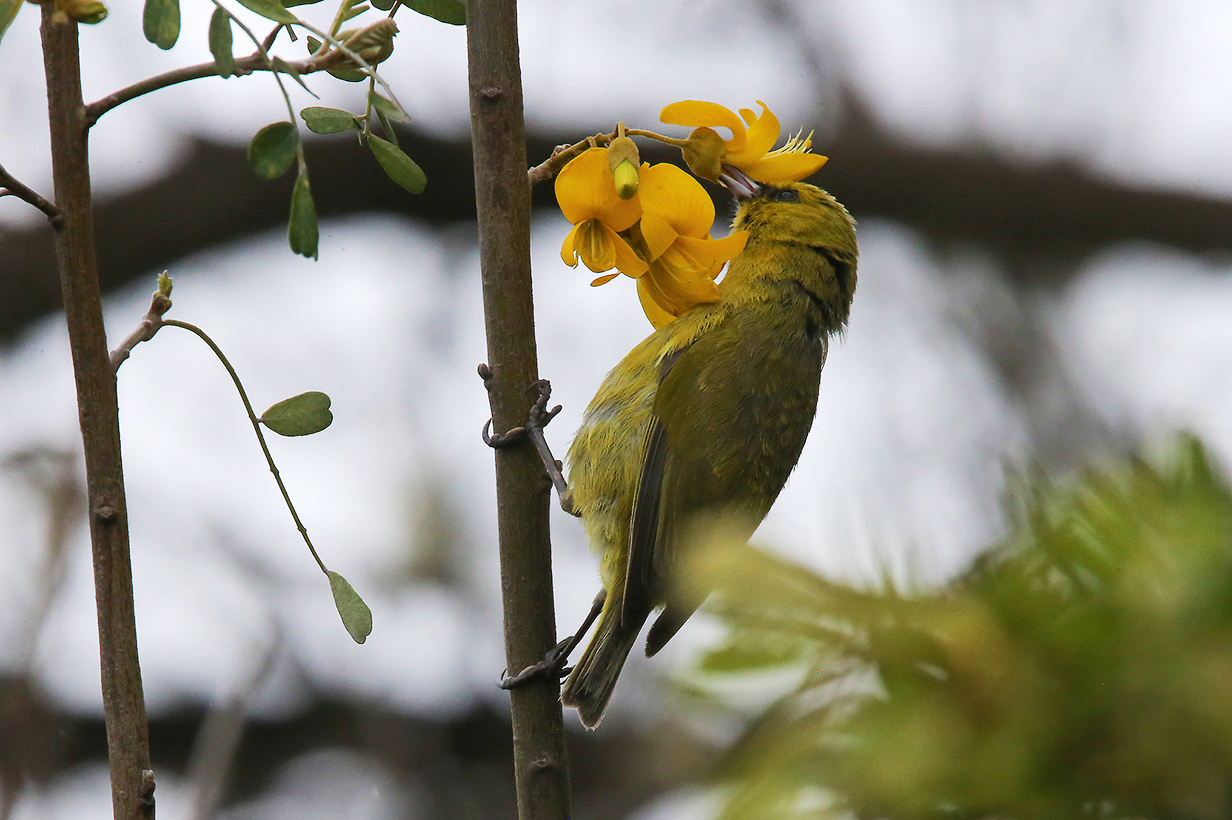
Hawaii amakihi (Mauna Loa Volcano Observatory road, June 2017)
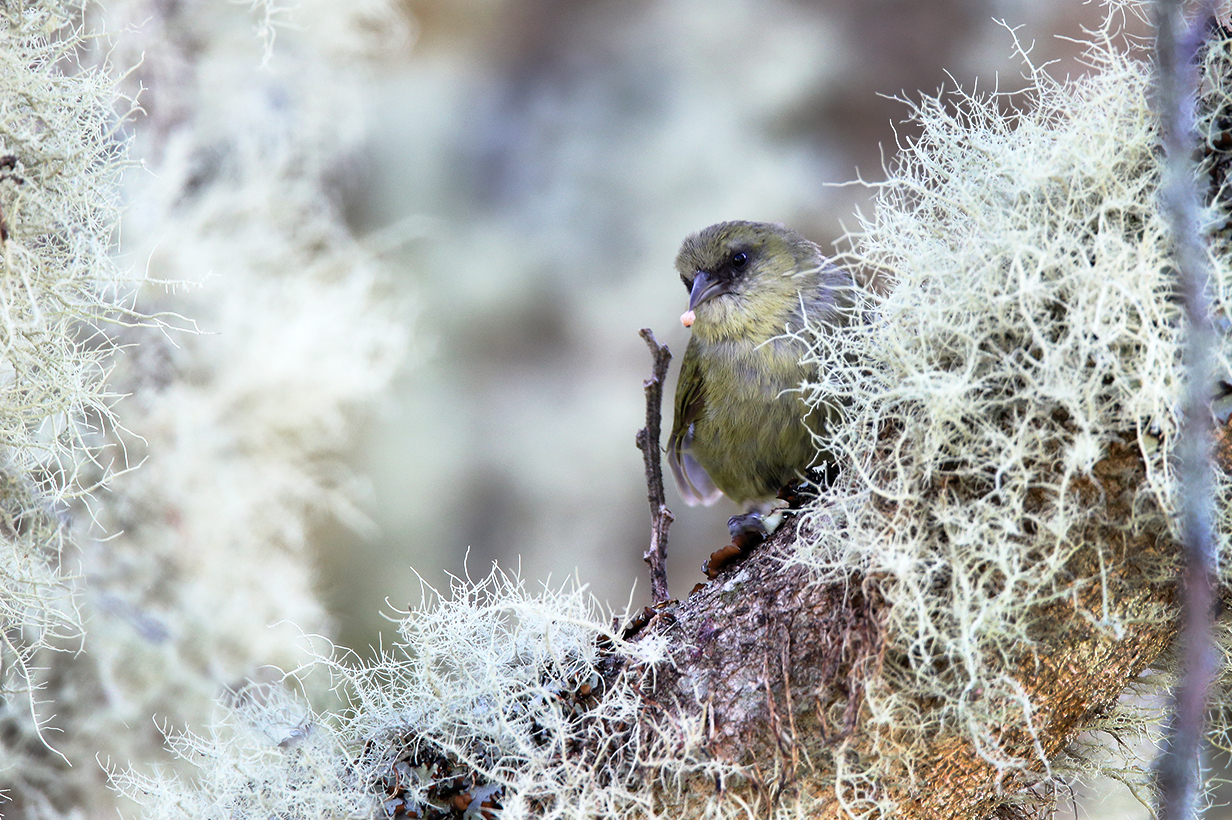
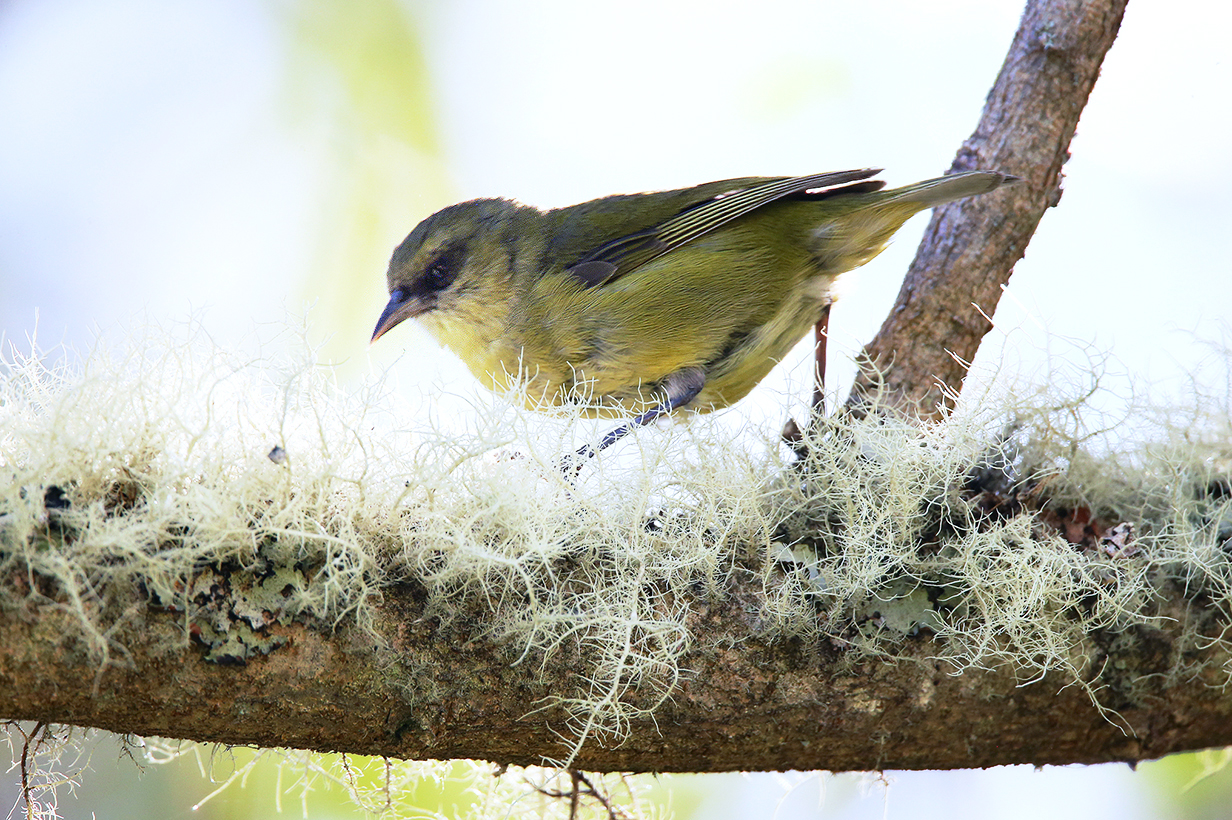
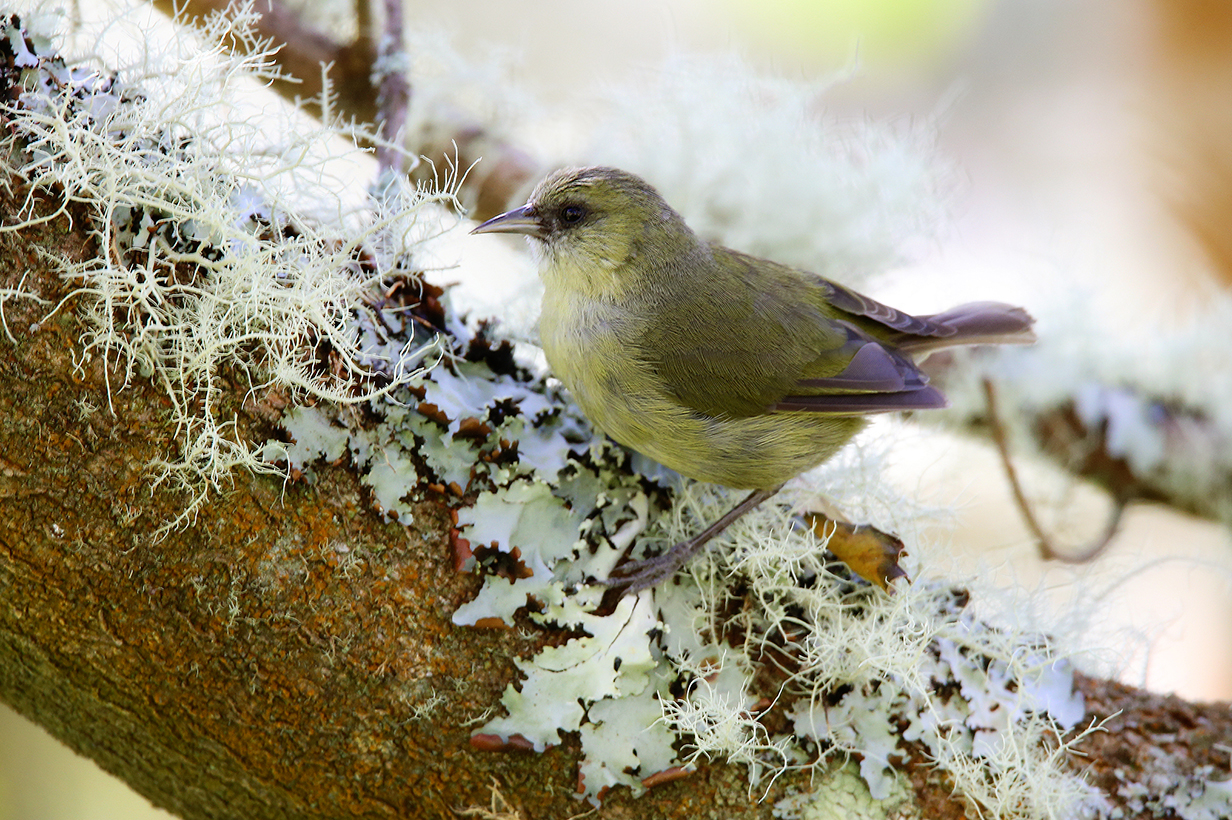
Hawaii creeper (Hakalau NWR, June 2017)
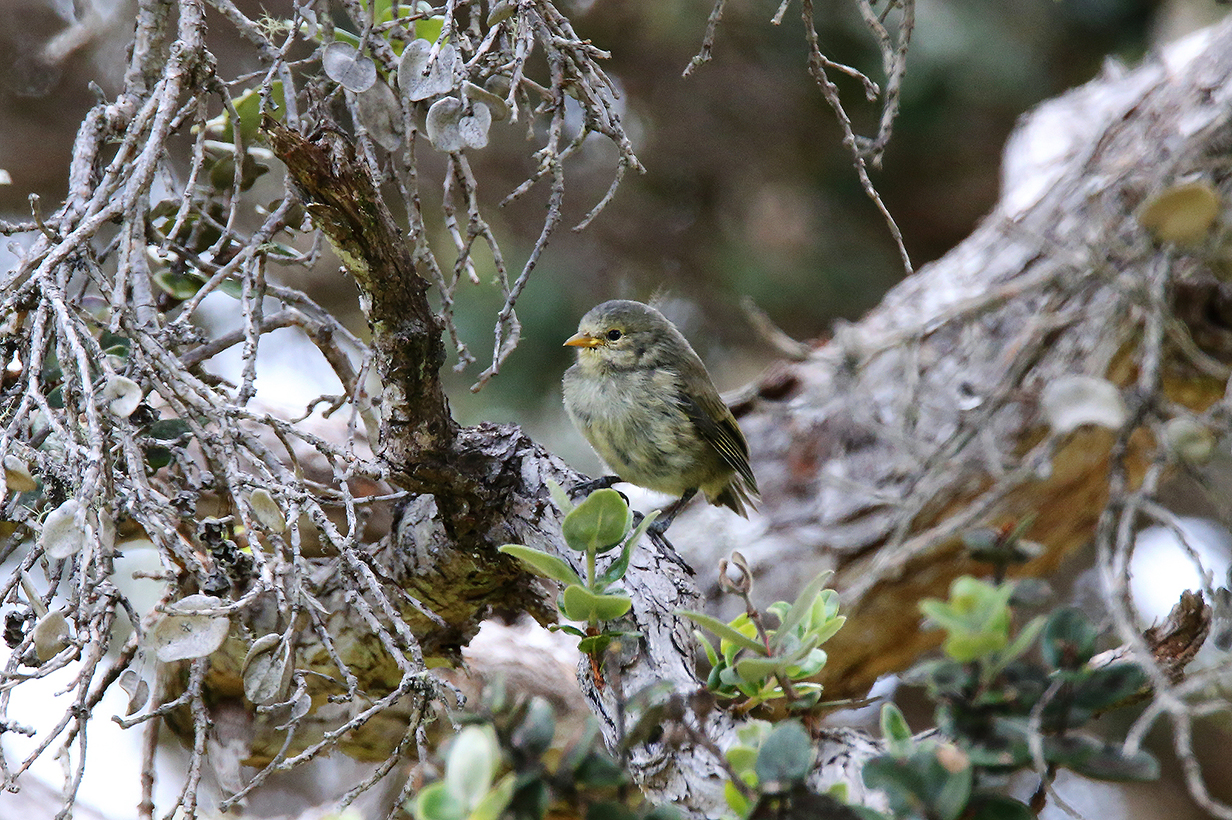
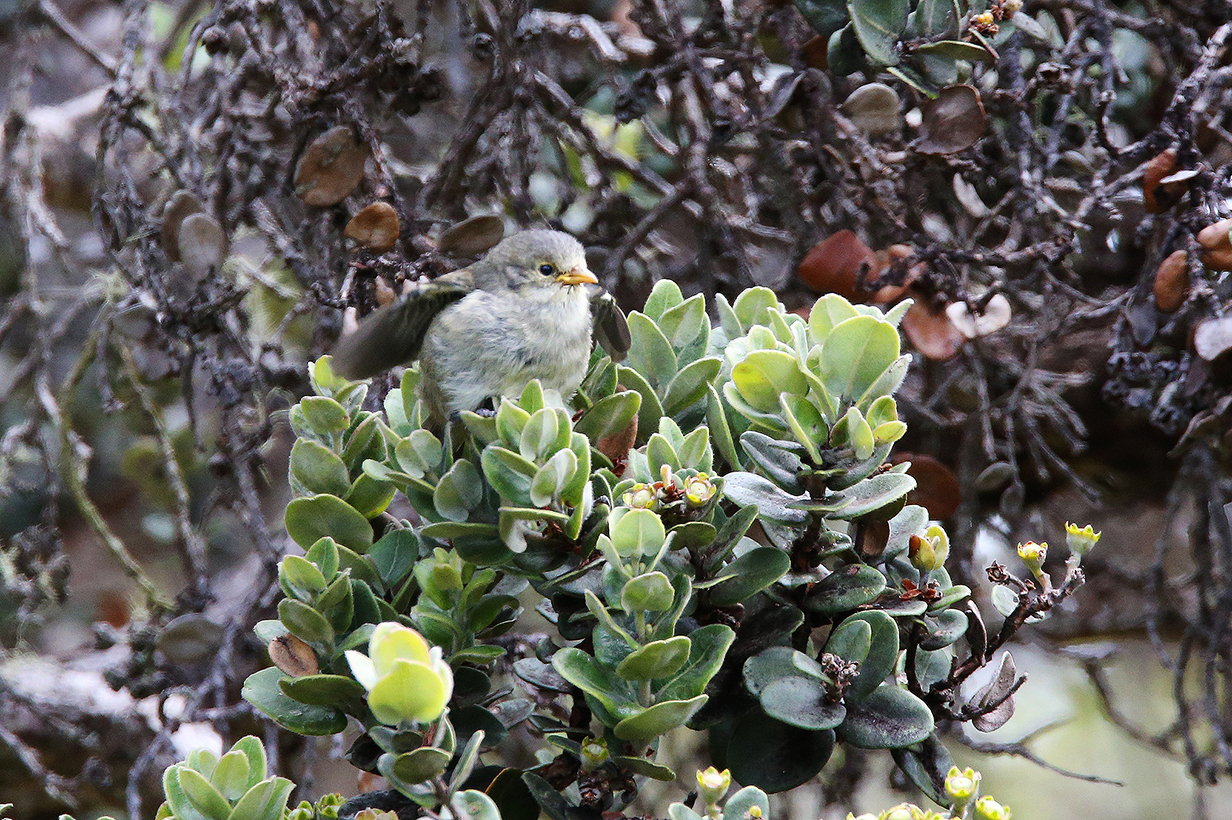
Akepa (Recently fledged juvenile, Hakalau NWR, June 2017)
Indigenous and Introduced Birds of Hawaii

California quail (Near Hale Pohaku, Big Island, June 2017)
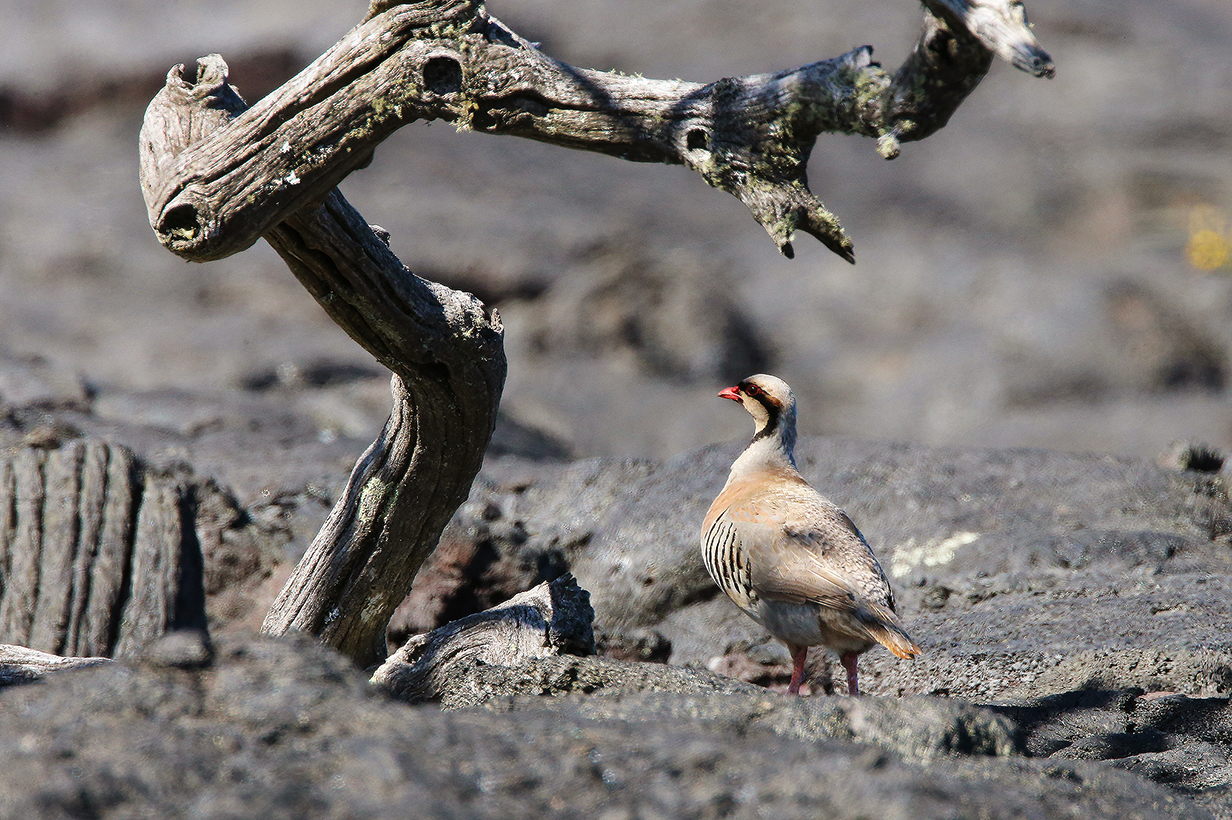
Chukar (Near Pu'u Huluhulu, Big Island, June 2017)
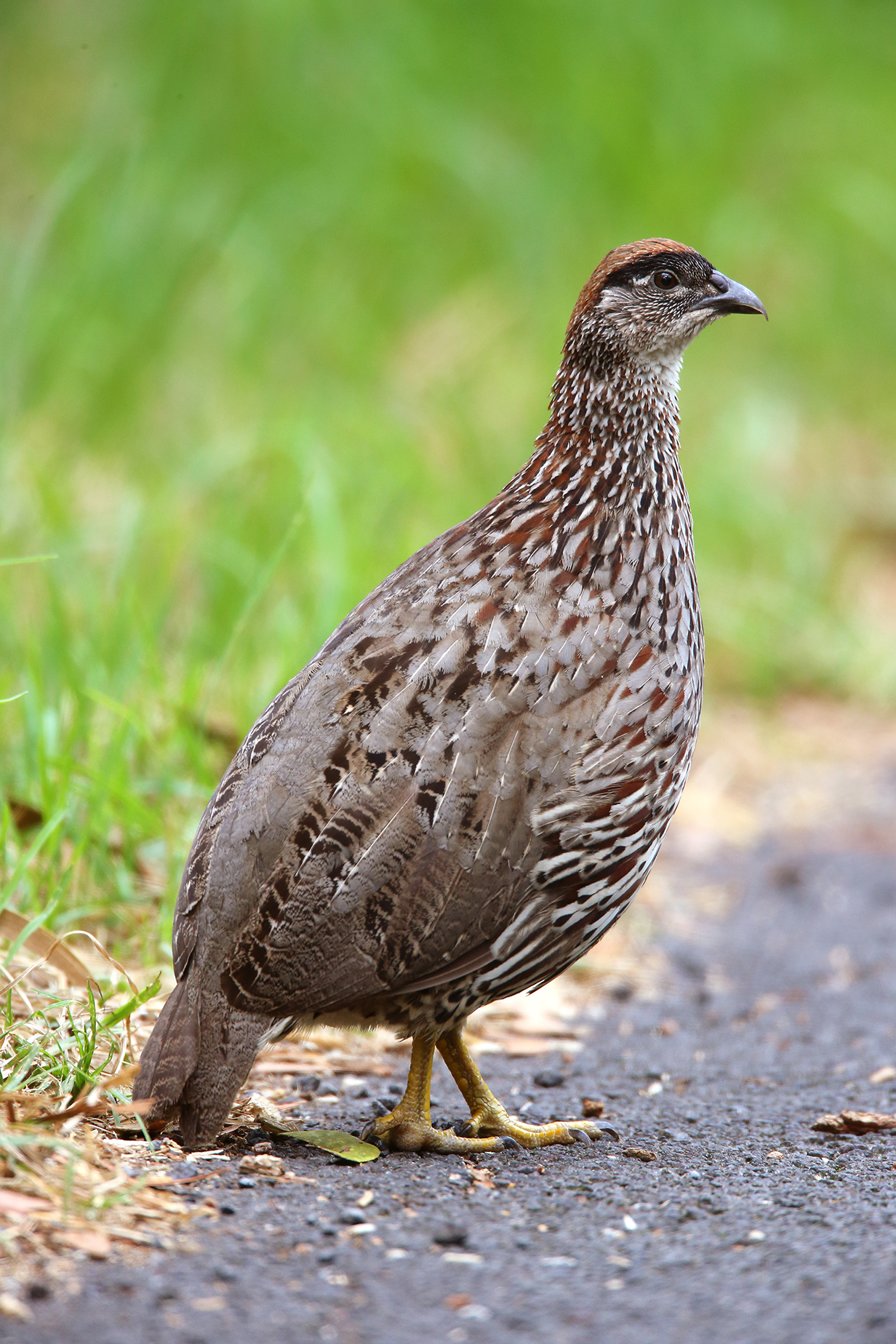
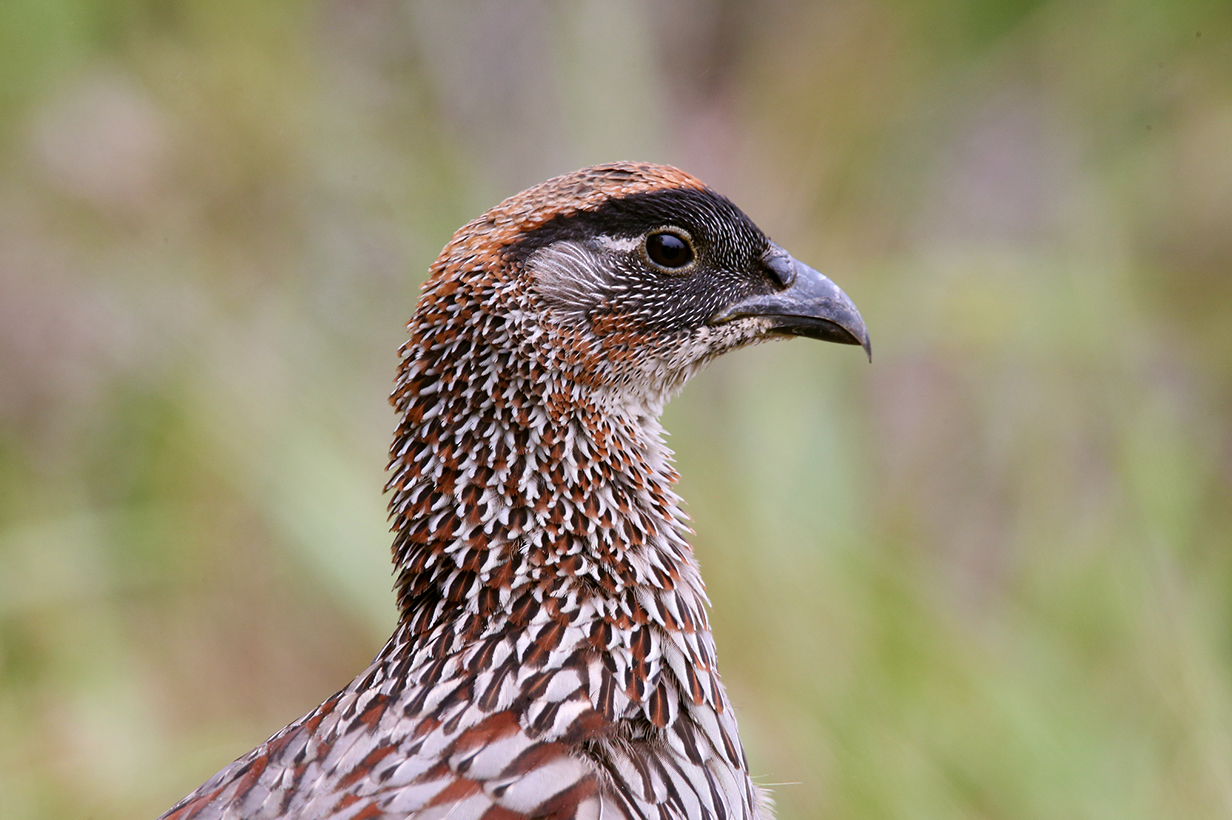
Erckel's francolin (Mauna Loa road, June 2017)
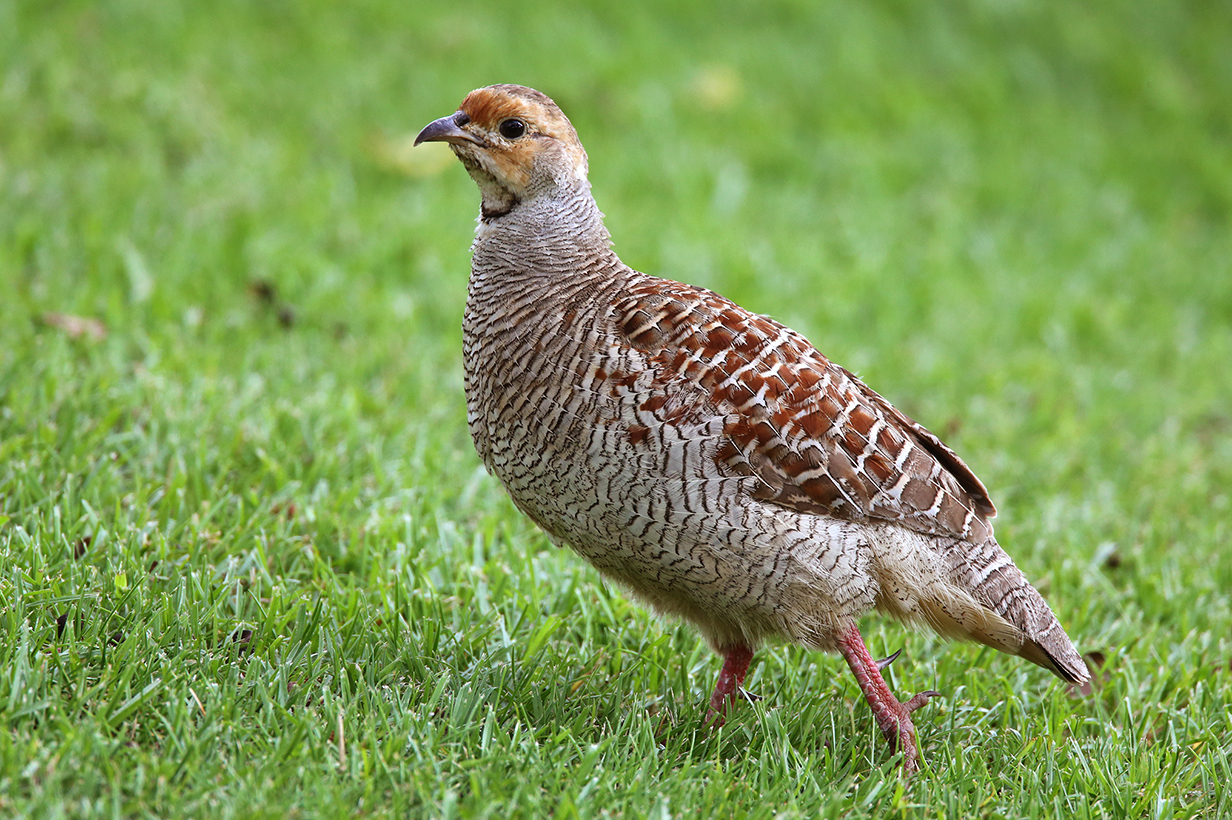
Gray francolin (Hapuna Beach Hotel grounds, Big Island, June 2017)

Red junglefowl (Kokee Natural History Museum grounds, Kauai, June 2017) He's a babe magnet, and he knows it.

Kalij pheasant (female, Mauna Loa road, June 2017)
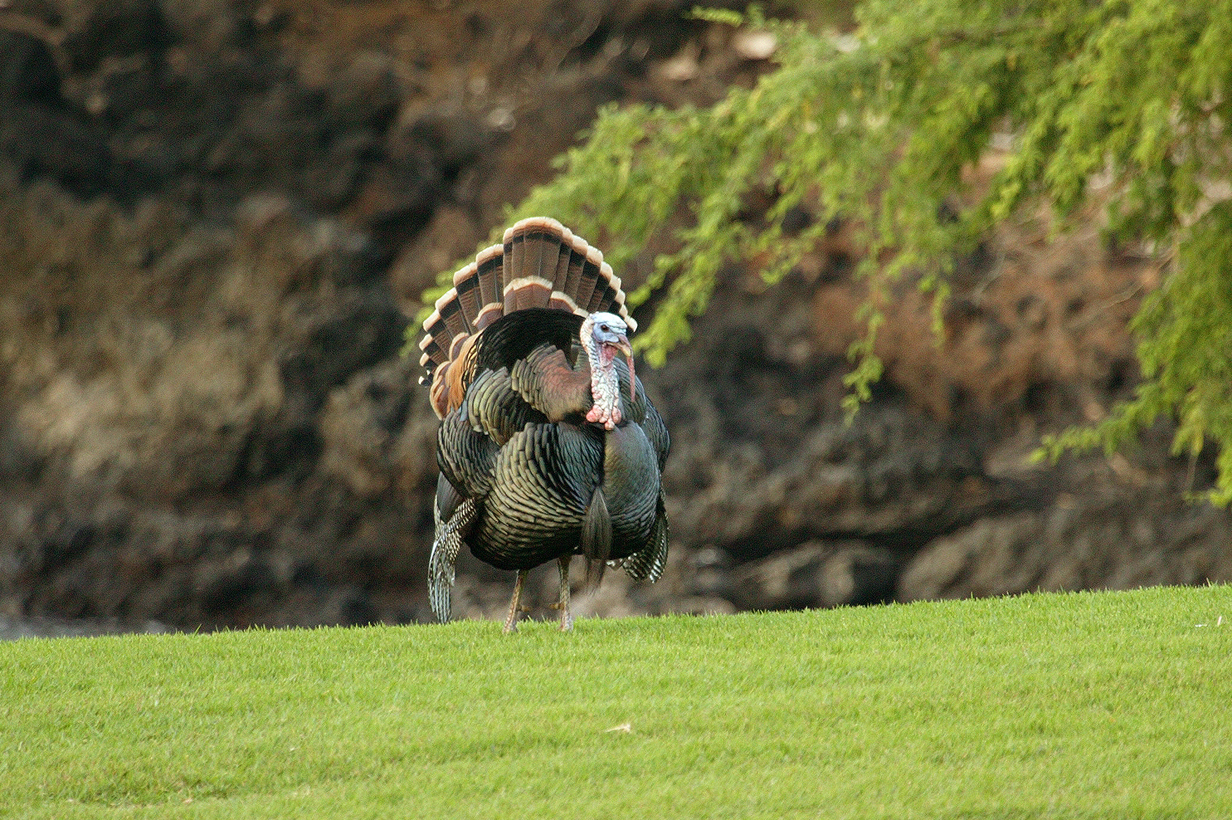
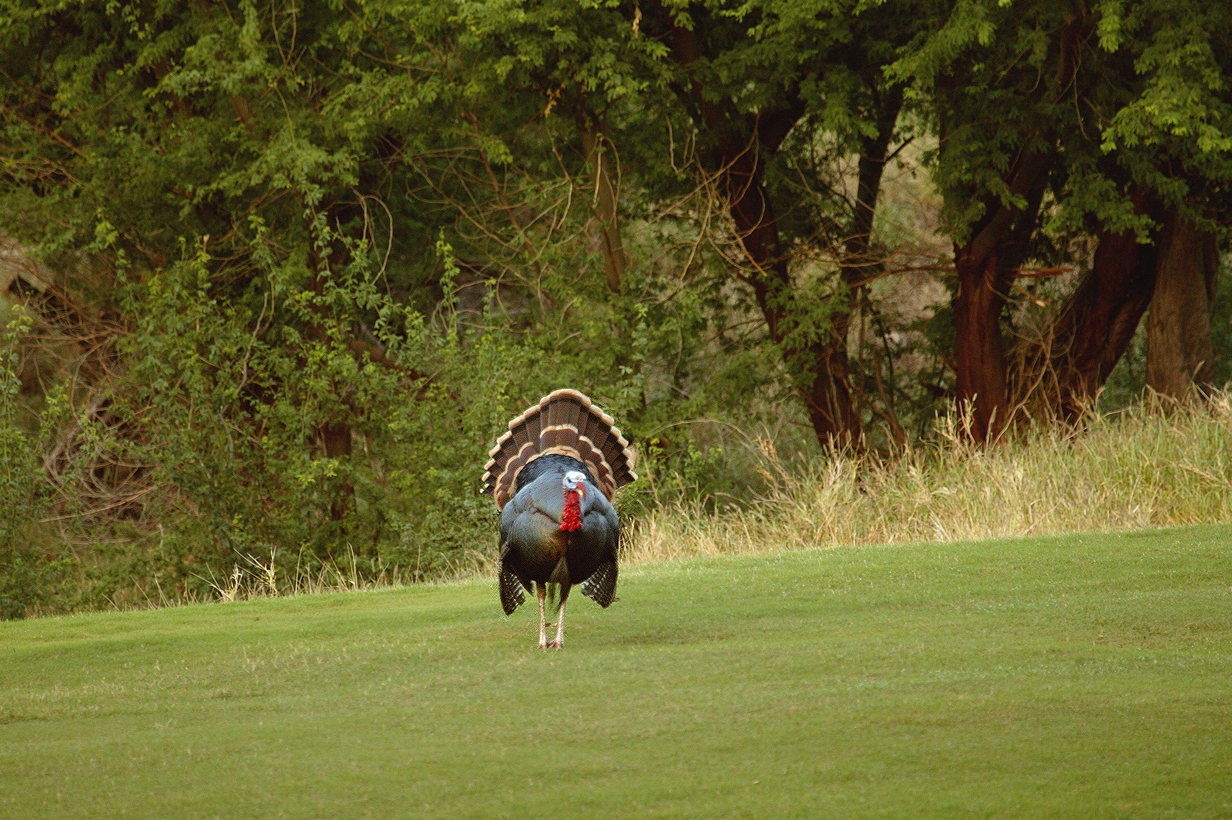
Turkey (displaying male: Hapuna Beach Hotel grounds, Big Island, January 2009)
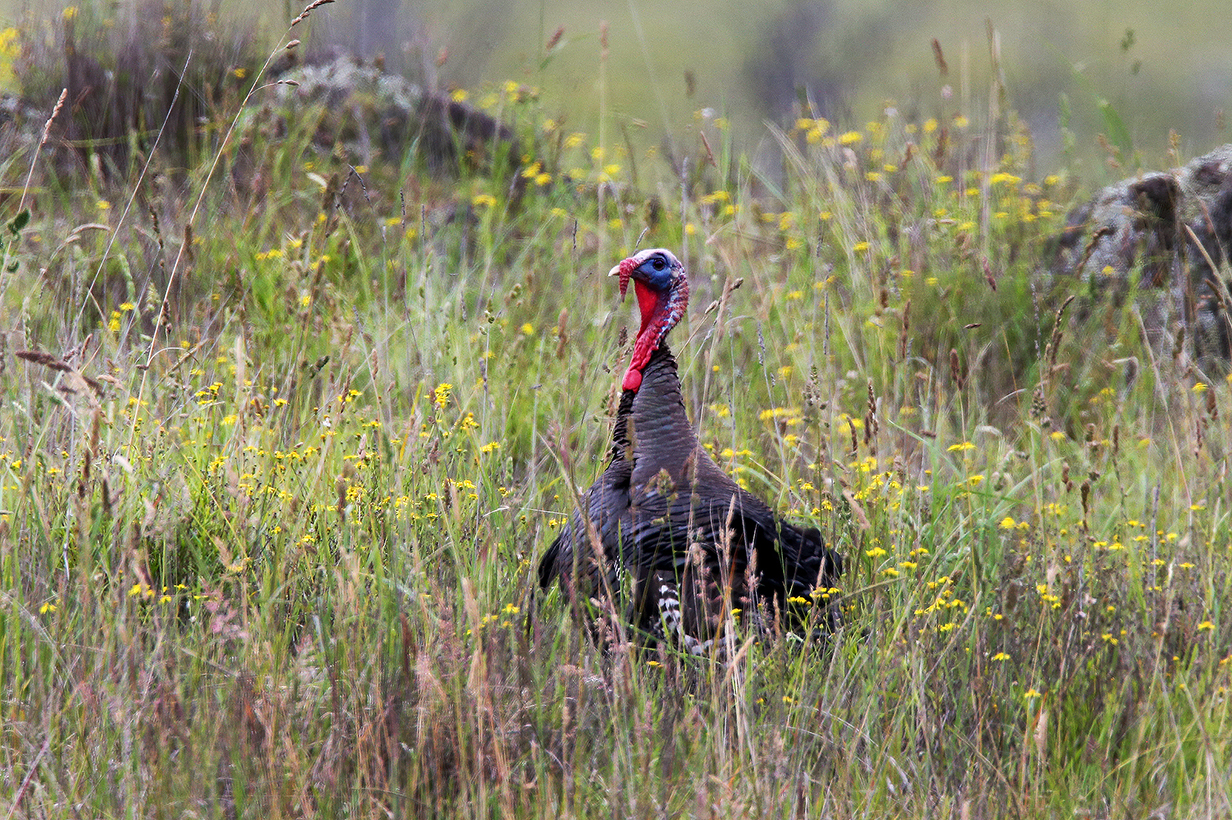
Turkey (male: ranch lands off the Saddle Road, Big Island, June 2017)

Turkey (female: ranch lands off the Saddle Road, Big Island, June 2017)
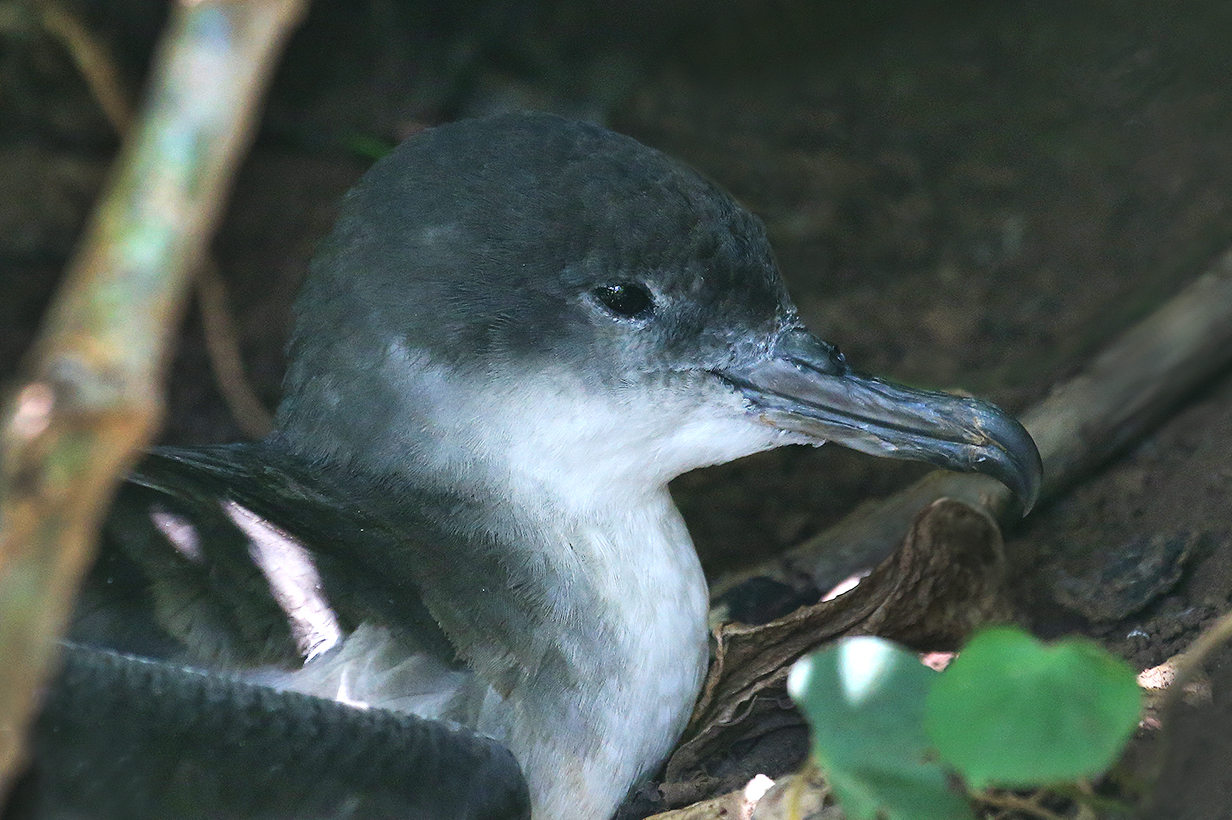
Wedge-tailed shearwater (Kilauea Point NWR, June 2017)
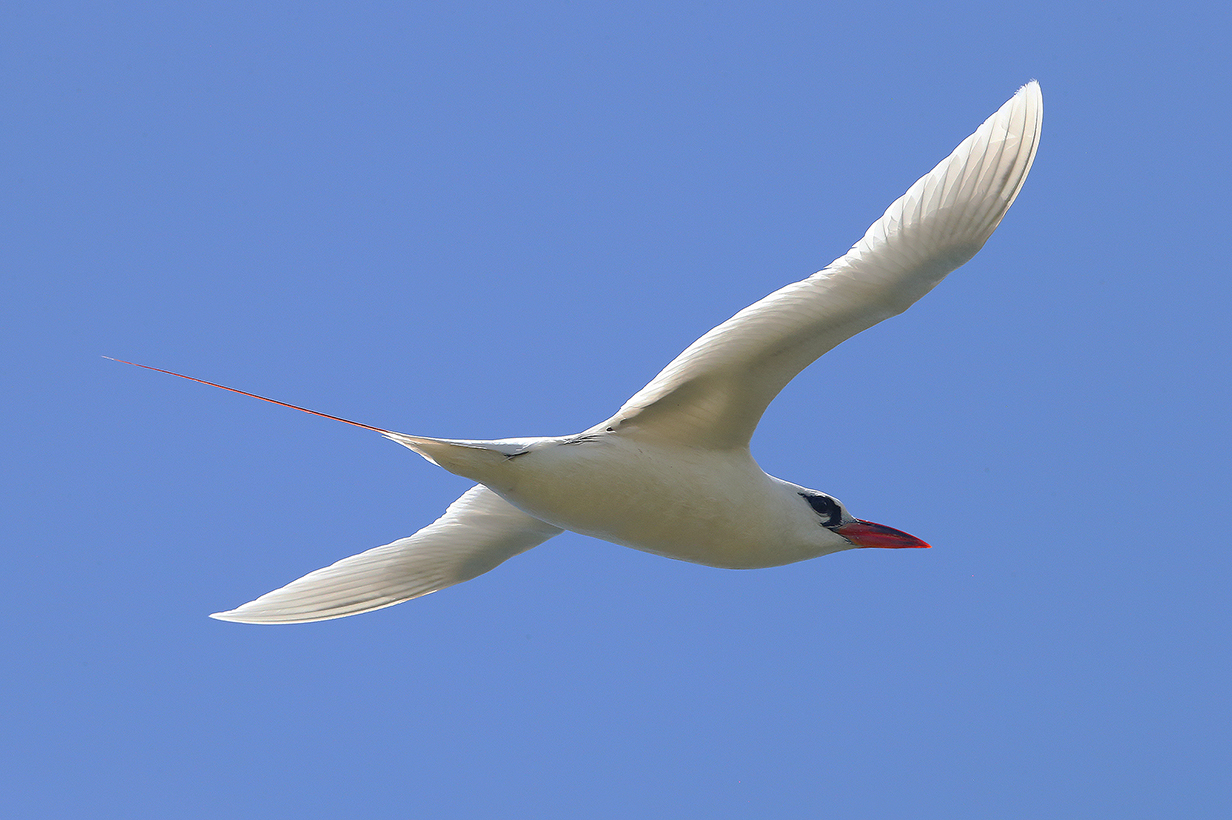
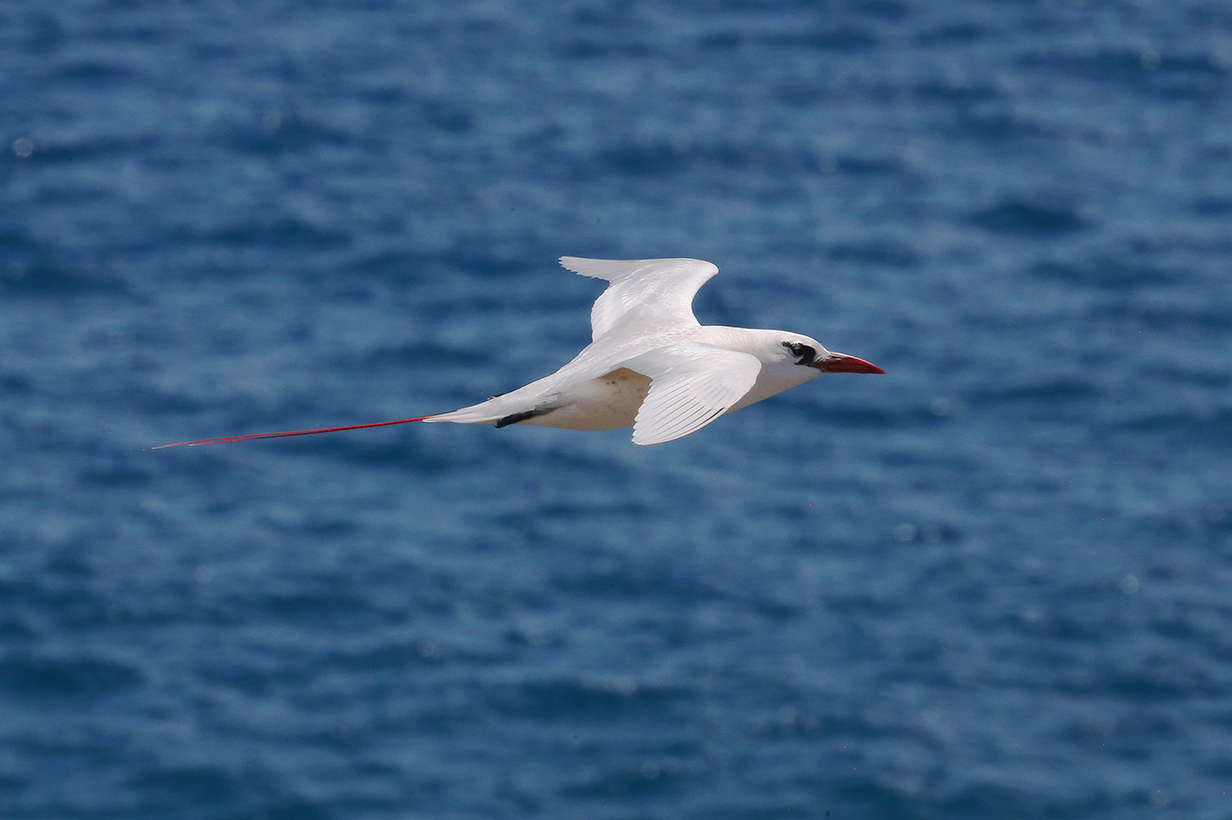
Red-tailed tropicbird (Kilauea Point NWR, June 2017)
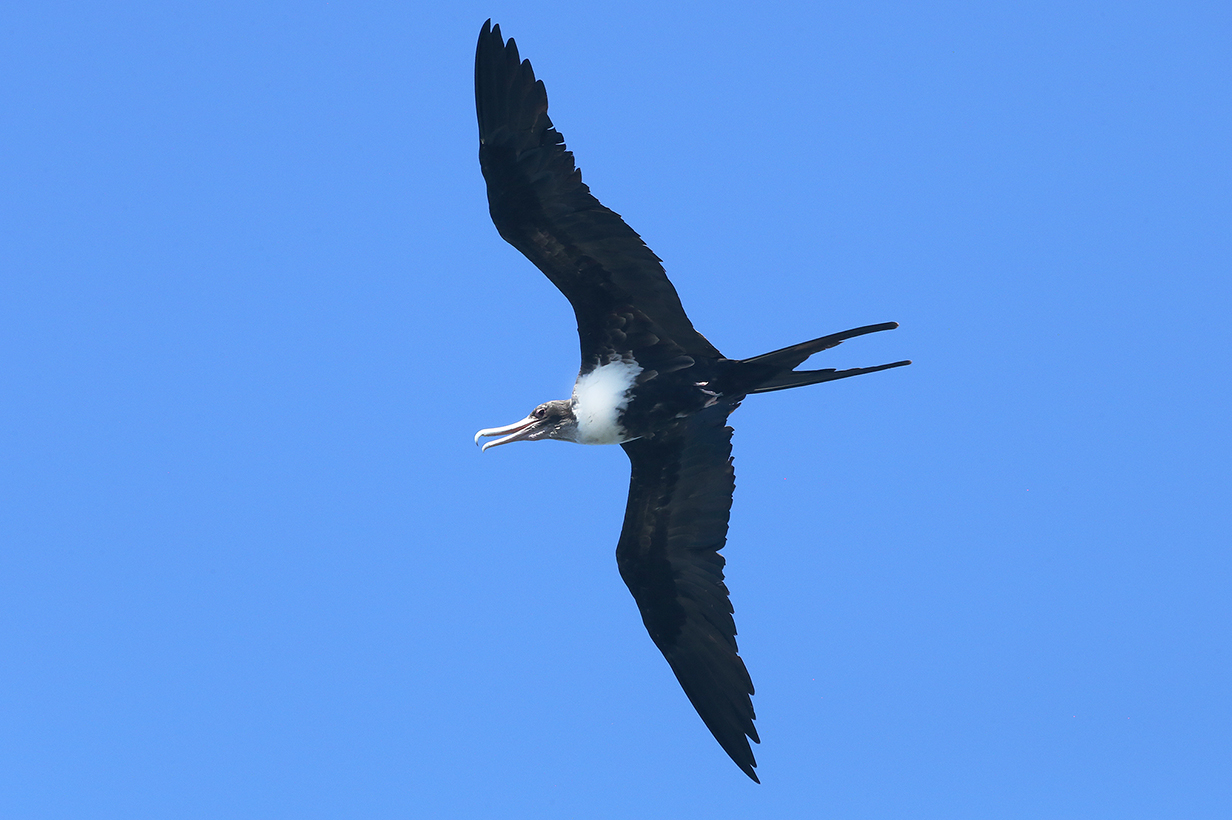
Great firgatebird (Kilauea Point NWR, June 2017)

Red-footed booby (Kilauea Point NWR, June 2017)
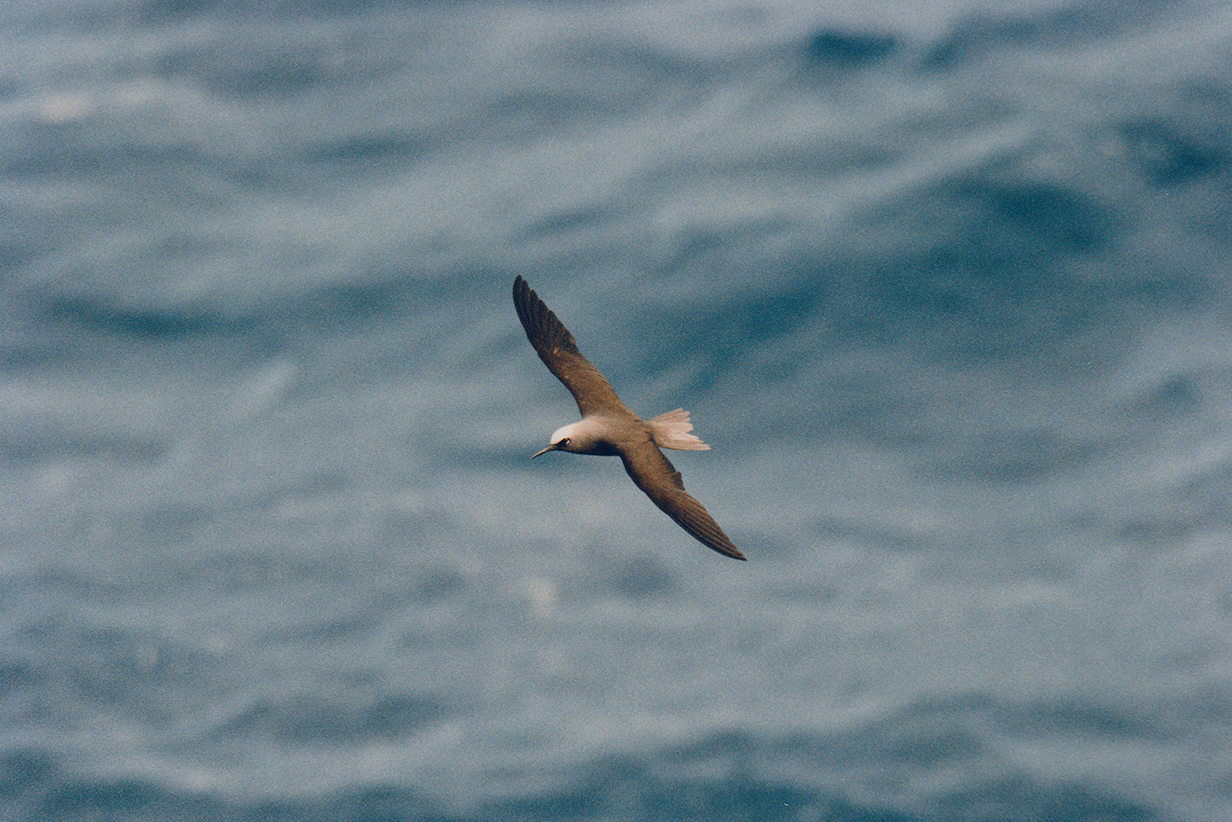
Black noddy (This is also from the days of film.)

Black-crowned night-heron (Juvenile, January 2009)

Cattle egret in breeding plumage (Hapuna Beach Hotel grounds, Big Island, June 2017)
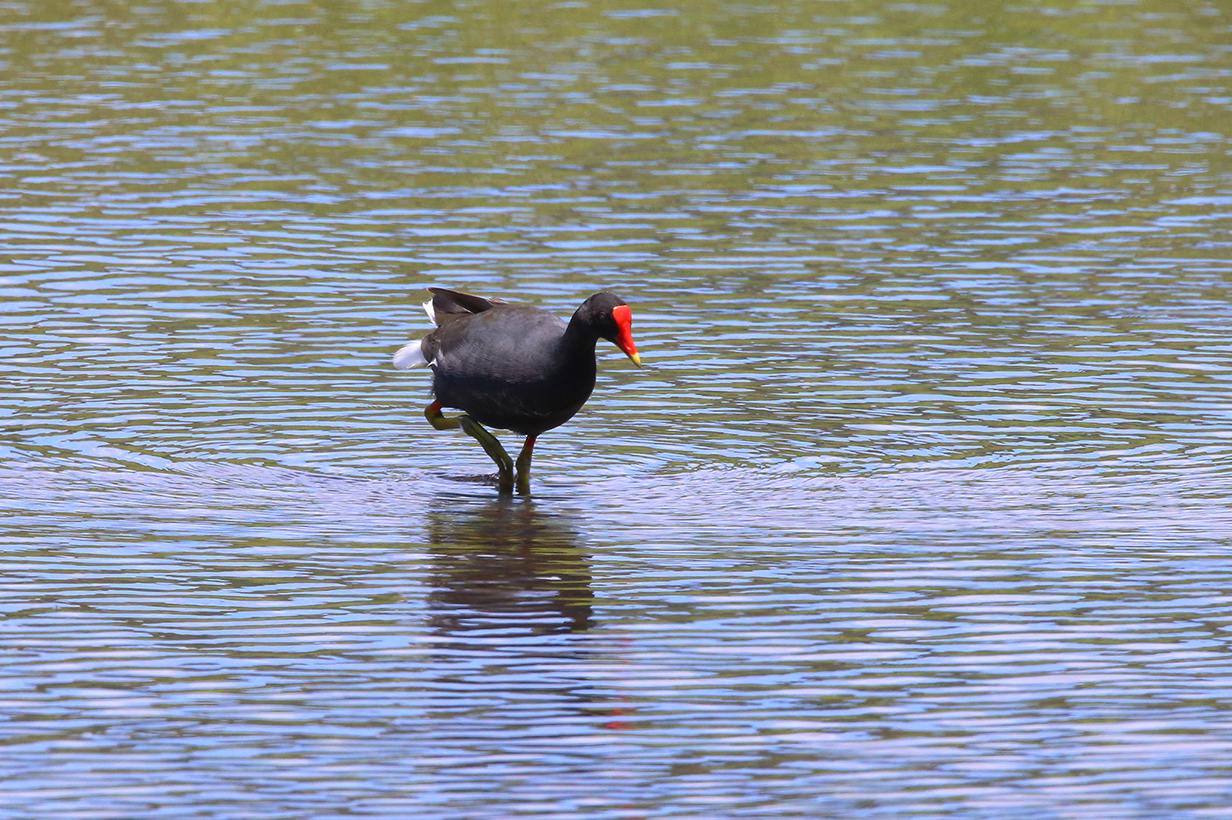
Common (Hawaiian) gallinule (Gallinula galeata sandvicensis, Hanalei NWR, Kauai, June 2017)

Pacific golden-plover (January 2009)
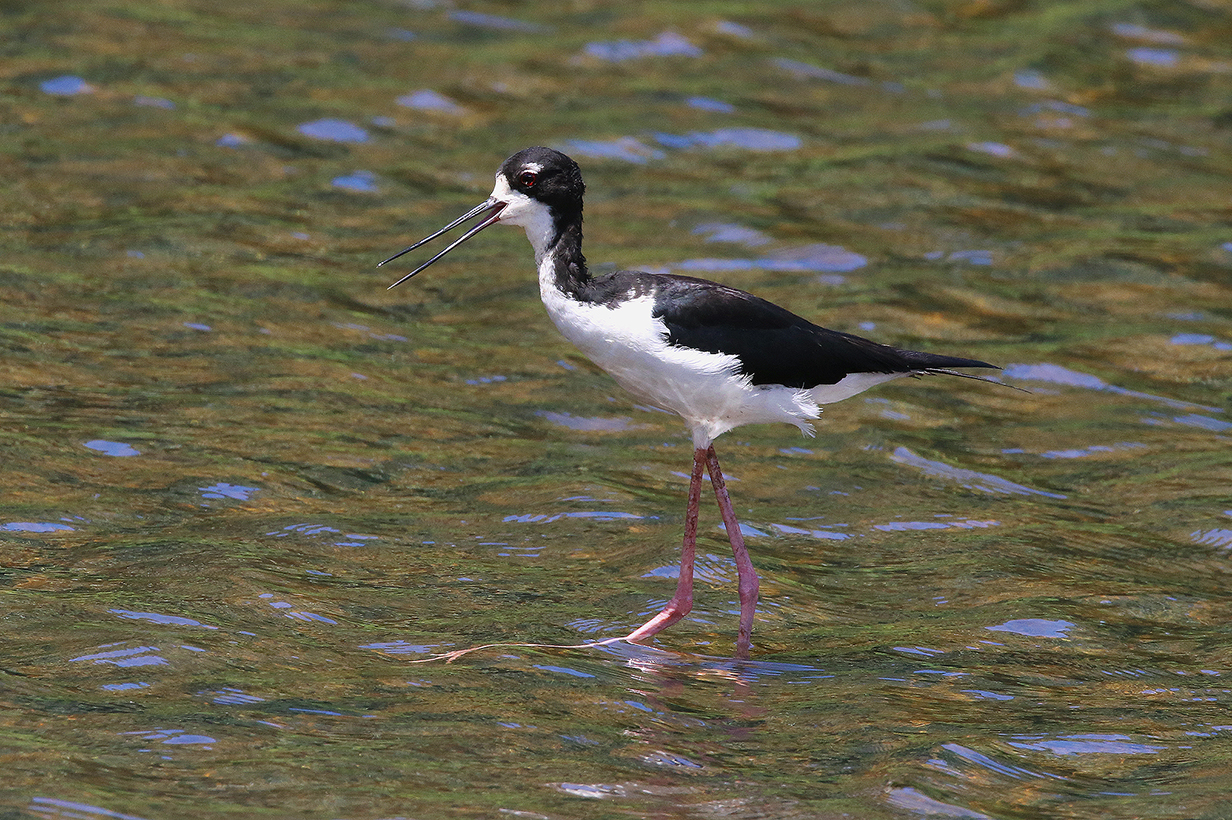
Black-necked stilt (Hawaiian race: Himantopus mexicanus knudseni: Hanalei NWR, Kauai, June 2017)
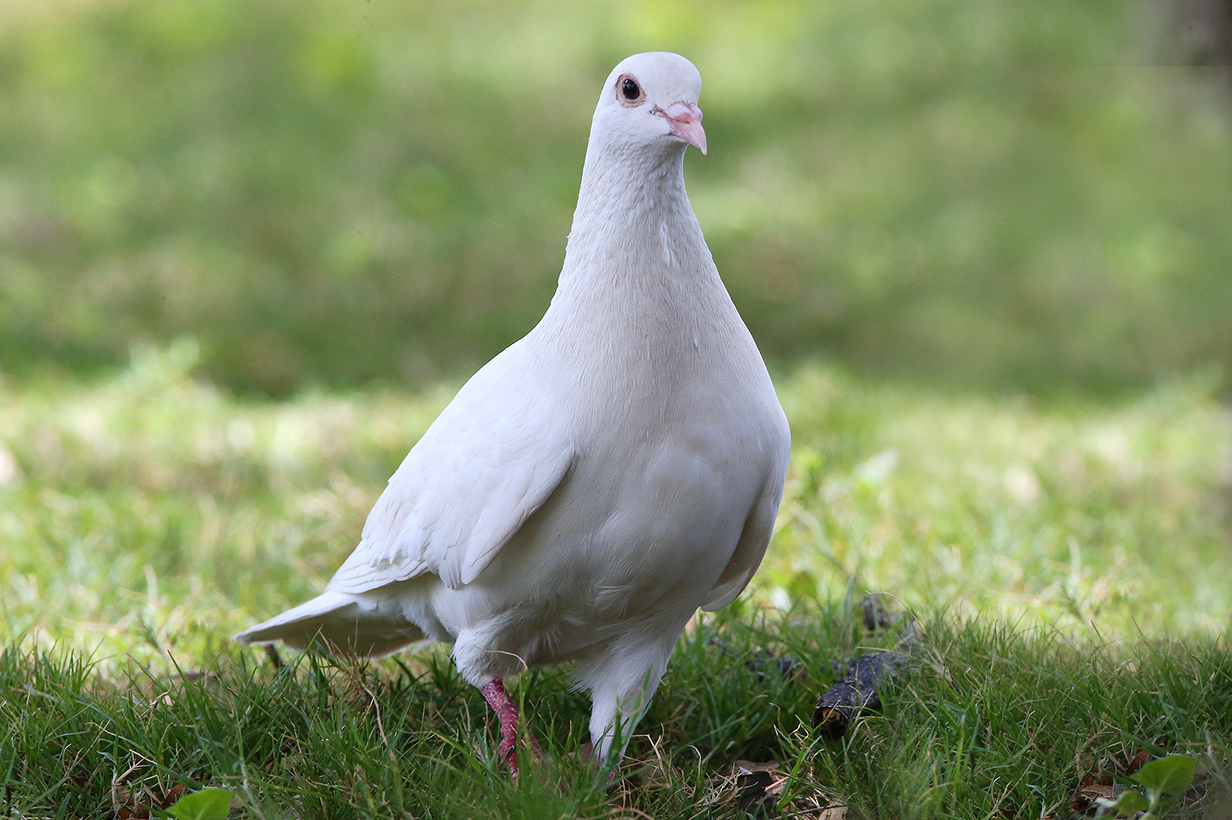
Rock dove (The Hawaiian morph is often pure white: Honolulu, June 2017)

Spotted dove (Makapu'u Point, Oahu, June 2017)
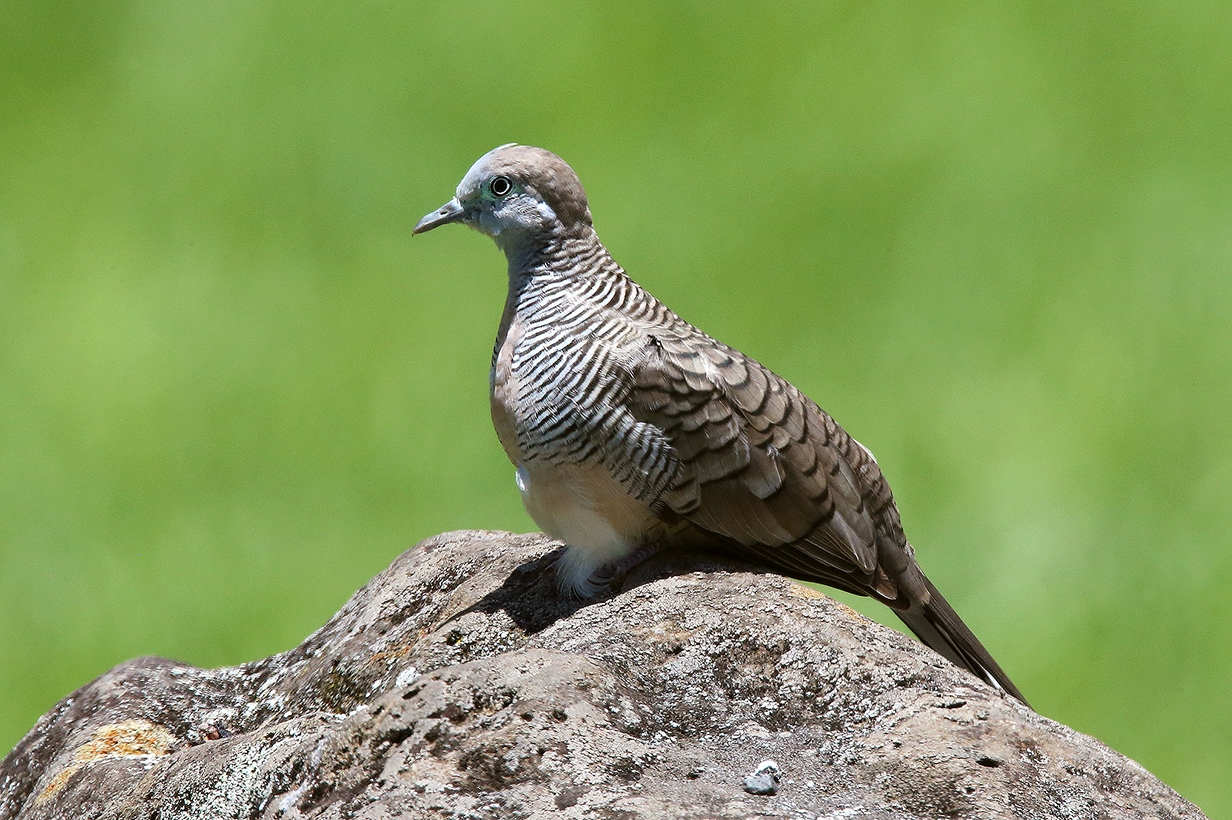
Zebra dove (Kokee Natural History Museum grounds, Kauai, June 2017) This bird (Geopelia striata) is split from Australia's Peaceful dove (Geopelia placida), according to Clements 2016. It is, however, the same as Zebra dove in the Seychelles.
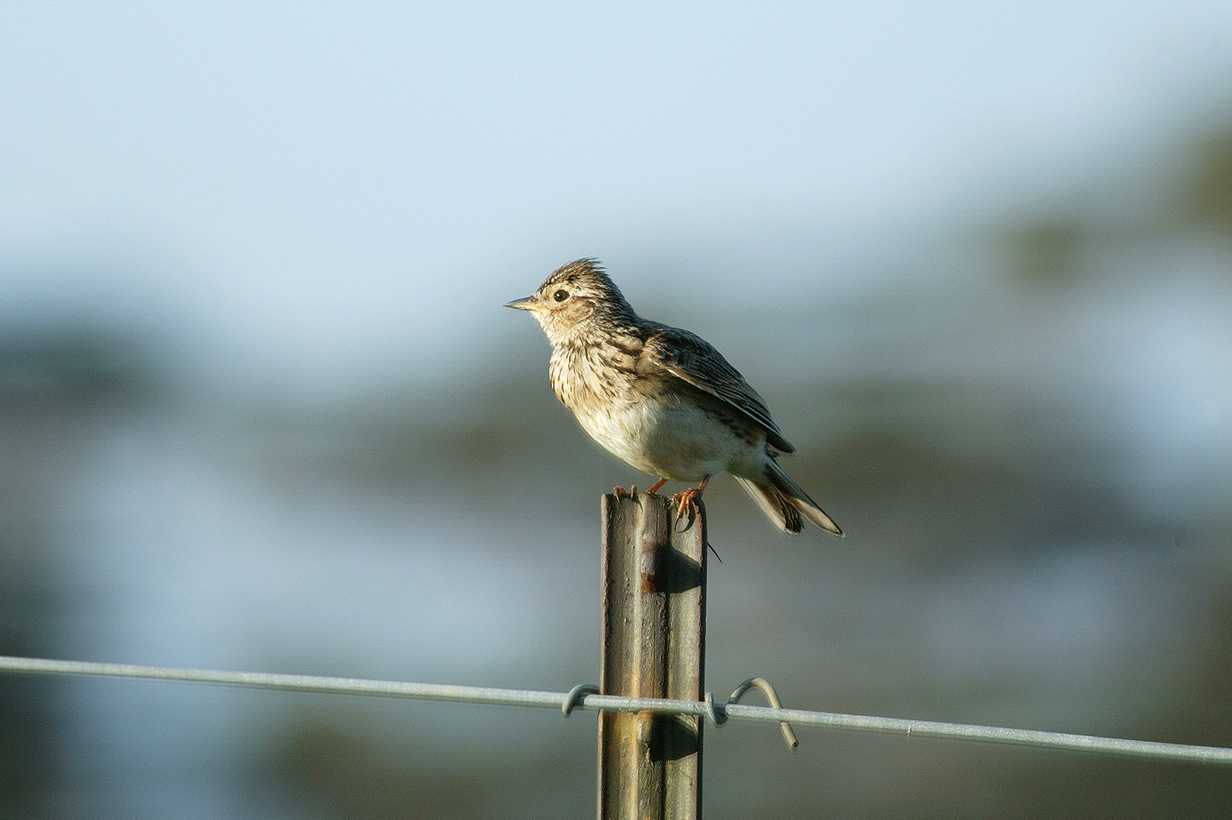
Eurasian skylark (Saddle road, Big Island, January 2009)
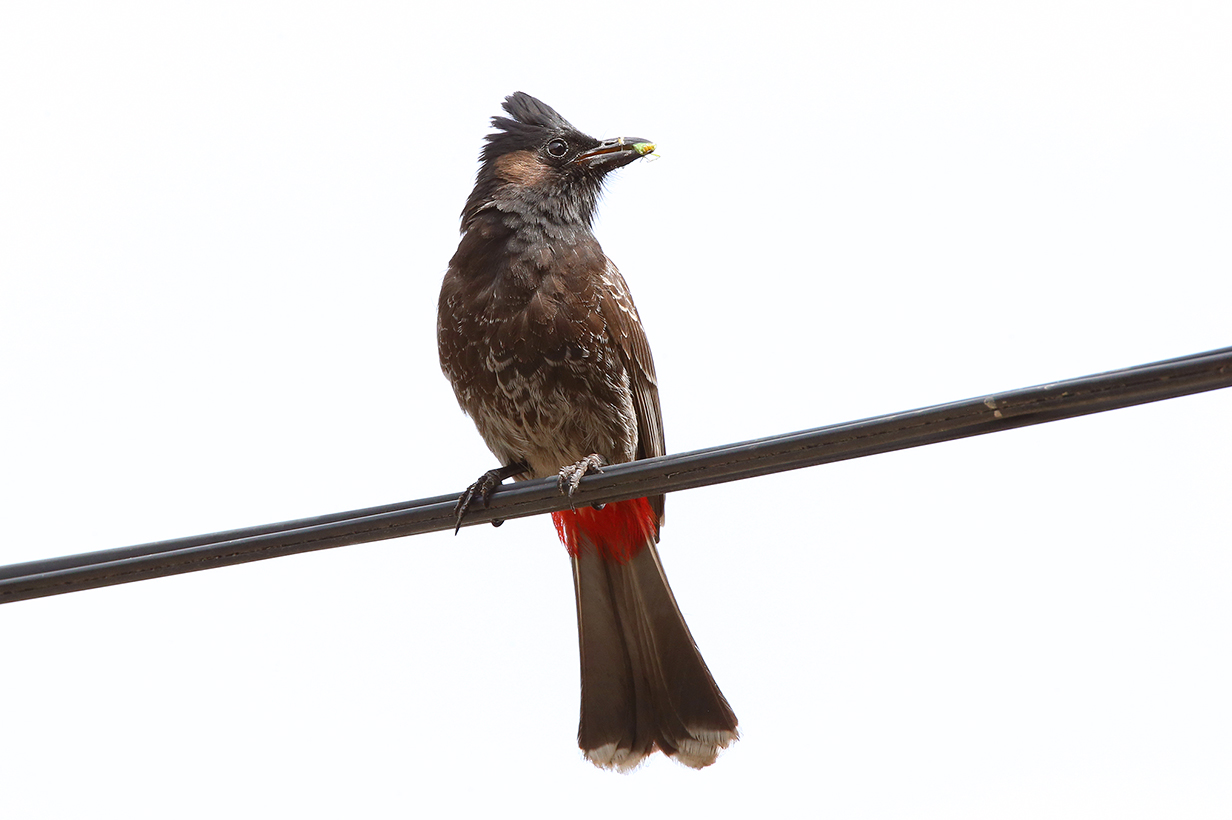
Red-vented bulbul (Oahu, June 2017)
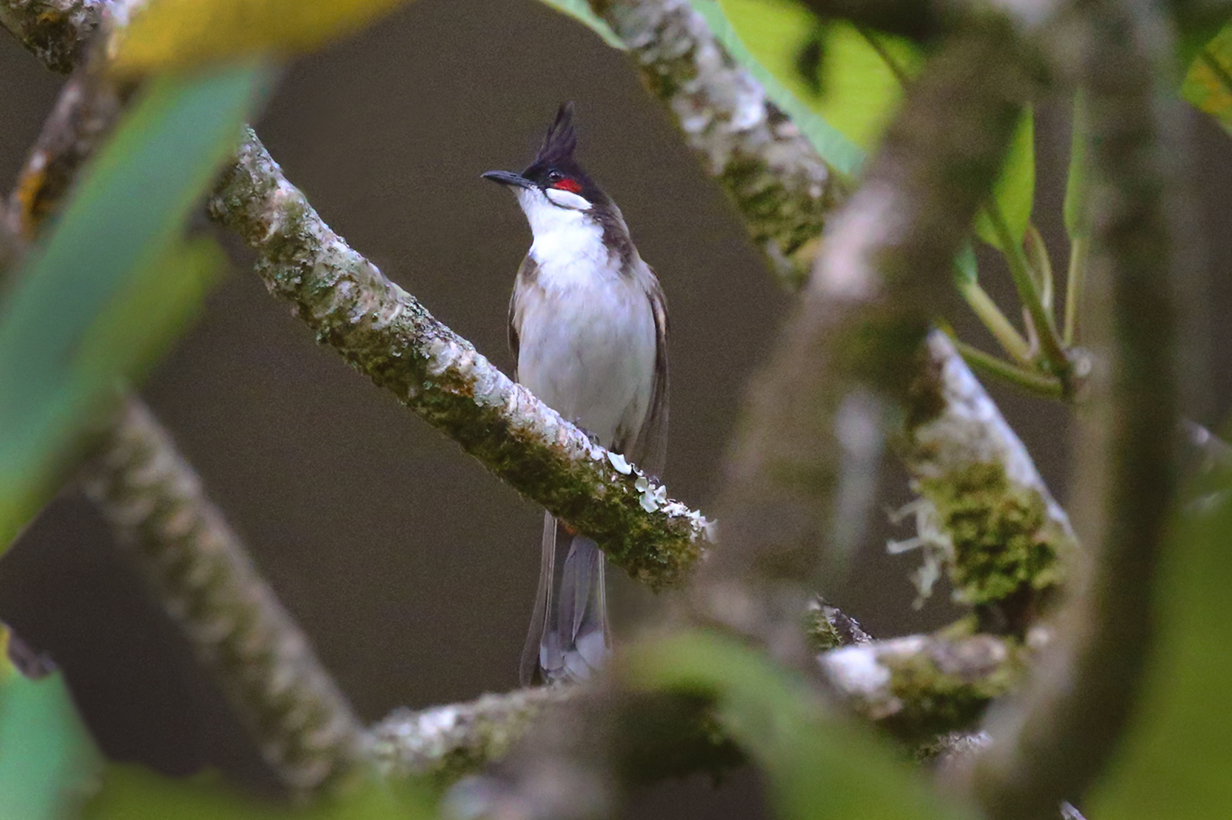

Red-whiskered bulbul (Oahu, June 2017)
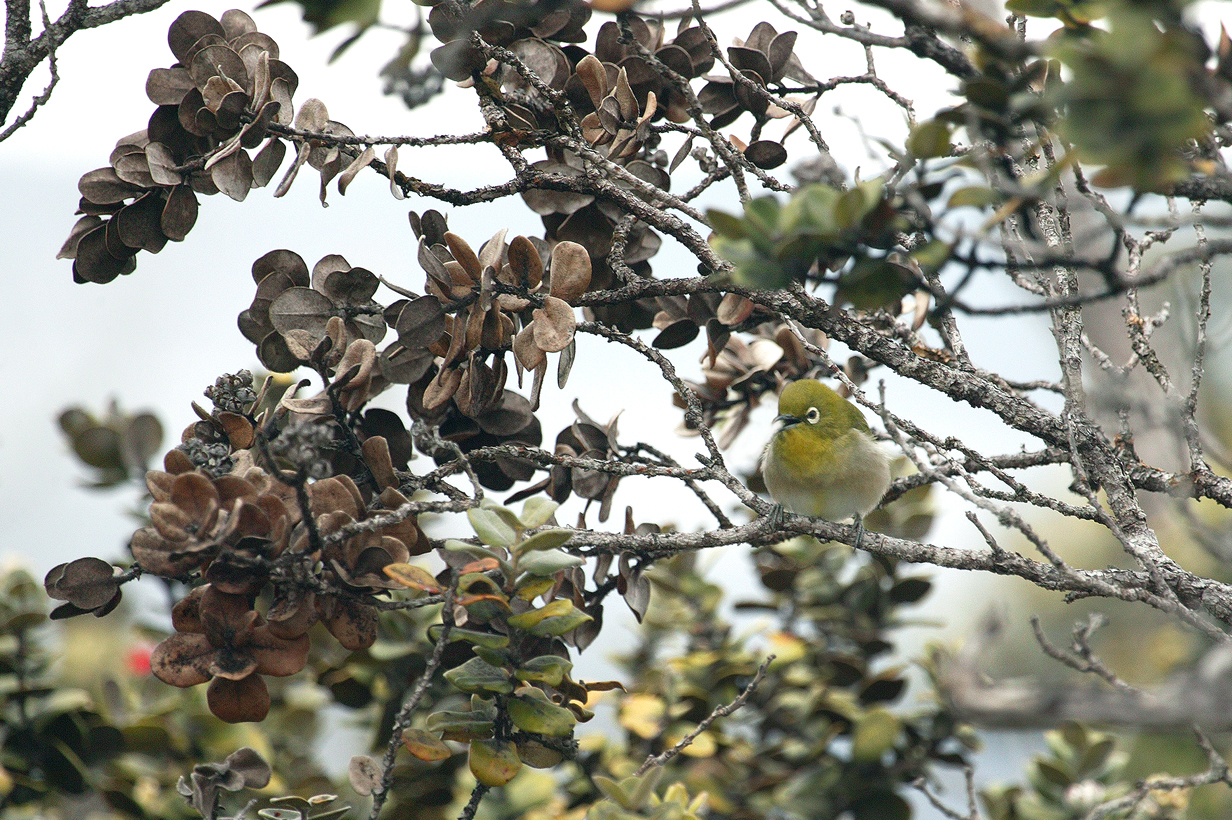
Japanese white-eye (Big Island, January 2009)
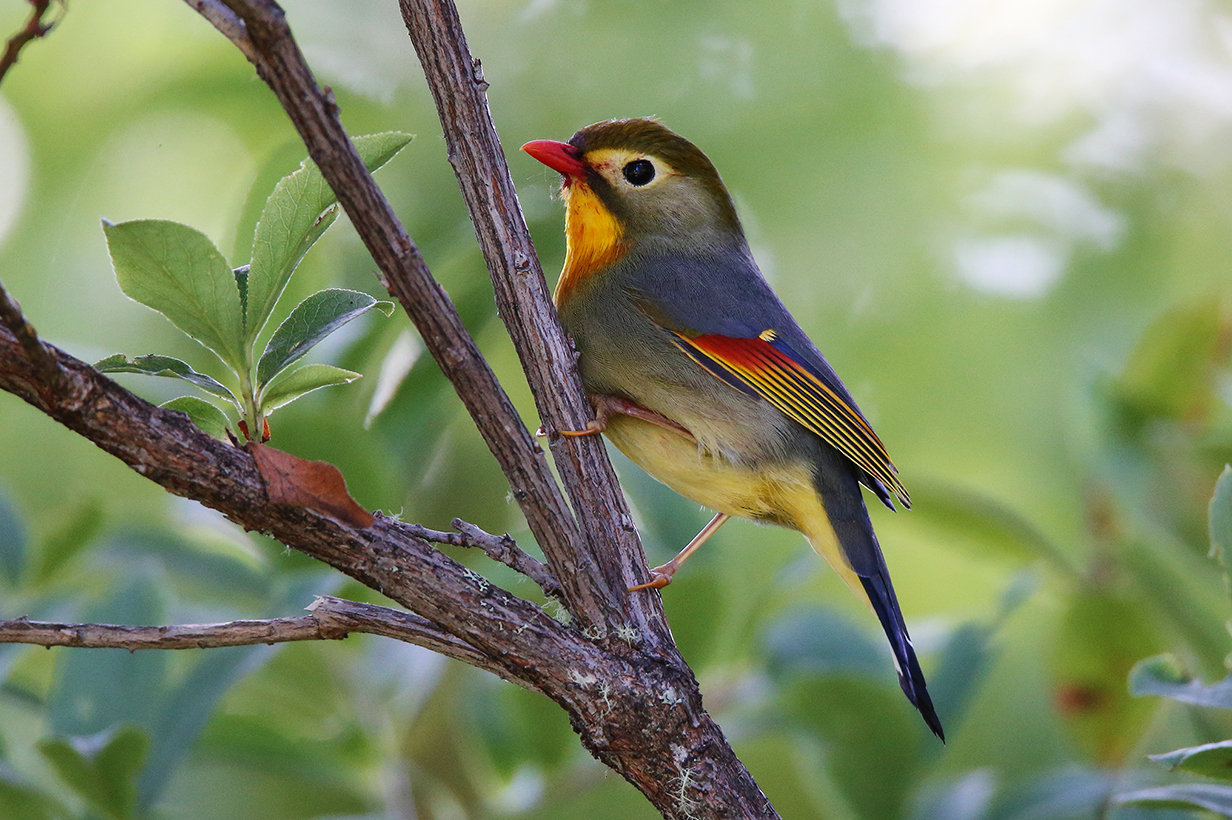
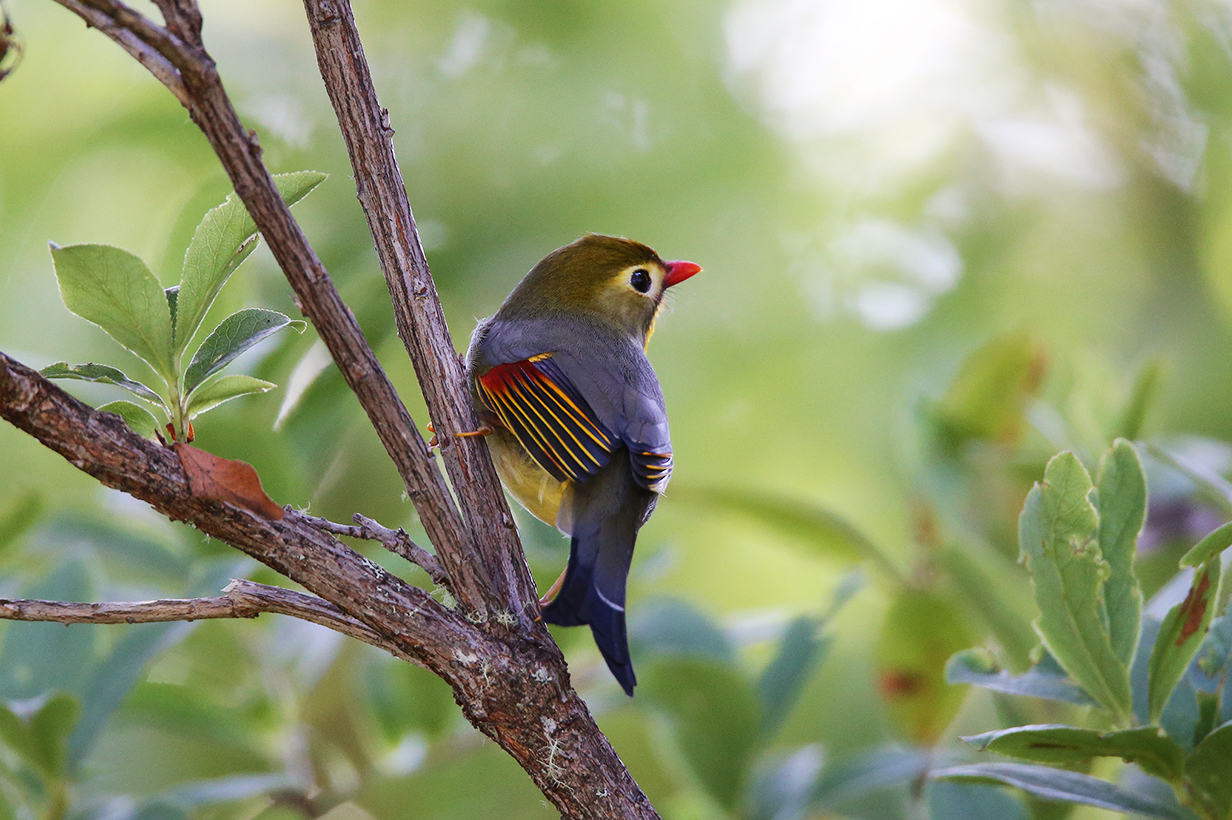
Red-billed leiothrix (Hakalau NWR, June 2017)
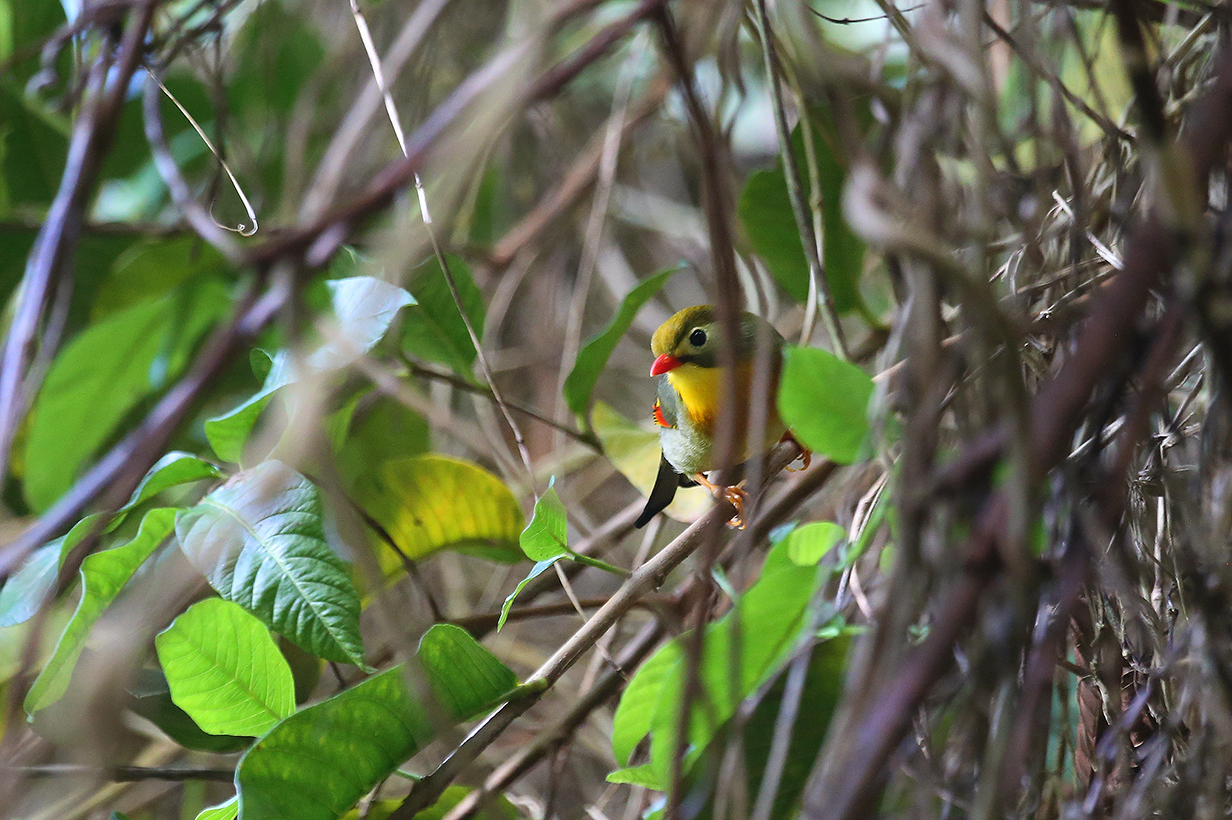
Red-billed leiothrix (Oahu, June 2017)
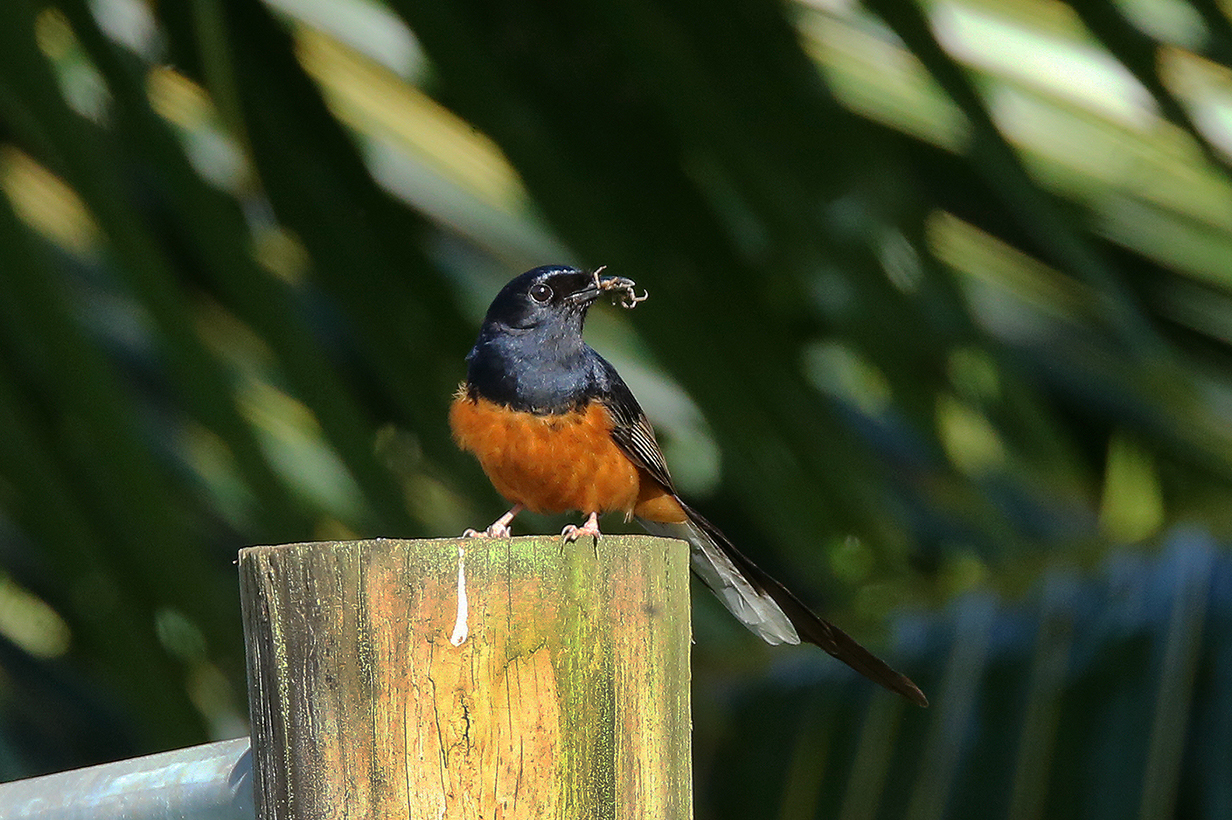
White-rumped shama (Near Kilauea Point NWR, Kauai, June 2017)
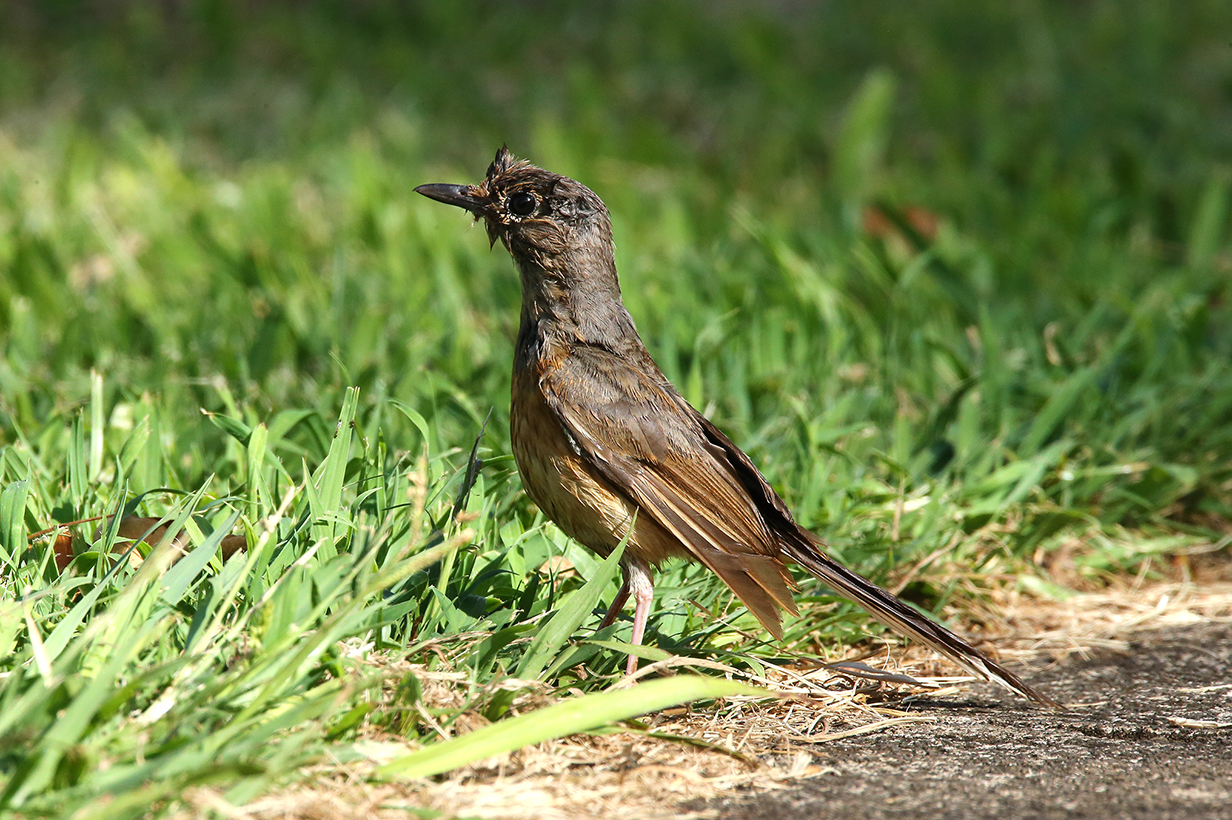
White-rumped shama (Juvenile: Near Kilauea Point NWR, Kauai, June 2017)

Northern mockingbird (Pu'ukohala Heiau National Historic Site, Big Island, June 2017)

Common myna (Hapuna Beach Hotel grounds, Big Island, June 2017)

Red-crested cardinal (Near Kilauea Point NWR, June 2017)
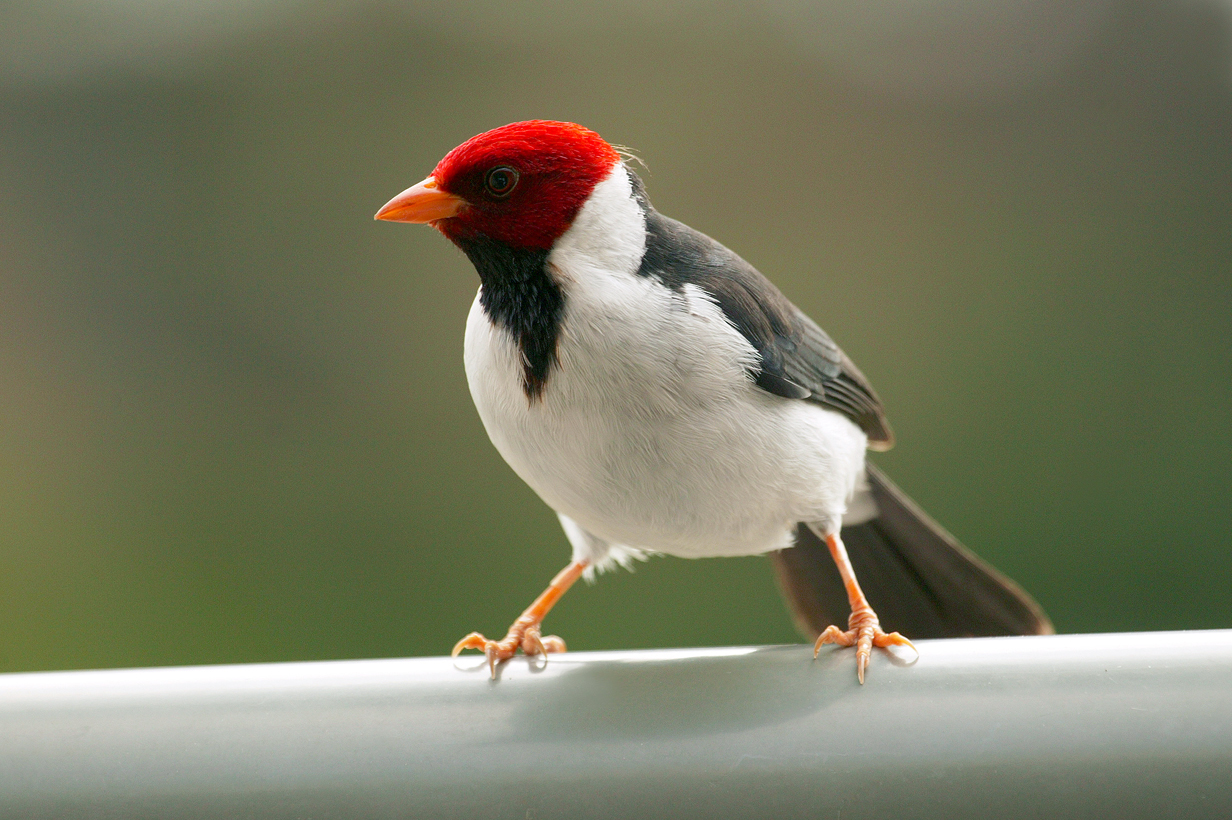
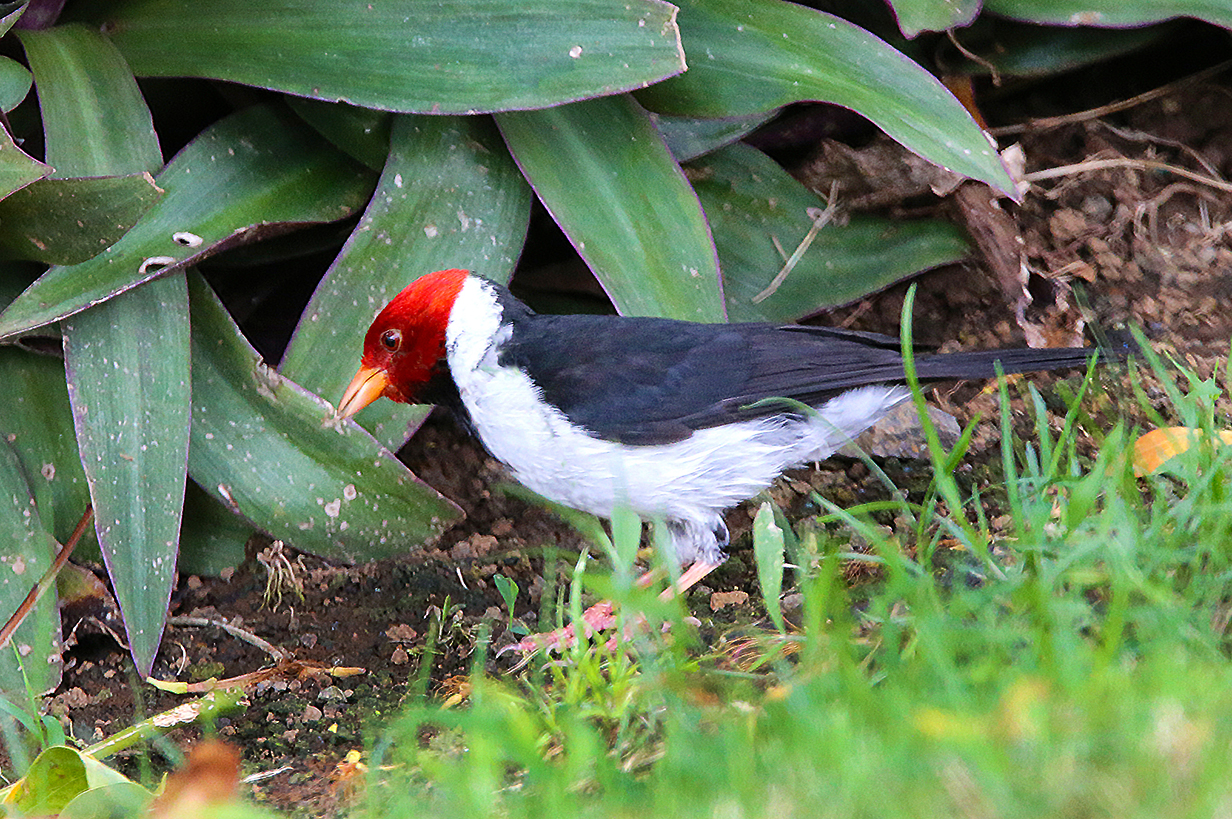
Yellow-billed cardinal (Hapuna Beach Hotel grounds, Big Island, January 2009 [above] and June 2017 [below])

Yellow-billed cardinal (Hapuna Beach Hotel grounds, Big Island, June 2017) This is a fledgling, ready to face the world ... but not quite up to it. Looking expectant.
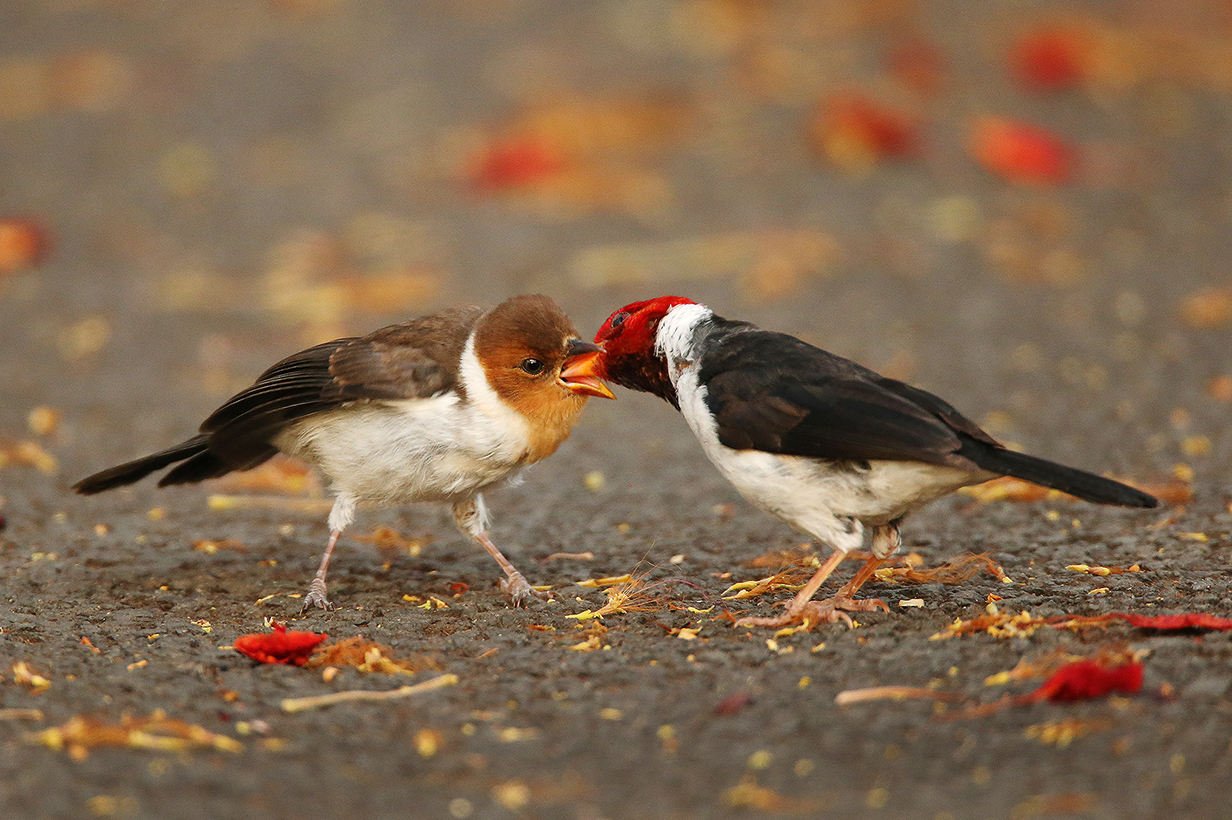
Here's why: Yellow-billed cardinal fledgling being fed by a parent
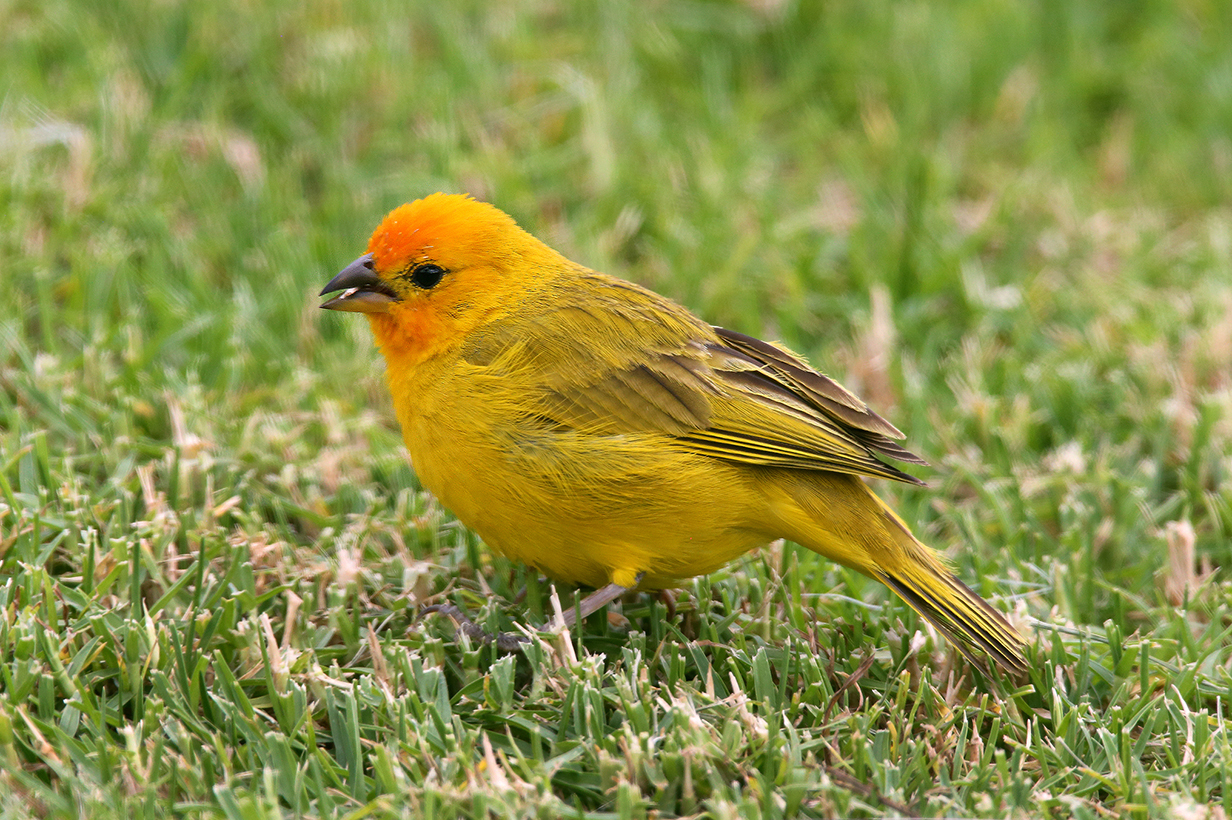
Saffron finch (Big Island Country Club grounds, June 2017)
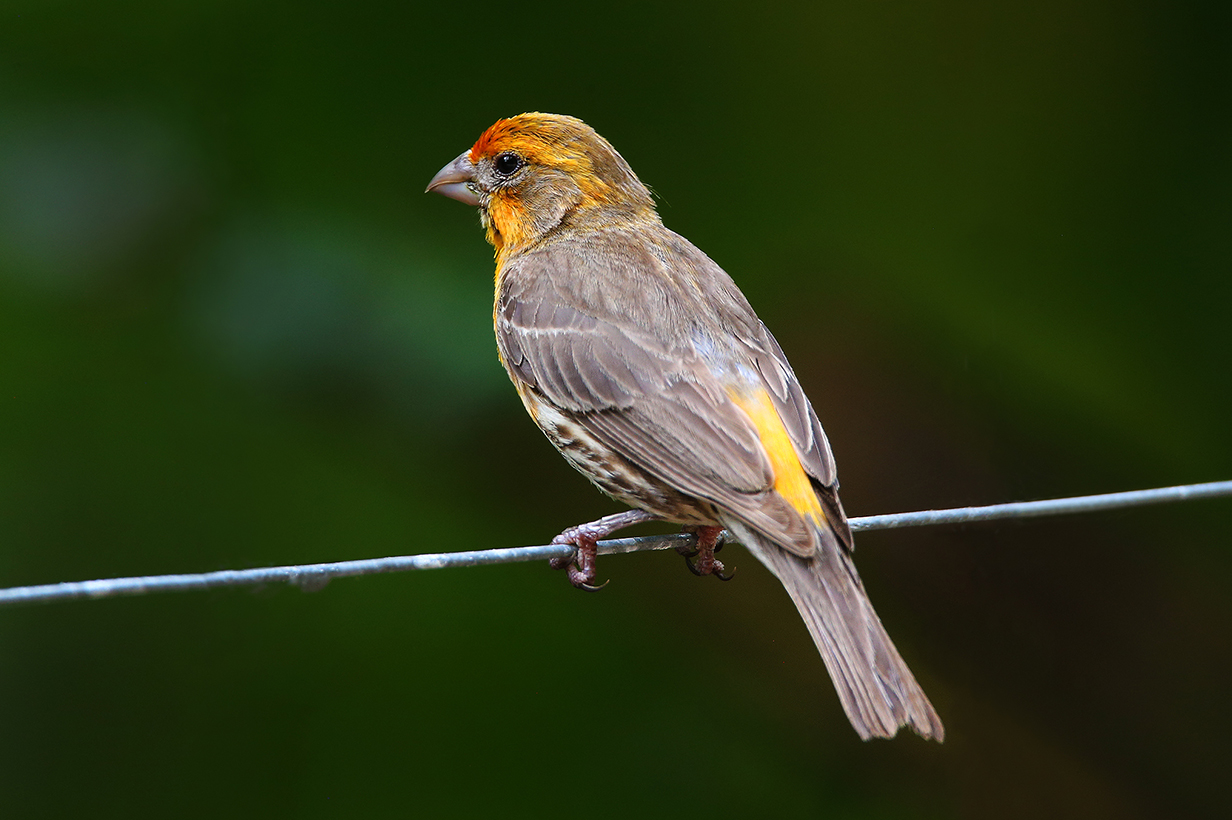
House finch (Many Hawaiian House finches are more yellow than red because of a lack of the carotenids in their diet that gives North American birds their red color. This bird was photographed in the forests just windward of the Pali cliffs on Oahu, June 2017.)
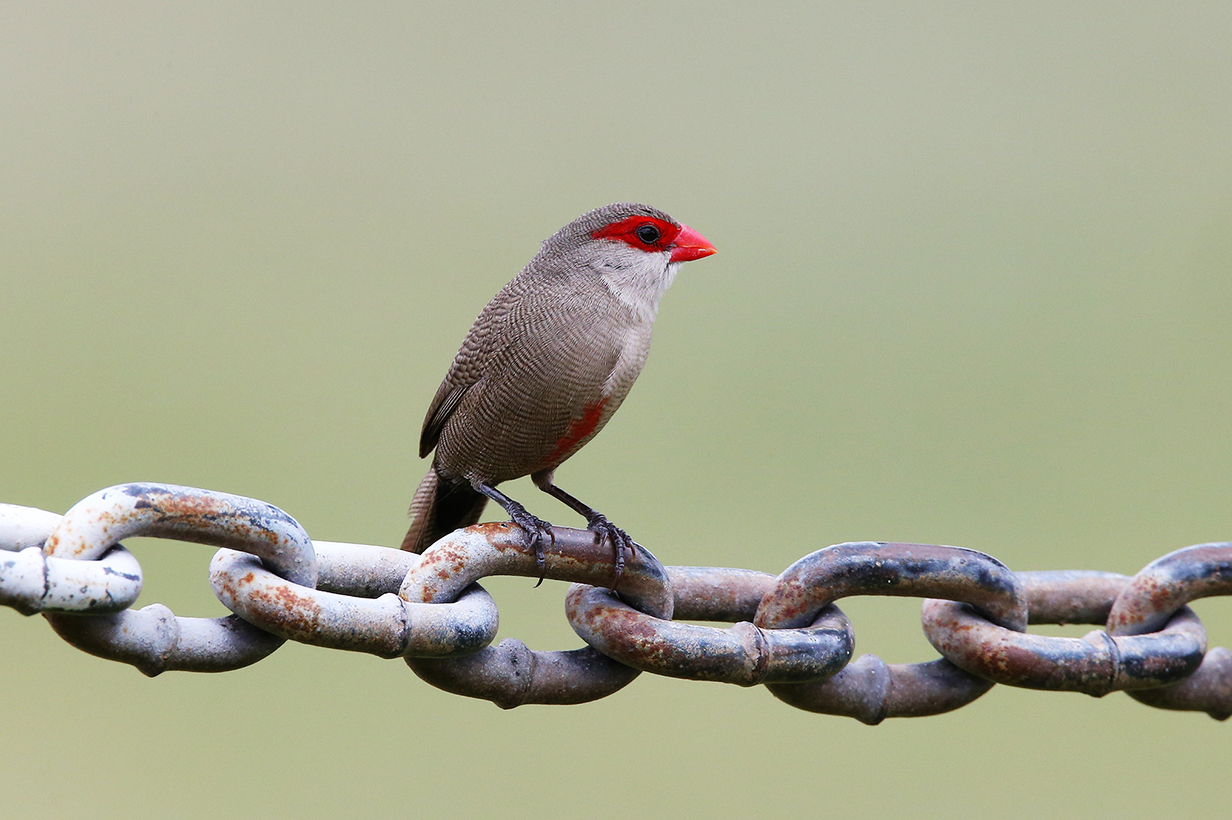
Common waxbill (Kaneohe, Oahu, June 2017)
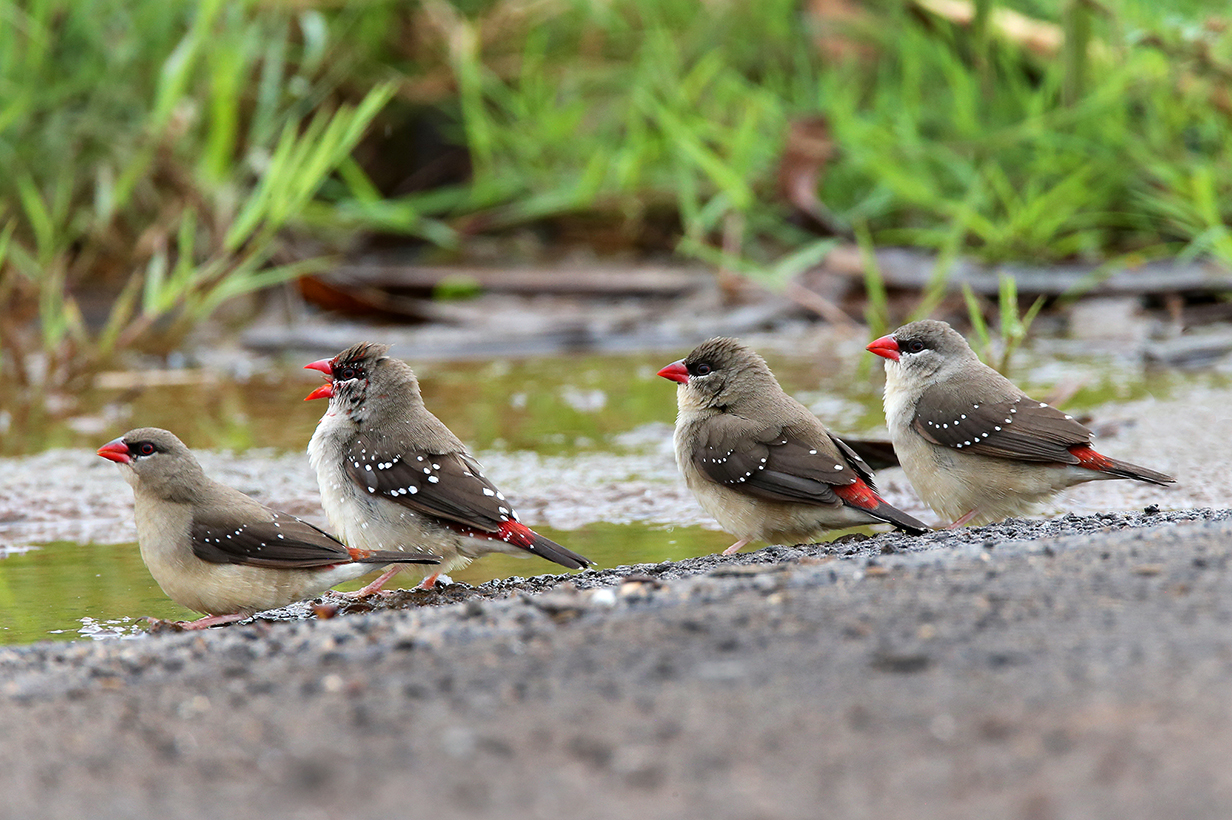
Red avadavat (non-breeding plumage in June 2017; far western Kauai)
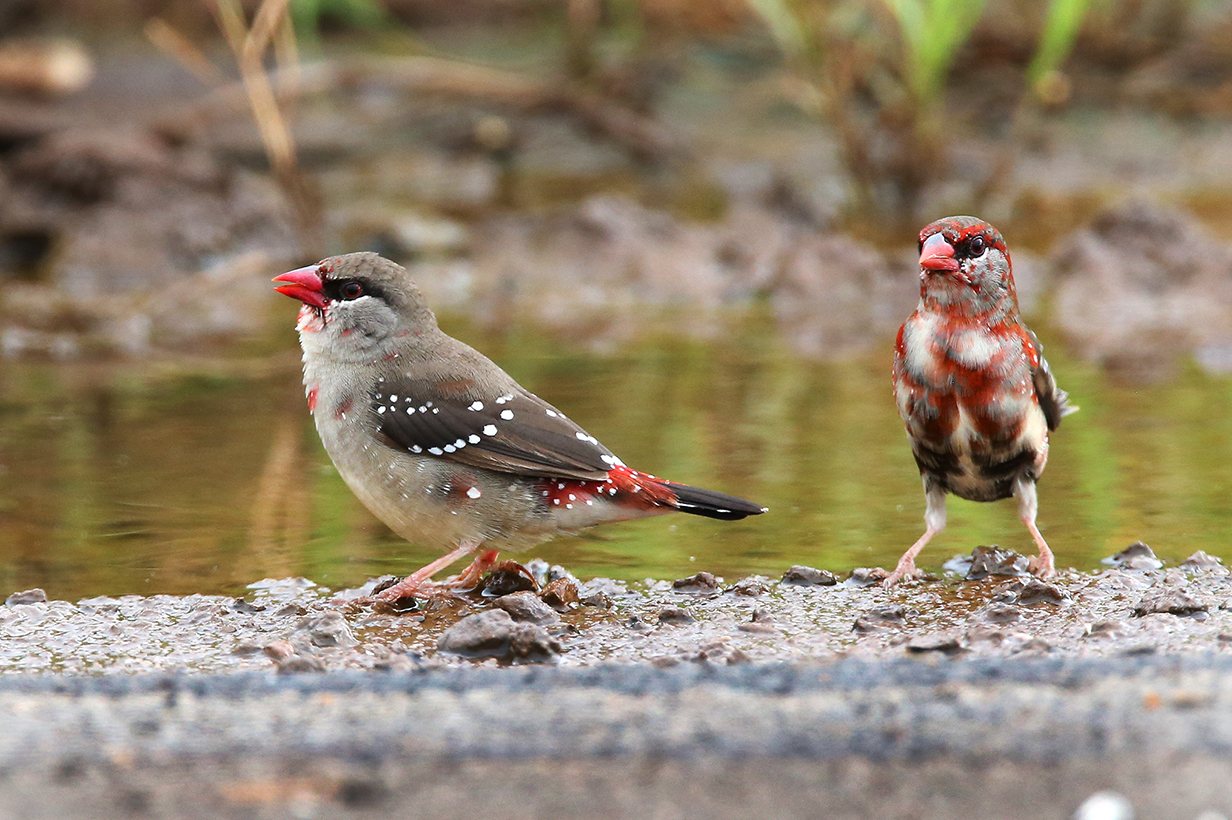
Red avadavat (To quote Ogden Nash: "When they're moulting, they're pretty revolting." Far western Kauai, June 2017)
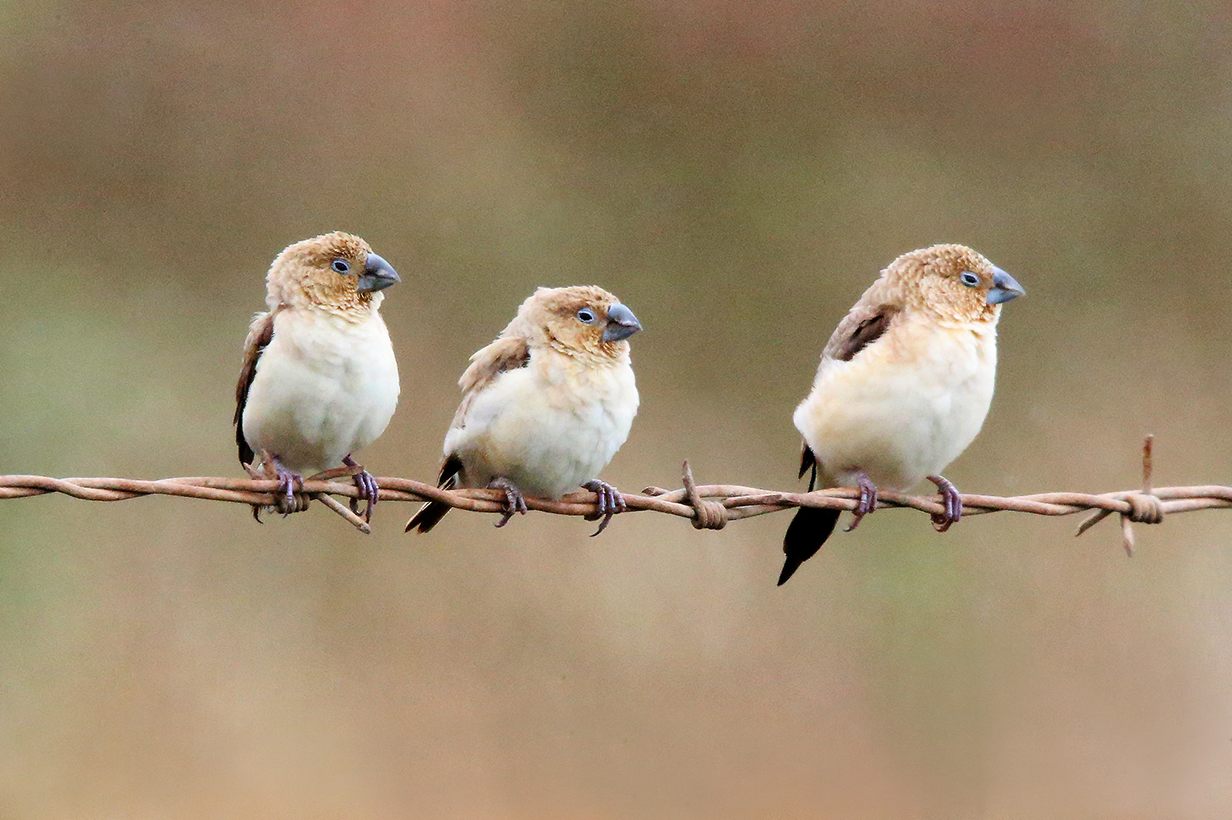
African silverbill (called Warbling silverbill in Hawaii; far western Kauai, June 2017)
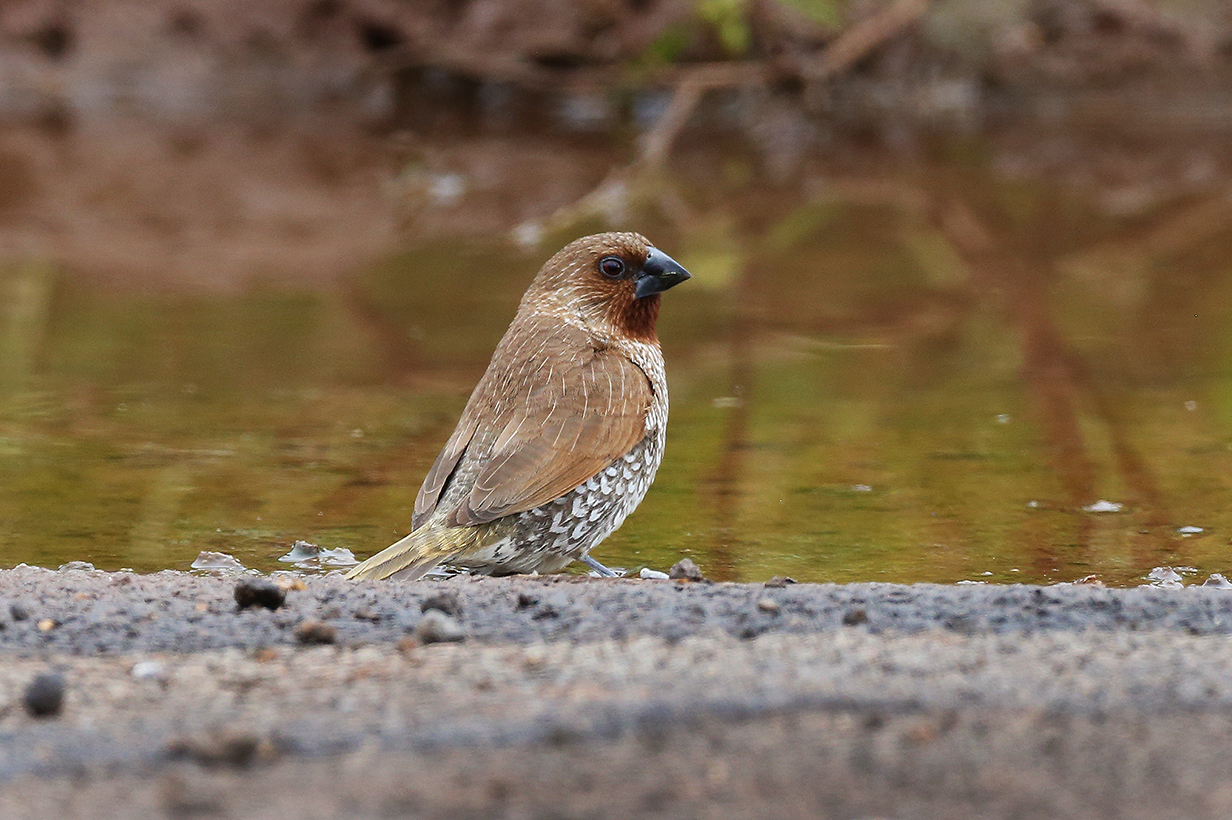
Scaly-breasted munia (called Nutmeg manakin in Hawaii; far western Kauai, June 2017) In the evening after a short rain, four species of grass birds (Red avadavat, Scaly-breasted munia, Chestnut munia, and African silverbill) came repeatedly in small flocks to a roadside puddle of water to drink. They were nervous and "spooked" repeatedly but always quickly came back. This reminded me charmingly of water holes in South Africa and how many animals of many species come -- always warily, because predators lurk -- to drink in the evening.
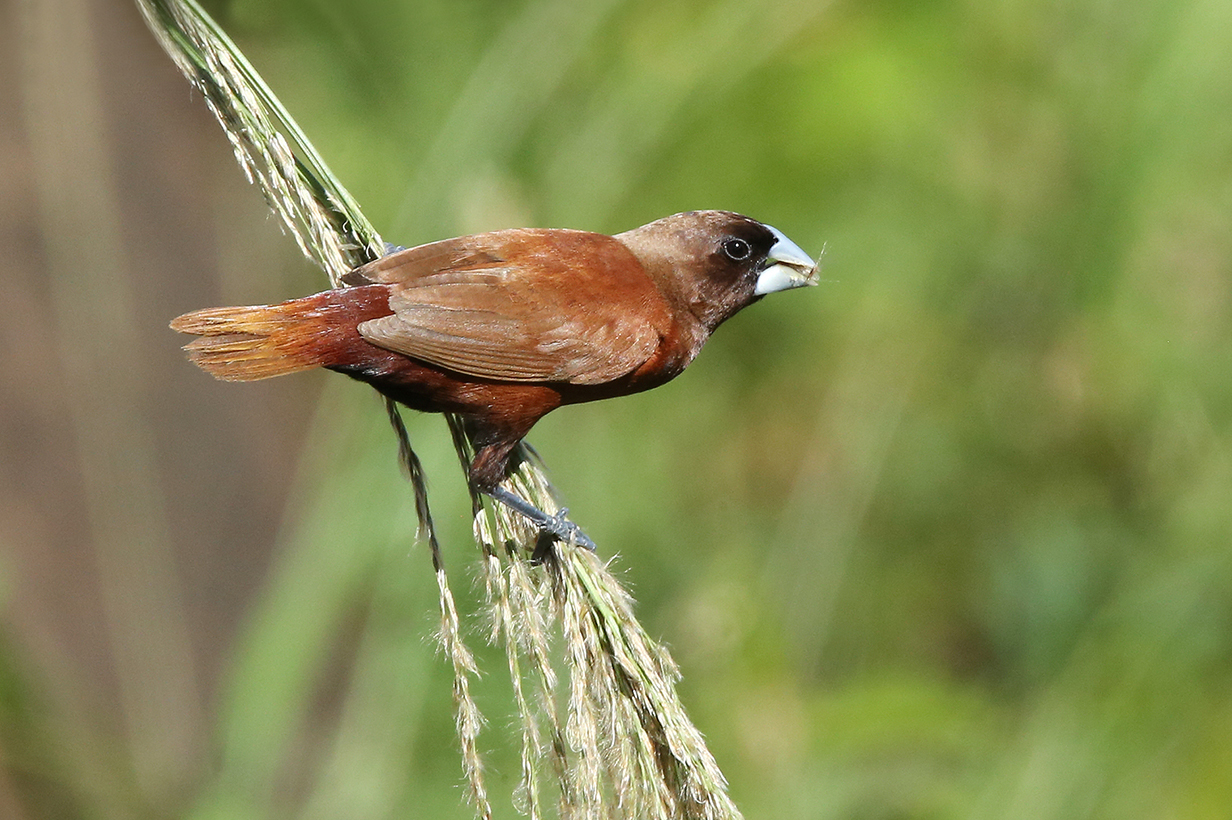
Chestnut munia (Kaneohe, Oahu, June 2017)
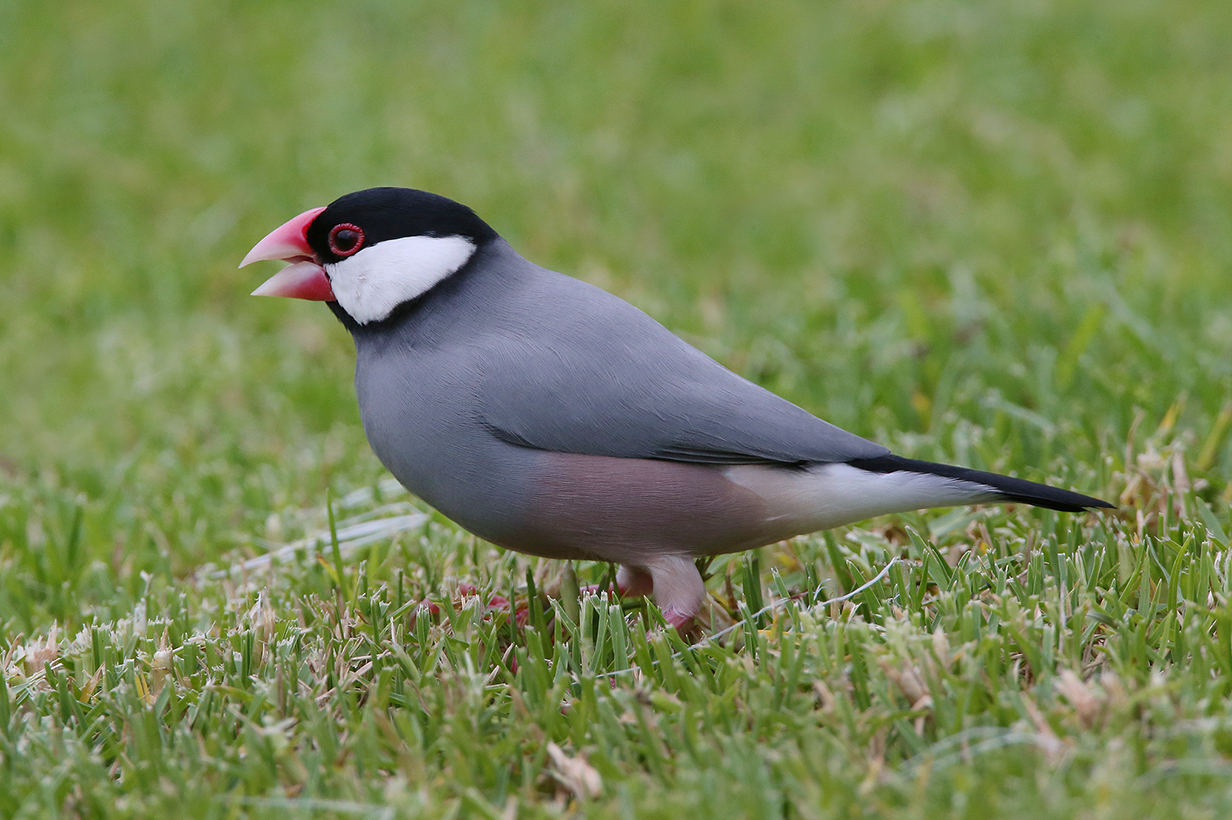
Java sparrow (Big Island Country Club grounds, June 2017)

Yellow-fronted canary (Pu'u La'au, June 2017)
Vagrant Birds of Hawaii
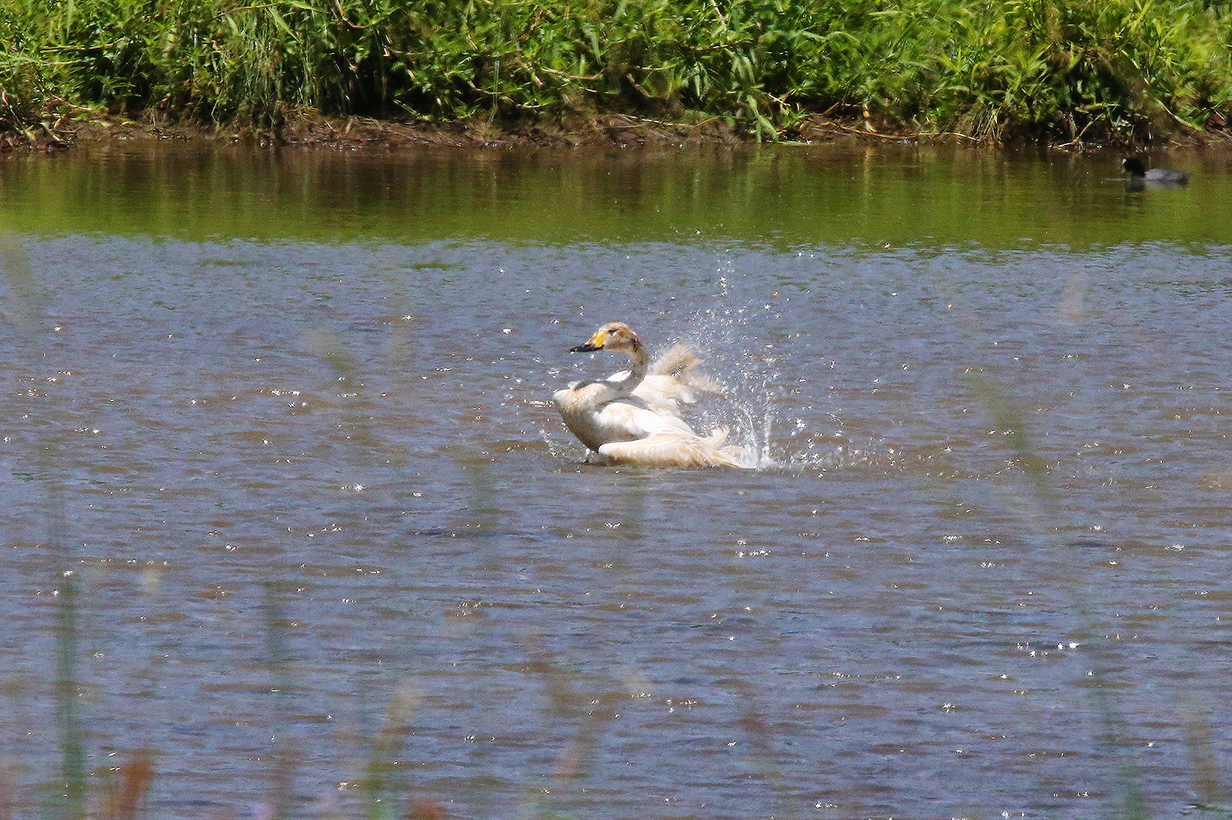

Tundra (Bewick's) swan having a great time (Cygnus columbianus bewickii: Hanalei NWR, Kauai, June 2017) This is actually our life bird.
Our bird pictures from around the world follow standard ecozones approximately but not exactly:
Birds from the USA and Canada: our house, Hornsby Bend and greater Austin, Texas, California, Hawaii, Canada,
Neotropic birds from Central America and the Caribbean: Honduras, Costa Rica, Panama, Trinidad and Tobago
Neotropic birds from South America: Ecuador, Ecuador 2017, Brazil.
Western palearctic birds: Europe: Germany, Finland, Norway, Europe: United Kingdom, Europe: Spain, the Canary Islands, Europe: Lesbos, Greece, Israel
Eastern palearctic birds: China
Birds from Africa: The Gambia, South Africa
Indo-Malayan birds from India: North-west (Delhi, Uttar Pradesh, Uttarakhand) India: North-east (Assam, Arunachal Pradesh, Meghalaya) India: Central (Maharashtra, Madhya Pradesh)
Birds from Australia, New Zealand.
For our 2014 December trip to India, see this travelog.
For our 2016 May-June trip to India, see this travelog.
For our 2017 April trip to High Island, Texas, see this web site.
For our 2018 March trip to India, see this travelog.
For our 2018 May trip to China, see this travelog.
For our 2018 November trip to China, see this travelog.
For our 2019 April trip to High Island, Texas, see this web site.
For our 2019 July trip to China, see this web site.
For our 2021 April trip to High Island, Texas, see this web site.
For our 2021 December trip to Ecuador, see this web site.
For our 2022 January trip to Peru, see this web site.
For our 2022 July-August trip to Australia and Papua New Guinea, see this web site.
For our 2022 September trip to Bolivia, see this web site.
For our 2022 November-December pre-trip to Argentina (before our Antarctic cruise), see this web site.
For our 2022 November-December cruise to Antarctica, see this web site.
For our 2023 January birding in Chile, see this web site.
For our 2023 January-March cruise from Chile to Antarctica and around South America to Miami, FL, see this web site.
For our 2023 March-April birding in south Florida (after the Seabourn cruise), see this web site.
For our 2023 November-December birding to Sri Lanka, the Andaman Islands, and South India, see this web site.
For John's 2024 February-March birding in Colombia, see this web site.
For our 2024 May-June cruise from Iceland to Jan Mayen Island to and around the Svalbard Archipelago, see the present web site.
For our 2024 June 25-30 stay in Paris, see this web site.
For our 2025 April 21 - May 3 trip to High Island, Texas, see this web site.